2025-07-14 12:24:00
Diana Engelmann
Filip Shatlan
Gainesville, Florida , United States
United States
NOAA-18
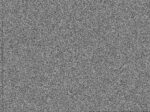
2025-07-13 23:56:00
Diana Engelmann
Filip Shatlan
Gainesville, Florida , United States
United States
NOAA-18

2025-07-13 12:37:00
Diana Engelmann
Filip Shatlan
Gainesville, Florida , United States
United States
NOAA-18

2025-07-08 23:21:00
Diana Engelmann
Filip Shatlan
Gainesville, Florida , United States
United States
NOAA-18

2025-07-08 12:01:00
Diana Engelmann
Filip Shatlan
Gainesville, Florida , United States
United States
NOAA-18

2025-07-04 20:17:00
Svalbard
Longyearbyen, Svalbard
Svalbard
NOAA-18

2025-07-03 20:30:00
Svalbard
Longyearbyen, Svalbard
Svalbard
NOAA-18

2025-06-30 23:23:00
Diana Engelmann
Filip Shatlan
Gainesville, Florida , United States
United States
NOAA-18

2025-06-30 23:28:00
Goownown Growers
The Seaweed Institute
CAST, Helston, Cornwall, United Kingdom
United Kingdom
NOAA-18
2025-06-28 23:49:00
Diana Engelmann
Filip Shatlan
Gainesville, Florida , United States
United States
NOAA-18

2025-06-28 12:29:00
Diana Engelmann
Filip Shatlan
Gainesville, Florida , United States
United States
NOAA-18

2025-06-28 14:52:00
Svalbard
Longyearbyen, Svalbard
Svalbard
NOAA-18

2025-06-27 12:42:00
Diana Engelmann
Filip Shatlan
Gainesville, Florida , United States
United States
NOAA-18

2025-06-27 12:36:00
Goownown Growers
The Seaweed Institute
CAST, Helston, Cornwall, United Kingdom
United Kingdom
NOAA-18
2025-06-26 12:49:00
Goownown Growers
The Seaweed Institute
CAST, Helston, Cornwall, United Kingdom
United Kingdom
NOAA-18
2025-06-25 23:45:00
Foto Colectania
Hangar
Ràdio Web MACBA
Barcelona, Spain
Spain
NOAA-18

2025-06-25 13:02:00
Goownown Growers
The Seaweed Institute
CAST, Helston, Cornwall, United Kingdom
United Kingdom
NOAA-18
2025-06-24 23:58:00
Foto Colectania
Hangar
Ràdio Web MACBA
Barcelona, Spain
Spain
NOAA-18

2025-06-24 11:52:00
Cyprus Amateur Radio Society (CY)
Nicosia , Cyprus
Cyprus
NOAA-18

2025-06-24 10:51:00
Oppressive Heat Project (KH)
Phnom Penh, Cambodia
Cambodia
NOAA-18

2025-06-23 22:57:00
Tsonami Arte Sonoro (CL)
Valparaiso, Chile
Chile
NOAA-18

2025-06-23 11:05:00
Oppressive Heat Project (KH)
Phnom Penh, Cambodia
Cambodia
NOAA-18

2025-06-22 23:30:00
Goownown Growers
The Seaweed Institute
CAST, Helston, Cornwall, United Kingdom
United Kingdom
NOAA-18
2025-06-22 12:57:00
Foto Colectania
Hangar
Ràdio Web MACBA
Barcelona, Spain
Spain
NOAA-18

2025-06-21 22:39:00
Oppressive Heat Project (KH)
Phnom Penh, Cambodia
Cambodia
NOAA-18
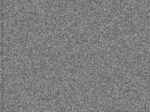
2025-06-20 23:51:00
Diana Engelmann
Filip Shatlan
Gainesville, Florida , United States
United States
NOAA-18

2025-06-20 12:32:00
Diana Engelmann
Filip Shatlan
Gainesville, Florida , United States
United States
NOAA-18

2025-06-18 22:50:00
Cyprus Amateur Radio Society (CY)
Nicosia , Cyprus
Cyprus
NOAA-18

2025-06-18 12:47:00
Goownown Growers
The Seaweed Institute
CAST, Helston, Cornwall, United Kingdom
United Kingdom
NOAA-18

2025-06-17 23:18:00
Zack Wettstein (US)
Seattle, United States
United States
NOAA-18

2025-06-17 22:51:00
Gilboa, New York (US)
Gilboa, New York, United States
United States
NOAA-18

2025-06-17 23:47:00
Foto Colectania
Hangar
Ràdio Web MACBA
Barcelona, Spain
Spain
NOAA-18

2025-06-17 23:03:00
Cyprus Amateur Radio Society (CY)
Nicosia , Cyprus
Cyprus
NOAA-18

2025-06-17 11:05:00
Iterable pueyrredon (AR)
Cordoba , Argentina
Argentina
NOAA-18

2025-06-17 10:41:00
Oppressive Heat Project (KH)
Phnom Penh, Cambodia
Cambodia
NOAA-18

2025-06-16 23:05:00
Gilboa, New York (US)
Gilboa, New York, United States
United States
NOAA-18

2025-06-16 22:47:00
Tsonami Arte Sonoro (CL)
Valparaiso, Chile
Chile
NOAA-18

2025-06-17 10:13:00
Jo Pollitt
Rumen Rachev
Perth , Australia
Australia
NOAA-18

2025-06-16 12:01:00
Tsonami Arte Sonoro (CL)
Valparaiso, Chile
Chile
NOAA-18

2025-06-16 11:18:00
Iterable pueyrredon (AR)
Cordoba , Argentina
Argentina
NOAA-18

2025-06-15 23:56:00
Derrick Yohn
Transfer, Pennsylvania, United States
United States
NOAA-18


FLY BY - Ode to NOAA-18
I watched and I waited as you were set to fly by
A perfect night for reception, as we had a clear sky
As you grew near, there wasn't a peep
all of your speaking instruments were all fast asleep
You are right over head! But the static remains
I messed with the volumes, I messed with the gains
I watched on my tracker as you slowly flew by
my S-meter grounded, the waterfall was dry
We bid you farewell, oh watcher of the sky
and I will always remember you, as you silently fly by
2025-06-15 23:17:00
Gilboa, New York (US)
Gilboa, New York, United States
United States
NOAA-18

2025-06-15 23:00:00
Tsonami Arte Sonoro (CL)
Valparaiso, Chile
Chile
NOAA-18

2025-06-15 23:57:00
Iterable pueyrredon (AR)
Cordoba , Argentina
Argentina
NOAA-18

2025-06-16 10:25:00
Jo Pollitt
Rumen Rachev
Perth , Australia
Australia
NOAA-18

2025-05-15 23:09:16
Audrey Briot
Merzouga, Morocco
Morocco
NOAA-18



At night, life, elements and forces draw the star of Morocco.
2025-06-15 12:15:00
Zack Wettstein (US)
Seattle, United States
United States
NOAA-18

2025-06-15 11:31:00
Iterable pueyrredon (AR)
Cordoba , Argentina
Argentina
NOAA-18

2025-06-14 23:58:00
Zack Wettstein (US)
Seattle, United States
United States
NOAA-18

2025-06-14 23:32:00
Gilboa, New York (US)
Gilboa, New York, United States
United States
NOAA-18

2025-06-15 10:38:00
Jo Pollitt
Rumen Rachev
Perth , Australia
Australia
NOAA-18

what to do with disappearance . . ... > when white noise is pervasive, skies are unshared, what of this repeated body of noise, resonant, insistent, what of this resistance / / . . . } - /\
2025-06-14 23:29:00
Goownown Growers
The Seaweed Institute
CAST, Helston, Cornwall, United Kingdom
United Kingdom
NOAA-18

2025-06-14 12:28:00
Zack Wettstein (US)
Seattle, United States
United States
NOAA-18

2025-06-14 22:30:00
Oppressive Heat Project (KH)
Phnom Penh, Cambodia
Cambodia
NOAA-18

2025-06-14 23:18:00
Jo Pollitt
Rumen Rachev
Perth , Australia
Australia
NOAA-18

2025-06-14 11:43:00
Iterable pueyrredon (AR)
Cordoba , Argentina
Argentina
NOAA-18

2025-06-14 13:00:00
Foto Colectania
Hangar
Ràdio Web MACBA
Barcelona, Spain
Spain
NOAA-18

2025-06-13 12:40:00
Zack Wettstein (US)
Seattle, United States
United States
NOAA-18

2025-06-13 12:22:00
Diana Engelmann
Filip Shatlan
Gainesville, Florida , United States
United States
NOAA-18

2025-06-13 22:42:00
Oppressive Heat Project (KH)
Phnom Penh, Cambodia
Cambodia
NOAA-18

2025-06-13 23:30:00
Jo Pollitt
Rumen Rachev
Perth , Australia
Australia
NOAA-18

2025-06-13 11:56:00
Iterable pueyrredon (AR)
Cordoba , Argentina
Argentina
NOAA-18

2025-06-12 12:34:00
Diana Engelmann
Filip Shatlan
Gainesville, Florida , United States
United States
NOAA-18

2024-12-12 21:54:12
clemens winkler
Berlin, Germany
Germany
NOAA-18




One of situated NOOA-18 readings as inspiration for a dramaturgical piece "Waiting for Satellite".
In this participatory play, new forms of dramaturgy emerge through our shared exploration of atmospheric phenomena—haunted by weather events, satellites, and cloud structures—as we attune to the invisible, question the origins and impacts of weather, re/pre/enacting weather events on stage. by MA students Anastazie, Annick, Frederik, Marla , Paolo, Szerafina, Yeganeh
2025-06-11 22:40:00
Cyprus Amateur Radio Society (CY)
Nicosia , Cyprus
Cyprus
NOAA-18

2025-06-11 12:33:00
Hospitalfield (UK)
Arbroath, Scotland
Scotland
NOAA-18

2025-06-10 23:08:00
Zack Wettstein
Seattle, United States
United States
NOAA-18

2025-06-10 22:53:00
Cyprus Amateur Radio Society
Nicosia , Cyprus
Cyprus
NOAA-18

2025-06-10 12:50:00
Goownown Growers
The Seaweed Institute
CAST, Helston, Cornwall, United Kingdom
United Kingdom
NOAA-18

2025-06-10 12:46:00
Hospitalfield
Arbroath, Scotland
Scotland
NOAA-18

2025-06-09 23:21:00
Zack Wettstein
Seattle, United States
United States
NOAA-18

2025-06-09 22:55:00
Heidi Neilson
Gilboa, New York, United States
United States
NOAA-18

2025-06-09 23:50:00
Foto Colectania
Hangar
Ràdio Web MACBA
Barcelona, Spain
Spain
NOAA-18

2025-06-09 23:06:00
Cyprus Amateur Radio Society
Nicosia , Cyprus
Cyprus
NOAA-18

2025-06-09 11:08:00
Iterable pueyrredon
Cordoba , Argentina
Argentina
NOAA-18

2025-06-09 10:43:00
Oppressive Heat Project
Phnom Penh, Cambodia
Cambodia
NOAA-18

2025-06-08 23:08:00
Heidi Neilson
Gilboa, New York, United States
United States
NOAA-18

2025-06-08 23:48:00
Iterable pueyrredon
Cordoba , Argentina
Argentina
NOAA-18
2025-06-06 13:03:24
Sasha Engelmann
Soph Dyer
under the magnolia tree, Ciutadella Park, Barcelona, Spain
Spain
NOAA-18





For open-weather, there is a politics to building and maintaining infrastructure to listen to systems at the threshold of transformation. In the long tradition of radio amateurs, cyberfeminists, and anticolonial practitioners, we feel that it is our responsibility to develop literacies with systems that capture and represent our planet – so that we are able to name and the violence they enact, as well as recognise their alternative meanings and potential openings for interventions or imagining otherwise.
For NOAA-18’s decommissioning, the collective was in Barcelona, Spain. We rushed from our lunch break to nearby Ciutadella Park and tuned to the satellite’s transmission for one last time.
2025-06-08 10:56:00
Oppressive Heat Project
Phnom Penh, Cambodia
Cambodia
NOAA-18

2025-06-07 23:18:00
Goownown Growers
The Seaweed Institute
CAST, Helston, Cornwall, United Kingdom
United Kingdom
NOAA-18

2025-06-07 11:33:00
Iterable pueyrredon
Cordoba , Argentina
Argentina
NOAA-18

2025-06-07 11:19:00
Cosmos Astronomy Club MIT WPU
Pune, India
India
NOAA-18

2025-06-06 23:31:00
Goownown Growers
The Seaweed Institute
CAST, Helston, Cornwall, United Kingdom
United Kingdom
NOAA-18

2025-06-06 12:31:00
Zack Wettstein
Seattle, United States
United States
NOAA-18

2025-06-06 22:46:00
Cosmos Astronomy Club MIT WPU
Pune, India
India
NOAA-18

2025-06-06 12:07:00
Heidi Neilson
Gilboa, New York, United States
United States
NOAA-18

2025-06-06 11:46:00
Iterable pueyrredon
Cordoba , Argentina
Argentina
NOAA-18

2025-06-06 11:57:45
Richard A Carter
University of York, Campus East, United Kingdom
United Kingdom
NOAA-18

2025-06-06 11:56:49
Alan Robertson
Bathgate, West Lothian, UK
UK
NOAA-18


2025-06-06 13:03:00
Foto Colectania
Hangar
Ràdio Web MACBA
Barcelona, Spain
Spain
NOAA-18

2025-06-05 23:43:42
Alan Robertson
Bathgate, West Lothian, UK
UK
NOAA-18

2025-06-06 10:14:00
Maufox
Mauritius, Mauritius
Mauritius
NOAA-18

2025-06-06 11:32:00
Cosmos Astronomy Club MIT WPU
Pune, India
India
NOAA-18

2025-06-05 22:59:20
Nagy István
Lajosmizse, Hungary
Hungary
NOAA-18


2025-06-05 22:59:00
Cosmos Astronomy Club MIT WPU
Pune, India
India
NOAA-18

2025-06-05 12:24:00
Filip Shatlan and Diana Engelmann
Gainesville, Florida , United States
United States
NOAA-18

2025-06-05 12:20:00
Heidi Neilson
Gilboa, New York, United States
United States
NOAA-18

2025-06-05 11:59:00
Iterable pueyrredon
Cordoba , Argentina
Argentina
NOAA-18

2025-06-05 12:09:43
Alan Robertson
Bathgate, West Lothian, UK
UK
NOAA-18


2025-06-05 10:27:00
Maufox
Mauritius, Mauritius
Mauritius
NOAA-18

2025-06-04 23:56:00
Filip Shatlan and Diana Engelmann
Gainesville, Florida , United States
United States
NOAA-18

2025-06-04 22:16:02
Alan Robertson
Bathgate, West Lothian, UK
UK
NOAA-18

2025-06-01 10:35:35
Anna Madeleine Raupach
Ngunawal / Ngambri Land, ACT, Australia
ACT, Australia
NOAA-18


The heavy fog had not yet lifted by late morning, so tuning into NOAA connected me from below to above clouds in a particularly satisfying way. I have felt the climate crisis recently through the long autumn that has extended into winter giving us beautiful but unnervingly warm days for this time of year.
2025-06-04 12:24:03
Sasha Engelmann
Hackney Downs, London, United Kingdom
United Kingdom
NOAA-18



Today Soph and I learned (via Carl Reinemann) that "on May 31, 2025, the NOAA-18 STX-4 S-band downlink transmitter experienced an anomaly that resulted in considerable imagery degradation and data drop outs. Users are advised to discontinue use of all NOAA-18 science products immediately".
An announcement updated this morning further states "Based on NOAA’s requirement to responsibly manage on-orbit assets, NOAA will commence with decommissioning activities immediately for NOAA-18. The exact date/time of decommission is not yet determined, and is pending completion of pre-decommission processes". Such processes involve:
System Safing: Disconnecting batteries, disabling transmitters, and depleting propellants (like nitrogen gas) to make the satellite inert and prevent uncontrolled breakups.
Data Transition: Ensuring that all critical data streams from NOAA-18 are successfully transferred to newer, more advanced satellite constellations, such as the Joint Polar Satellite System (JPSS). NOAA-18, along with NOAA-15 and NOAA-19, has been in an "Extended Life" program, transitioning to a commercial ground system for continued operation as "data of opportunity," but this will cease.
Operational Handover: Shifting any remaining operational responsibilities or data product generation to other active satellites or ground systems.
Final Orbital Maneuvers (if applicable): While not always a de-orbit for end-of-life satellites like NOAA-18 (which will likely remain in orbit but be inert), some decommissioning processes might involve maneuvers to place the satellite in a safer, less congested orbital path.
Compliance Checks: Verifying that all decommissioning procedures adhere to national and international guidelines for space debris mitigation.
I saw an 88 degree NOAA-18 pass occurring over London and went outside to capture it. As it has always done since my first attempt receiving this satellite in July 2019, the characteristic APT signal reached my laptop speakers at the minute the satellite was due to crest the Northern horizon. I tried to observe any weakness in the signal, and couldn't detect any.
How many days do you have left, NOAA-18?
2025-06-04 11:14:00
Tsonami Arte Sonoro
Valparaiso, Chile
Chile
NOAA-18

2025-06-04 12:22:38
Alan Robertson
Bathgate, West Lothian,
NOAA-18


Today is mostly dry with patchy rain, which can be heavy at times.
2025-06-04 10:40:00
Maufox
Mauritius, Mauritius
Mauritius
NOAA-18

2025-06-03 23:13:00
Iterable pueyrredon
Cordoba , Argentina
Argentina
NOAA-18

2025-06-03 22:43:00
Cyprus Amateur Radio Society
Nicosia , Cyprus
Cyprus
NOAA-18

2025-06-03 23:26:00
Maufox
Mauritius, Mauritius
Mauritius
NOAA-18

2025-06-03 12:35:18
Richard Carter
University of York, Campus East, United Kingdom
United Kingdom
NOAA-18


I've been reflecting recently on how my relationship with the atmosphere has changed since becoming a glider pilot. Different patterns and shapes of cloud are now read as resources for staying aloft, even on the ground. The photograph alongside this entry neatly illustrates a promising 'gliding sky' - large clouds with dark, flat undersides, and fluffy tops: all of which indicate potential for lift below. In particular, the clouds are forming a noticeable 'line of energy', that can be followed like a road, hopping from one source of lift to another. However, the one key aspect not captured here is the wind, which today would put paid to any flying - guests up to 32kts, which would exceed the safe takeoff and landing limits of any glider. Even if the wind was slightly lower, the strong drift would present a challenge for local soaring - hard to stay the course. Finally, there are sharp scuds of rain, which is always unwelcome, especially when airborne.
Today's NOAA imagery showcases the source of all this atmospheric energy very well, and I am very pleased to be on the ground!
2025-06-03 12:35:32
Alan Robertson
Bathgate, West Lothian, UK
UK
NOAA-18

2025-06-03 12:39:00
Goownown Growers
The Seaweed Institute
CAST, Helston, Cornwall, United Kingdom
United Kingdom
NOAA-18

2025-06-03 12:36:00
Hospitalfield
Arbroath, Scotland
Scotland
NOAA-18

2025-06-02 23:10:00
Zack Wettstein
Seattle, United States
United States
NOAA-18

2025-06-02 22:41:35
Alan Robertson
Bathgate, West Lothian, UK
UK
NOAA-18
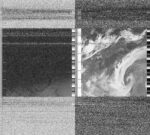
Strong winds.
2025-06-02 22:56:00
Cyprus Amateur Radio Society
Nicosia , Cyprus
Cyprus
NOAA-18

2025-06-02 23:39:00
Maufox
Mauritius, Mauritius
Mauritius
NOAA-18

2025-06-02 12:48:28
Alan Robertson
Bathgate, West Lothian, UK
UK
NOAA-18

2025-06-02 12:52:00
Goownown Growers
The Seaweed Institute
CAST, Helston, Cornwall, United Kingdom
United Kingdom
NOAA-18

2025-06-02 12:49:00
Hospitalfield
Arbroath, Scotland
Scotland
NOAA-18

2025-06-01 22:58:00
Heidi Neilson
Gilboa, New York, United States
United States
NOAA-18

2025-06-01 23:39:00
Iterable pueyrredon
Cordoba , Argentina
Argentina
NOAA-18

2025-06-01 22:54:25
Alan Robertson
Bathgate, West Lothian, UK
UK
NOAA-18

2025-06-01 22:55:00
Hospitalfield
Arbroath, Scotland
Scotland
NOAA-18

2025-06-01 23:53:00
Foto Colectania
Hangar
Ràdio Web MACBA
Barcelona, Spain
Spain
NOAA-18

2025-06-01 12:01:44
Steve Engelmann
Pacific Palisades, California, United States
United States
NOAA-18





Today I returned to a spot on the bluffs of Pacific Palisades. I did a satellite capture at the same location on November 5, 2024 - the day of the US presidential election. While this location has a great view of the ocean, the early few minutes were problematic as there was a large eucalyptus tree blocking the northern horizon. The Palisades fire burned the foliage of that tree, but eucalyptus are know to tolerate fire. On the first image the tree looks like a fuzzy character from Dr. Seuss. The second image is looking up Temescal Canyon, one of the main access roads to the community. The four lanes are currently blocked to car traffic as it is being used to process and sort debris being removed from fire-damaged homes. The third image is from November 5th. It is interesting to compare the status of the road, the hillside homes and the mountains in the distance. The last image is towards the west with Malibu peaking out of the marine layer.
So much has transpired since the US election. Being ruled by billionaires has not been fun. Somehow I think they believe their wealth is a validation of their political ideology. Between the tariffs (taxes on Americans), the dismantling of government agencies, immigration anxiety, a shift away from science-backed health and environmental policy, the decline of reproductive rights, the instability of the US dollar, the general xenophobia and so much more, it scary that we aren't even 6 months in.
Perhaps what we are witnessing is the burning down of our country. Maybe the rebuild will offer opportunities to reimagine this country. It is hard to watch.
2025-06-01 23:52:00
Maufox
Mauritius, Mauritius
Mauritius
NOAA-18

2025-06-01 23:51:00
Cosmos Astronomy Club MIT WPU
Pune, India
India
NOAA-18

2025-06-01 13:01:23
Alan Robertson
Bathgate, West Lothian, UK
UK
NOAA-18
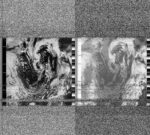
2025-06-01 11:46:00
Cyprus Amateur Radio Society
Nicosia , Cyprus
Cyprus
NOAA-18
2025-05-31 23:07:18
Alan Robertson
Bathgate, West Lothian, UK
UK
NOAA-18

2025-06-01 00:05:00
Maufox
Mauritius, Mauritius
Mauritius
NOAA-18

2025-05-31 11:59:00
Cyprus Amateur Radio Society
Nicosia , Cyprus
Cyprus
NOAA-18

2025-05-30 23:20:14
Alan Robertson
Bathgate, West Lothian, UK
UK
NOAA-18

2025-05-30 23:21:00
Goownown Growers
The Seaweed Institute
CAST, Helston, Cornwall, United Kingdom
United Kingdom
NOAA-18

2025-05-30 22:37:00
Maufox
Mauritius, Mauritius
Mauritius
NOAA-18

2025-05-30 11:51:36
Richard A Carter
University of York, Campus East, United Kingdom
United Kingdom
NOAA-18

2025-05-30 11:22:00
Cosmos Astronomy Club MIT WPU
Pune, India
India
NOAA-18

2025-05-29 12:33:00
Zack Wettstein
Seattle, United States
United States
NOAA-18

2025-05-29 22:49:00
Maufox
Mauritius, Mauritius
Mauritius
NOAA-18

2025-05-29 22:48:00
Cosmos Astronomy Club MIT WPU
Pune, India
India
NOAA-18

2025-05-29 11:50:00
Iterable pueyrredon
Cordoba , Argentina
Argentina
NOAA-18
2025-05-29 13:05:00
Foto Colectania
Hangar
Ràdio Web MACBA
Barcelona, Spain
Spain
NOAA-18

2025-05-28 23:46:00
Filip Shatlan and Diana Engelmann
Gainesville, Florida , United States
United States
NOAA-18

2025-05-28 22:53:00
Iterable pueyrredon
Cordoba , Argentina
Argentina
NOAA-18
2025-05-28 23:02:00
Maufox
Mauritius, Mauritius
Mauritius
NOAA-18
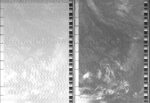
2025-05-28 23:02:00
Cosmos Astronomy Club MIT WPU
Pune, India
India
NOAA-18

2025-05-28 12:12:16
Alan Robertson
Bathgate, West Lothian, UK
UK
NOAA-18

Cloudy with occasional showers.
2025-05-27 23:42:00
Tsonami Arte Sonoro
Valparaiso, Chile
Chile
NOAA-18

2025-05-27 23:04:00
Iterable pueyrredon
Cordoba , Argentina
Argentina
NOAA-18
2025-05-27 23:15:00
Maufox
Mauritius, Mauritius
Mauritius
NOAA-18

2025-05-27 23:14:00
Cosmos Astronomy Club MIT WPU
Pune, India
India
NOAA-18

2025-05-27 12:25:38
Richard A Carter
University of York, Campus East, United Kingdom
United Kingdom
NOAA-18

A sounding just as the weather turned - heavy rainfall threatening pristine computer electronics.
2025-05-26 23:56:00
Tsonami Arte Sonoro
Valparaiso, Chile
Chile
NOAA-18

2025-05-26 23:16:00
Iterable pueyrredon
Cordoba , Argentina
Argentina
NOAA-18
2025-05-26 23:28:00
Maufox
Mauritius, Mauritius
Mauritius
NOAA-18

2025-05-26 12:42:00
Goownown Growers
The Seaweed Institute
CAST, Helston, Cornwall, United Kingdom
United Kingdom
NOAA-18

2025-05-26 12:39:00
Hospitalfield
Arbroath, Scotland
Scotland
NOAA-18

2025-05-25 23:13:00
Zack Wettstein
Seattle, United States
United States
NOAA-18

2025-05-25 22:48:00
Heidi Neilson
Gilboa, New York, United States
United States
NOAA-18

2025-05-25 22:58:00
Cyprus Amateur Radio Society
Nicosia , Cyprus
Cyprus
NOAA-18

2025-05-25 23:41:00
Maufox
Mauritius, Mauritius
Mauritius
NOAA-18

2025-05-25 11:01:00
Iterable pueyrredon
Cordoba , Argentina
Argentina
NOAA-18

2025-05-25 12:51:00
Alan Robertson
Bathgate, West Lothian, UK
UK
NOAA-18

2025-05-25 12:55:00
Goownown Growers
The Seaweed Institute
CAST, Helston, Cornwall, United Kingdom
United Kingdom
NOAA-18

2025-05-25 10:37:00
Oppressive Heat
Phnom Penh, Cambodia
Cambodia
NOAA-18

2025-05-24 23:00:00
Heidi Neilson
Gilboa, New York, United States
United States
NOAA-18

2025-05-24 23:41:00
Iterable pueyrredon
Cordoba , Argentina
Argentina
NOAA-18

2025-05-24 22:56:55
Alan Robertson
Bathgate, West Lothian, UK
UK
NOAA-18

2025-05-24 22:58:00
Hospitalfield
Arbroath, Scotland
Scotland
NOAA-18
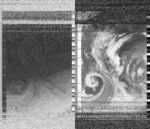
A marked change in pressure. Cool breeze gone. Muggy close heat where before warmth from direct sun. Clear skies replaced by a full array of clouds. Low billowing cumulous and streaky mare's tails above. First rain last night, enough to just wet the ground. A deep inhale of the scent before bed. Train to Dundee along the coast in the morning, the haze is thick over the sea. Tensions run high. There's a far right rally in Dundee (and across Scotland) – well countered and outnumbered but more than anticipated. Union jacks and saltire flags, one that just says 'Jesus' and placards for Reform. They only have rage, we have joy on our side, songs and poems. Our chants ring across the square, louder. Refugees are welcome here. This is what community looks like. This is what solidarity looks like. The crowd breaks up as the student 'revel' begins, ceilidhing in costume as gods and stones and filling the square with messages of peace and love. Whose square? Our square. Crowded and sweaty train home, more factions and colours, but the fans are just happy and sunburnt in their red strips – Aberdeen won the cup.
2025-05-24 23:55:00
Foto Colectania
Hangar
Ràdio Web MACBA
Barcelona, Spain
Spain
NOAA-18

2025-05-24 12:02:37
Steve Engelmann
Pacific Palisades, California, United States
United States
NOAA-18





Today's capture was from the Palisades Bluffs. Growing up in the area, I spent many hours staring out at the ocean and contemplating whatever the topic du jour happened to be. Behind me were many piles of rubble and green gardens steps away from ash and a standing chimney. Below the bluffs there is, or was, a trailer park. There was a nonstop cacophony of jackhammers, the sound of trucks backing up, and the rumble of debris falling into a dump truck. More thoughts to contemplate.
2025-05-24 23:55:00
Maufox
Mauritius, Mauritius
Mauritius
NOAA-18

2025-05-24 11:14:00
Iterable pueyrredon
Cordoba , Argentina
Argentina
NOAA-18

2025-05-23 23:14:00
Heidi Neilson
Gilboa, New York, United States
United States
NOAA-18

2025-05-23 23:53:00
Iterable pueyrredon
Cordoba , Argentina
Argentina
NOAA-18

2025-05-23 23:09:49
Alan Robertson
Bathgate, West Lothian, UK
UK
NOAA-18

2025-05-23 11:36:20
Richard A Carter
University of York, Campus East, United Kingdom
United Kingdom
NOAA-18

2025-05-23 11:27:00
Iterable pueyrredon
Cordoba , Argentina
Argentina
NOAA-18

2025-05-23 12:02:00
Cyprus Amateur Radio Society
Nicosia , Cyprus
Cyprus
NOAA-18

2025-05-22 23:22:47
Alan Robertson
Bathgate, West Lothian, UK
UK
NOAA-18

2025-05-22 23:23:00
Goownown Growers
The Seaweed Institute
CAST, Helston, Cornwall, United Kingdom
United Kingdom
NOAA-18


Today we had to collect washed up seaweeds for a craft workshop on seaweed pressing. We love the pressing process as a way to engage people with seaweeds.
The day is perfect and I had more time than I usually do to collect. The seaweeds best for pressing are red seaweed that tend to grow at the bottom or below the intertidal zone. When they become dislodged from their holdfasts, dying, they wash up. A northerly wind blew from the land, making the nearshore water calm – it was bliss.
Over the last half a year we have been trying to learn a little how to interpret these beautiful satellite images of familiar landmasses and unfamiliar cloudmasses, not often sure what exactly we are looking at. One thing has been certain over the last few months- it’s been mostly warm and dry. We have seen many clear outlines of the cornish coast send down to us via audio file from the satellites.
It feels sadly fitting to have spent these months with our ground station, thinking more about weather, whilst the coast our work focuses on is current experiencing the warmest heat waves since records began.
Throughout April and May we have seen an ‘unprecedented’ marine heatwave in the northeastern Atlantic. The Met Office has described this heatwave as being unusual in its intensity and persistence.
The last time this was observed was in 2023, at the time the most severe marine heatwave recorded in this part of the ocean. Then, both Ruth and I were working harvesting seaweed at every low tide on The Lizard peninsular. Unaware of the data being gathered that summer, we anecdotally saw a large bleaching and dieback of our favourite seaweed Dulse. We worried about its recovery after this local marine heatwave and we wondered what data was being gathered on the effect of heat on the very shallow waters of the intertide. The Dulse seemed to recover well but we couldn’t help wonder how many of these events the ecosystem could withstand. Now working less physically close to this ecosystem, seeing more extreme marine heatwaves, we are left even more concerned for their future.
Today, whilst the tide is metres above most species, I swim in the unseasonably warm waters and gather dead floating seaweeds, a tool to teach people about the ecosystem. I wonder how many of them have died prematurely due to heat or if this is just the normal natural lifecycle.
2025-05-22 22:39:00
Maufox
Mauritius, Mauritius
Mauritius
NOAA-18

2025-05-22 11:59:00
Heidi Neilson
Gilboa, New York, United States
United States
NOAA-18

2025-05-22 22:25:00
Oppressive Heat
Phnom Penh, Cambodia
Cambodia
NOAA-18

2025-05-22 11:39:00
Iterable pueyrredon
Cordoba , Argentina
Argentina
NOAA-18
2025-05-22 12:55:00
Foto Colectania
Hangar
Ràdio Web MACBA
Barcelona, Spain
Spain
NOAA-18

2025-05-21 23:40:07
Derrick Yohn
Transfer, Pennsylvania, United States
United States
NOAA-18



Including images from noaa-apt with overlay
2025-05-21 23:36:00
Filip Shatlan and Diana Engelmann
Gainesville, Florida , United States
United States
NOAA-18

2025-05-14 23:30:51
Derrick Yohn
Transfer, Pennsylvania, United States
United States
NOAA-18


Included processed image from noaa-apt showing mapping
2025-05-21 12:35:00
Zack Wettstein
Seattle, United States
United States
NOAA-18

2025-05-21 22:52:00
Maufox
Mauritius, Mauritius
Mauritius
NOAA-18

2025-05-21 12:12:00
Heidi Neilson
Gilboa, New York, United States
United States
NOAA-18

2025-05-21 22:38:00
Oppressive Heat
Phnom Penh, Cambodia
Cambodia
NOAA-18

2025-05-21 23:26:00
Centre for People, Place and Planet
Perth , Australia
Australia
NOAA-18


2025-05-21 11:52:00
Iterable pueyrredon
Cordoba , Argentina
Argentina
NOAA-18
2025-05-21 12:02:20
Richard A Carter
University of York, Campus East, United Kingdom
United Kingdom
NOAA-18


2025-05-21 13:08:00
Foto Colectania
Hangar
Ràdio Web MACBA
Barcelona, Spain
Spain
NOAA-18

2025-05-20 21:29:54
Soph Dyer
Paulinengasse, Wien, Austria
Austria
NOAA-18
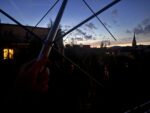



"We used to swim in the river at this time of year" a friend laments. It's true that the unheated, outdoor public pools have been open for almost three weeks, but I doubt that they've had many visitors. As a Northerner, I am tempted by the icy rewards of cold swim but I know that this is not what most Viennese have in mind when they think of the Freibäder.
From the other side of the Polar Jet Stream, my sister, Ray, writes that the UK has been dry and wam. It's so dry that the earth on the farm has cracked into irregular, tessellating shapes.
Earlier in May, when visiting family in England I read sections of my mum's childhood diary. The diary had been left out to cheer-up my Gran who has dementia. Each entry opens with a single line about the weather. On this day in 1971, Hampshire was the "same as yesterday", which was "a bit windier". Two days prior, it had been "very sunny and warm", my mum's 12-year-old self wrote.
2025-05-20 23:48:00
Filip Shatlan and Diana Engelmann
Gainesville, Florida , United States
United States
NOAA-18

2025-05-20 22:55:00
Iterable pueyrredon
Cordoba , Argentina
Argentina
NOAA-18
2025-05-20 23:05:00
Maufox
Mauritius, Mauritius
Mauritius
NOAA-18

2025-05-19 23:20:00
jack hackerson
R9J9+C7F Dwingeloo, Netherlands, Europe
Europe
NOAA-18
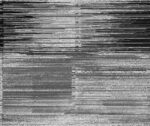
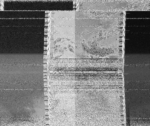

my first time doing this. i did my best and i might continue doing this for more pics ee
2025-05-19 23:18:00
Maufox
Mauritius, Mauritius
Mauritius
NOAA-18

2025-05-19 12:43:00
Filip Shatlan and Diana Engelmann
Gainesville, Florida , United States
United States
NOAA-18

2025-05-19 12:27:41
Alan Robertson
Bathgate, West Lothian, UK
UK
NOAA-18

2025-05-18 22:48:00
Cyprus Amateur Radio Society
Nicosia , Cyprus
Cyprus
NOAA-18

2025-05-18 23:31:00
Maufox
Mauritius, Mauritius
Mauritius
NOAA-18

2025-05-18 12:54:23
Derrick Yohn
N3TTI, United States
United States
NOAA-18


2025-05-18 12:44:00
Goownown Growers
The Seaweed Institute
CAST, Helston, Cornwall, United Kingdom
United Kingdom
NOAA-18

2025-05-17 23:16:00
Zack Wettstein
Seattle, United States
United States
NOAA-18

2025-05-17 23:45:00
Foto Colectania
Hangar
Ràdio Web MACBA
Barcelona, Spain
Spain
NOAA-18

2025-05-17 23:44:00
Maufox
Mauritius, Mauritius
Mauritius
NOAA-18

2025-05-16 23:03:00
Heidi Neilson
Gilboa, New York, United States
United States
NOAA-18

2025-05-16 23:57:00
Maufox
Mauritius, Mauritius
Mauritius
NOAA-18

2025-05-16 11:31:01
Sasha Engelmann
Between Schilling and Queens Buildings, Royal Holloway University of London, United Kindom
United Kindom
NOAA-18


From the cavelike darkness of my university office, my day is textured by a slow livestream of weather from around the world. Yesterday we launched the Year of Weather Map - a collective map of weather created with satellite imagery contributions from DIY satellite ground station operators around the world. Around lunchtime a new series of images over Europe roll in, adding wispy cloud textures over the North Atlantic. Later in the afternoon, an incredibly clear image arrives spanning from the Great Lakes to Central America and featuring a brilliant sun-glint in the Gulf of Mexico. I await with some expectation an image from India but it does not appear in the Archive- suggesting a power cut, wifi failure or other infrastructure issue on the ground. Then on my train ride home it’s there in the archive and map - a ghostly nighttime image with a condensed mass of cotton-ball clouds to the South and the faint coastline of India and Pakistan. All of these weathers layer in slow, meditative fashion on the somewhat glitchy map we have created, the result of five years of network building, tool-making and the design, testing and crafting of small units of hardware.
2025-05-16 13:10:08
Richard A Carter
University of York, Campus East, United Kingdom
United Kingdom
NOAA-18

2025-05-16 11:51:00
Cyprus Amateur Radio Society
Nicosia , Cyprus
Cyprus
NOAA-18

2025-05-15 23:16:00
Heidi Neilson
Gilboa, New York, United States
United States
NOAA-18

2025-05-15 11:48:00
Richard A Carter
University of York, Campus East, United Kingdom
United Kingdom
NOAA-18

A hurried, last minute sounding, and an odd sense of sadness, given the impending decommissioning of the analogue NOAA satellites. Cool and dry conditions, amidst what is likely to be the driest Spring on record in the UK.
2025-05-15 12:04:00
Cyprus Amateur Radio Society
Nicosia , Cyprus
Cyprus
NOAA-18

2025-05-15 11:38:00
Maufox
Mauritius, Mauritius
Mauritius
NOAA-18

2025-05-14 23:26:00
Goownown Growers
The Seaweed Institute
CAST, Helston, Cornwall, United Kingdom
United Kingdom
NOAA-18

2025-05-14 12:25:00
Zack Wettstein
Seattle, United States
United States
NOAA-18

2025-05-14 12:02:00
Heidi Neilson
Gilboa, New York, United States
United States
NOAA-18

2025-05-14 22:27:00
Oppressive Heat
Phnom Penh, Cambodia
Cambodia
NOAA-18

2025-05-13 23:38:00
Filip Shatlan and Diana Engelmann
Gainesville, Florida , United States
United States
NOAA-18

2025-05-13 12:38:00
Zack Wettstein
Seattle, United States
United States
NOAA-18

2025-05-12 12:51:00
Zack Wettstein
Seattle, United States
United States
NOAA-18

2025-05-12 12:20:14
Sasha Engelmann
Between Queens and Schilling Buildings, Royal Holloway University of London, United Kingdom
United Kingdom
NOAA-18


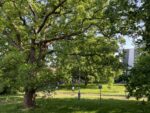
Another year, another Cosgrove Lecture at the Centre for GeoHumanities at Royal Holloway. Our speaker this year is Siobhan Angus who has written Camera Geologica, a book tracing the interrelations of geological materiality, social-environmental history and photographic image-making. I learn that in the 19th century, 20% of global silver went into photographic production processes. Gelatin, derived from animal bones, was so important for photographic practices that slaughterhouses were kept near Kodak and other major photo studios and facilities. Platinum printing processes were used to print and archive photographs of indigenous and global south communities, and the softer, ethereal aesthetics of platinum is therefore irrevocably linked to archives of communities at the threshold of ‘disappearance’. These are the traces of what Kathryn Yusoff calls ‘geological ghosts’ in historical visual cultures. Siobhan follows the work of Azoulay in stating that photography was not born in the 19th century, it was born in 1492 upon the threshold of the colonisation (and extraction from) the Americas.
2025-05-12 23:07:00
Cosmos Astronomy Club MIT WPU
Pune, India
India
NOAA-18

2025-05-12 12:32:00
Filip Shatlan and Diana Engelmann
Gainesville, Florida , United States
United States
NOAA-18

2025-05-12 22:53:00
Oppressive Heat Project
Phnom Penh, Cambodia
Cambodia
NOAA-18





2025-05-11 22:52:00
Zack Wettstein
Seattle, United States
United States
NOAA-18

2025-05-11 12:45:00
Filip Shatlan and Diana Engelmann
Gainesville, Florida , United States
United States
NOAA-18

2025-05-11 12:31:00
Hospitalfield
Arbroath, Scotland
Scotland
NOAA-18

2025-05-10 23:05:00
Zack Wettstein
Seattle, United States
United States
NOAA-18

2025-05-10 22:50:00
Cyprus Amateur Radio Society
Nicosia , Cyprus
Cyprus
NOAA-18

2025-05-10 12:47:00
Goownown Growers
The Seaweed Institute
CAST, Helston, Cornwall, United Kingdom
United Kingdom
NOAA-18

2025-05-10 12:43:00
Hospitalfield
Arbroath, Scotland
Scotland
NOAA-18

2025-05-09 23:18:00
Zack Wettstein
Seattle, United States
United States
NOAA-18

2025-05-09 22:52:00
Heidi Neilson
Gilboa, New York, United States
United States
NOAA-18

2025-05-09 22:50:00
Hospitalfield
Arbroath, Scotland
Scotland
NOAA-18

2025-05-09 23:03:00
Cyprus Amateur Radio Society
Nicosia , Cyprus
Cyprus
NOAA-18

2025-05-09 11:51:30
Steve Engelmann
Tongva Park, Santa Monica, California, USA, Earth, United States
United States
NOAA-18





This satellite pass had a slightly better elevation than the earlier one. The marine layer is starting to fade. The pass was captured from Tongva Park (in honor of the indigenous peoples of coastal southern California). During most of the satellite capture a woman was loudly ranting at a police officer. Sometimes I feel like ranting too. Under the topic of "government efficiency" defunding the EPA's Energy Star program is the latest casualty. The program costs the government $32 million, while saving American consumers $40 billion annually. Maybe I missed something on efficiency, but that sounds like for every dollar the government spends on the program, consumers benefit $350. California's goal of selling only new electric vehicles by 2035 is also up in the air. And the defunding of NOAA may also result in NOAA 18 being turned off. From space, everything seems so peaceful. I guess appearances may deceive.
2025-05-09 13:00:00
Goownown Growers
The Seaweed Institute
CAST, Helston, Cornwall, United Kingdom
United Kingdom
NOAA-18

2025-05-08 23:31:00
Zack Wettstein
Seattle, United States
United States
NOAA-18

2025-05-08 23:02:00
Hospitalfield
Arbroath, Scotland
Scotland
NOAA-18

2025-05-08 13:09:40
Richard A Carter
University of York, Campus East, United Kingdom
United Kingdom
NOAA-18

Last week was the hottest May day on record in the UK, today is decidedly cooler and greyer. A reminder that Spring is always an unstable threshold, like any season.
2025-05-07 23:44:00
Zack Wettstein
Seattle, United States
United States
NOAA-18

2025-05-07 23:15:00
Goownown Growers
The Seaweed Institute
CAST, Helston, Cornwall, United Kingdom
United Kingdom
NOAA-18

2025-05-07 12:15:00
Zack Wettstein
Seattle, United States
United States
NOAA-18

2025-05-06 23:57:00
Zack Wettstein
Seattle, United States
United States
NOAA-18

2025-05-06 23:28:00
Goownown Growers
The Seaweed Institute
CAST, Helston, Cornwall, United Kingdom
United Kingdom
NOAA-18

2025-05-06 12:05:00
Heidi Neilson
Gilboa, New York, United States
United States
NOAA-18

2025-05-06 12:00:00
Hangar, Ràdio Web MACBA, Foto Colectania
Barcelona, Spain
Spain
NOAA-18





2025-05-06 11:30:00
Cosmos Astronomy Club MIT WPU
Pune, India
India
NOAA-18

2025-05-05 12:40:00
Zack Wettstein
Seattle, United States
United States
NOAA-18

2025-05-05 22:56:00
Cosmos Astronomy Club MIT WPU
Pune, India
India
NOAA-18

2025-05-05 12:21:00
Filip Shatlan and Diana Engelmann
Gainesville, Florida , United States
United States
NOAA-18

2025-05-04 23:54:00
Filip Shatlan and Diana Engelmann
Gainesville, Florida , United States
United States
NOAA-18

2025-05-04 16:38:00
Moscow, Russia
Russia
NOAA-18

2025-05-03 22:40:00
Cyprus Amateur Radio Society
Nicosia , Cyprus
Cyprus
NOAA-18

2025-05-03 12:33:00
Hospitalfield
Arbroath, Scotland
Scotland
NOAA-18

2025-05-02 22:53:00
Cyprus Amateur Radio Society
Nicosia , Cyprus
Cyprus
NOAA-18

2025-05-02 12:46:00
Hospitalfield
Arbroath, Scotland
Scotland
NOAA-18

2025-05-01 22:55:00
Heidi Neilson
Gilboa, New York, United States
United States
NOAA-18

2025-05-01 22:52:00
Hospitalfield
Arbroath, Scotland
Scotland
NOAA-18

2025-05-01 13:02:16
Richard A Carter
University of York, Campus East, United Kingdom
United Kingdom
NOAA-18

This image was gathered as part of a class workshop I ran today, as a simple way of bearing out the radio networks that underpin much of our contemporary environment.
2025-05-01 13:02:00
Goownown Growers
The Seaweed Institute
CAST, Helston, Cornwall, United Kingdom
United Kingdom
NOAA-18

2025-04-30 23:07:00
Heidi Neilson
Gilboa, New York, United States
United States
NOAA-18
2025-04-30 23:05:00
Hospitalfield
Arbroath, Scotland
Scotland
NOAA-18

2025-04-30 11:56:00
Cyprus Amateur Radio Society
Nicosia , Cyprus
Cyprus
NOAA-18

2025-04-29 23:20:00
Heidi Neilson
Gilboa, New York, United States
United States
NOAA-18

2025-04-28 12:30:00
Zack Wettstein
Seattle, United States
United States
NOAA-18

2025-04-28 22:46:00
Cosmos Astronomy Club MIT WPU
Pune, India
India
NOAA-18

2025-04-28 12:07:00
Heidi Neilson
Gilboa, New York, United States
United States
NOAA-18

2025-04-27 12:43:00
Zack Wettstein
Seattle, United States
United States
NOAA-18

2025-04-27 12:24:00
Filip Shatlan and Diana Engelmann
Gainesville, Florida , United States
United States
NOAA-18

2025-04-26 23:11:00
Cosmos Astronomy Club MIT WPU
Pune, India
India
NOAA-18

2025-04-26 12:37:00
Filip Shatlan and Diana Engelmann
Gainesville, Florida , United States
United States
NOAA-18

2025-04-25 22:42:00
Cyprus Amateur Radio Society
Nicosia , Cyprus
Cyprus
NOAA-18

2025-04-25 12:38:47
Sasha Engelmann
Between Queens and Schilling Buildings, Royal Holloway University of London, United Kingdom
United Kingdom
NOAA-18


The morning is balmy and bright, but my university office feels far too cold. I layer with a grey wool jumper that I keep in my office for such days. Whereas my east-facing windows receive piercing sun during the winter, the dense foliage of the oak trees in the small grassy field outside the department keep most light out of my office in spring and summer. It feels like I am the only member of staff in today, everyone is sheltering from the start of Term 3 at home. I buy myself a hot chocolate with whipped cream in the afternoon as consolation!
This morning, T plays a video of a Spanish senator who is a trans woman, standing up and admonishing the senate for their attack on trans lives. She says ‘you insert yourself in every part of our lives!’ Then she lists all the invasive questions and topics asked by transphobes including ‘Do trans people orgasm?’ ‘Enough!!’ She bellows to the whole senate who applaud. Meanwhile in the U.K., Kier Starmer is ‘pleased’ that ‘we finally have clarity’ on the definition of a woman.
2025-04-25 12:39:00
Goownown Growers
The Seaweed Institute
CAST, Helston, Cornwall, United Kingdom
United Kingdom
NOAA-18

2025-04-25 12:35:00
Hospitalfield
Arbroath, Scotland
Scotland
NOAA-18
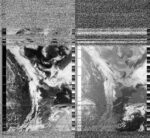
2025-04-24 22:55:00
Cyprus Amateur Radio Society
Nicosia , Cyprus
Cyprus
NOAA-18

2025-04-24 10:41:00
Prajvi Mandhani
Noida, India , India
India
NOAA-18



full bright sun and a slight wind. I went up to the terrace of my building to the 25th floor.
I was impatient as my sweat trickled down my forehead. Its hot.
trying to remember that there is still water in this atmosphere, no matter how dry today feels.
India just suspended the Indus Valley Treaty that comprises of sharing river, Indus, and five bank tributaries, Ravi, Beas, Sutlej, Jhelum, and Chenab with Pakistan after a brutal terrorist attack in Kashmir.
The land bleeds, the water is forced to stop. Is justice revenge or is justice freedom of the land, freedom of the water, freedom of the indigenous communities.
Thinking of this strange weather swept across India, dark storms leaking into language.
2025-04-23 23:08:00
Cyprus Amateur Radio Society
Nicosia , Cyprus
Cyprus
NOAA-18

2025-04-22 11:59:00
Cyprus Amateur Radio Society
Nicosia , Cyprus
Cyprus
NOAA-18

2025-04-21 23:20:00
Goownown Growers
The Seaweed Institute
CAST, Helston, Cornwall, United Kingdom
United Kingdom
NOAA-18

2025-04-21 22:37:00
Cosmos Astronomy Club MIT WPU
Pune, India
India
NOAA-18

2025-04-21 11:56:00
Heidi Neilson
Gilboa, New York, United States
United States
NOAA-18
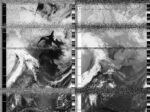
2025-04-21 11:23:00
Cosmos Astronomy Club MIT WPU
Pune, India
India
NOAA-18

2025-04-20 23:32:00
Filip Shatlan and Diana Engelmann
Gainesville, Florida , United States
United States
NOAA-18
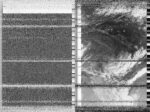
2025-04-20 23:33:00
Goownown Growers
The Seaweed Institute
CAST, Helston, Cornwall, United Kingdom
United Kingdom
NOAA-18

2025-04-20 12:09:00
Heidi Neilson
Gilboa, New York, United States
United States
NOAA-18

2025-04-20 11:00:23
Sasha Engelmann
Hackney Downs, London , United Kingdom
United Kingdom
NOAA-18

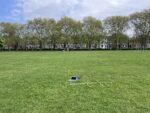
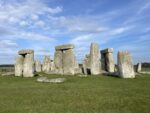


London has exploded in green during the week T and I were on holiday in Cornwall. The chestnut trees in Hackney Downs are in full foliage and already budding flowers, while the plane trees are a cheerful yellow green. While in Cornwall we spent much of our time visiting several obscure stone circles and ‘quoits’ in the treeless moors, though we did visit one very prominent stone monument that happened to be on our way back to London (Stonehenge!). In contrast to the exposed rocks and windswept hills of western Cornwall, the green of London’s treetop overstory is almost overwhelming…
In a unanimous decision a few days ago, the UK Supreme Court ruled that, under the Equality Act of 2010, “sex is binary” and it is based on biology. A trans woman therefore does not come within the definition of a ‘woman’ under the Act, and therefore loses protections made for the benefit of women. The court insists that trans rights are still protected under the ruling but it is very unclear how denying someone’s womanhood can be called protection. Shon Faye writes that the relative support (though ‘support’ is a strong word here) afforded trans people over the last two decades in the U.K. is coming to an end. Judith Butler points out, in an interview with Owen Jones, that anti-trans feminism is more virulent in the U.K. than in the US. T and I mull over the decision and its daily analysis, a decision that has wide ranging implications for many people in our immediate community, not to mention the health and wellbeing of queer and nonbinary folks more broadly. How are the rights of non-binary people to be seen under this ruling? Or any other place on the spectrum of transness? The U.K. remains by far the safest place to be out of our own two home countries (Italy and the US) but such laws - invisible anti-trans weather of the state - force us to consider both how to keep fighting and how to escape.
2025-04-20 11:35:00
Cosmos Astronomy Club MIT WPU
Pune, India
India
NOAA-18




2025-04-19 23:46:00
Filip Shatlan and Diana Engelmann
Gainesville, Florida , United States
United States
NOAA-18

2025-04-19 23:02:00
Cosmos Astronomy Club MIT WPU
Pune, India
India
NOAA-18

2025-04-18 23:58:00
Filip Shatlan and Diana Engelmann
Gainesville, Florida , United States
United States
NOAA-18

2025-04-18 23:14:00
Cosmos Astronomy Club MIT WPU
Pune, India
India
NOAA-18

2025-04-18 12:25:00
Hospitalfield
Arbroath, Scotland
Scotland
NOAA-18

2025-04-17 22:45:00
Cyprus Amateur Radio Society
Nicosia , Cyprus
Cyprus
NOAA-18

2025-04-15 11:59:24
Steve Engelmann
Pacific Palisades, California, United States
United States
NOAA-18



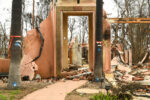

It has been over 3 months since the start of the Palisades Fire. I did a satellite capture less than an hour before the beginning of the fire on January 7th. I thought I would return to that location to do another capture. Road closures forced me to change plans. As the satellite was about to rise above the horizon, I found myself in the middle of the residential burn zone of the Palisades. With few trees standing, and even fewer homes, the skyline was favorable for a clear view of the sky. I found a convenient wall from a burned property to place my laptop. Several cars slowed during the pass giving me suspicious looks. Who is this man with an antenna in the middle of all the destruction? One car lingered for several minutes - I feel I was being filmed.
Meanwhile, we live in the chaos of tarrifs, the deportation of students with political views, the defunding of universities and the promise to increase domestic energy (fossil fuel) production. Later that day I attended a press conference at City Hall promoting the Polluters Pay Climate Superfund Act of 2025. The odds are long, but the effort is important.
2025-04-17 12:41:00
Goownown Growers
The Seaweed Institute
CAST, Helston, Cornwall, United Kingdom
United Kingdom
NOAA-18

2025-04-17 12:38:00
Hospitalfield
Arbroath, Scotland
Scotland
NOAA-18

2025-04-16 12:54:00
Goownown Growers
The Seaweed Institute
CAST, Helston, Cornwall, United Kingdom
United Kingdom
NOAA-18

2025-04-16 12:51:00
Hospitalfield
Arbroath, Scotland
Scotland
NOAA-18

2025-04-15 22:59:00
Heidi Neilson
Gilboa, New York, United States
United States
NOAA-18

2025-04-15 22:57:00
Hospitalfield
Arbroath, Scotland
Scotland
NOAA-18

2025-04-14 23:10:00
Goownown Growers
The Seaweed Institute
CAST, Helston, Cornwall, United Kingdom
United Kingdom
NOAA-18

2025-04-14 23:09:00
Hospitalfield
Arbroath, Scotland
Scotland
NOAA-18

2025-04-14 12:09:00
Zack Wettstein
Seattle, United States
United States
NOAA-18

2025-04-13 12:22:00
Zack Wettstein
Seattle, United States
United States
NOAA-18

2025-04-13 11:59:00
Heidi Neilson
Gilboa, New York, United States
United States
NOAA-18

2025-04-12 12:35:00
Zack Wettstein
Seattle, United States
United States
NOAA-18

2025-04-12 12:16:00
Filip Shatlan and Diana Engelmann
Gainesville, Florida , United States
United States
NOAA-18

2025-04-12 12:12:00
Heidi Neilson
Gilboa, New York, United States
United States
NOAA-18

2025-04-11 23:48:00
Filip Shatlan and Diana Engelmann
Gainesville, Florida , United States
United States
NOAA-18

2025-04-11 12:47:00
Zack Wettstein
Seattle, United States
United States
NOAA-18

2025-04-11 12:14:47
Richard A Carter
University of York, Campus East, United Kingdom
United Kingdom
NOAA-18

Today's sounding was mainly a test run, with noise and audio cutouts (the dark striations) proving a persistent issue - although the image was better than expected. Suspect these artefacts are a quirk of the new laptop I have been using, as previous devices (now sadly defunct) were fine. Once again, a reminder of the intricate chain of systems that all need to align in order for a recording to be gathered and processed.
2025-04-10 22:49:00
Zack Wettstein
Seattle, United States
United States
NOAA-18

2025-04-10 12:27:00
Hospitalfield
Arbroath, Scotland
Scotland
NOAA-18

Unseasonably hot for April. A sustained period of dry weather and clear skies. Dusty streets, high pollution and tree pollen adrift. Throat scratch. Can't actually remember the last time it rained. Reports of wild fires on the west coast, on Arran and Bute. It's the school holidays. Another news report of chaos at East coast beaches, masses of people flocking to the sea. Ice cream headaches for North sea dookers. As one of them, met an unexpected headwind cycling east from Arbroath to a beach, but the breeze felt hot. Wind sock dancing. And still cold at night.
2025-04-09 23:31:00
Vienna Automatic
Vienna, Austria
Austria
NOAA-18

2025-04-08 23:15:00
Zack Wettstein
Seattle, United States
United States
NOAA-18

2025-04-07 10:45:17
David Alejandro Saavedra Herrera
Near of Zapatoca Market in the capital of Colombia, Colombia
Colombia
NOAA-18

Well we are facing a very long rainy season so i guess thats why we can see that much clouds in the image
2025-04-07 10:45:17
David Alejandro Saavedra Herrera
Near of Zapatoca Market in the capital of Colombia, Colombia
Colombia
NOAA-18

It was hard to get it , but still i got an awesome result even for my first time and about the weather we are facing a rainy season so we can see the clouds
2025-04-08 12:56:00
Goownown Growers
The Seaweed Institute
CAST, Helston, Cornwall, United Kingdom
United Kingdom
NOAA-18

2025-04-07 23:28:00
Zack Wettstein
Seattle, United States
United States
NOAA-18

2025-04-07 23:02:00
Heidi Neilson
Gilboa, New York, United States
United States
NOAA-18

2025-04-07 22:59:00
Hospitalfield
Arbroath, Scotland
Scotland
NOAA-18

2025-04-07 12:29:00
Vienna Automatic
Vienna, Austria
Austria
NOAA-18

2025-04-06 23:15:00
Heidi Neilson
Gilboa, New York, United States
United States
NOAA-18

2025-04-06 23:12:00
Goownown Growers
The Seaweed Institute
CAST, Helston, Cornwall, United Kingdom
United Kingdom
NOAA-18

2025-04-06 12:11:00
Zack Wettstein
Seattle, United States
United States
NOAA-18

2025-04-05 23:25:00
Goownown Growers
The Seaweed Institute
CAST, Helston, Cornwall, United Kingdom
United Kingdom
NOAA-18

2025-04-05 12:24:00
Zack Wettstein
Seattle, United States
United States
NOAA-18

2025-04-05 12:01:00
Heidi Neilson
Gilboa, New York, United States
United States
NOAA-18

2025-04-04 23:37:00
Filip Shatlan and Diana Engelmann
Gainesville, Florida , United States
United States
NOAA-18

2025-04-04 22:57:00
Vienna Automatic
Vienna, Austria
Austria
NOAA-18

2025-04-04 12:37:00
Zack Wettstein
Seattle, United States
United States
NOAA-18

2025-04-04 12:14:00
Heidi Neilson
Gilboa, New York, United States
United States
NOAA-18

2025-04-03 23:09:00
Vienna Automatic
Vienna, Austria
Austria
NOAA-18

2025-04-03 12:50:00
Zack Wettstein
Seattle, United States
United States
NOAA-18

2025-04-02 22:51:00
Zack Wettstein
Seattle, United States
United States
NOAA-18

2025-04-02 12:30:00
Hospitalfield
Arbroath, Scotland
Scotland
NOAA-18



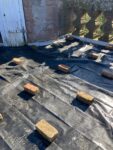

At 12.30 the ground station recorded this pass. At 13.00 I was on the other side of town and heard a sonic boom. Squinted up in the sun to see two low flying jets at high speed, heading out to sea, leaving white trails on a bright blue sky. We aren't far from a military base, after all. Around 15.00 I head to the tower for some checks: increase buffer mins to 2, ensure ventilation around the AGS, check antenna's position. On the roof this time the puddles have dried up and the sky is clear. Some of the old bricks holding the tarp in place have Arbroath imprinted on them, and I wonder when and where in the town they were made. Just a small cold breeze to remind that it's spring, not summer. Daffodils almost seem luminescent in the strong light. Around 16.00 I'm down at the beach, the tide is high, almost all the way up to the sea wall. There's a dead seal that's lost its head and a solid pink plastic bottle left on the stair pillar like an extra ornate twirl. It looks recently left and goes in the bin, the seal looks like it's been there a while.
2025-04-01 11:27:51
Sasha Engelmann
Nicosia, Cyprus
Cyprus
NOAA-18





We drive up the road to the English School Radio Club at dust, the sky a soft purple-blue, and a tower with several Yagi antennas comes into view. At ground level are two bungalows, one with the historical 'home' of the English School Radio Club, and a new renovated bungalow used today, as the older structure is failing. Nestor (President of the Cyprus Amateur Radio Society) and Demetris (President of the Nicosia Chapter of the Cyprus Amateur Radio Society) tell me of the history of the club, the days when one had to call the fire department to be lifted on a raised platform to fix the antenna. They have a cabinet full of hundreds and hundreds of QSL cards, written postcards that confirmed amateur radio contacts between operators around the world. "There are some here from countries that no longer exist!" they tell me, and I immediately find myself spreading out hundreds of QSL cards from the former Yugoslavia on a peeling green table. Next door, we power up the transceivers and I make three QSOs (radio amateur contacts) with hams in Slovenia, Hungary and Barcelona. I speak the longest to the amateur in Barcelona, who tells me my contact is 'excellent' and makes good wishes to me and my family. While we listen and tune the radio, I hear many other stories of amateur radio on Cyprus, of speaking to amateurs in Syria, Egypt, Turkey and Iran, and of the politics of amateur radio and current educational programmes aimed to be inclusive to women and girls. The radio is so clear and engrossing - voice rising clearly on SSB through the 'whoosh' of the spectrum - that we are late for our dinner reservation.
2025-04-01 23:05:00
Zack Wettstein
Seattle, United States
United States
NOAA-18

2025-04-01 22:38:00
Heidi Neilson
Gilboa, New York, United States
United States
NOAA-18

2025-03-31 23:17:00
Zack Wettstein
Seattle, United States
United States
NOAA-18

2025-03-31 12:58:00
Goownown Growers
The Seaweed Institute
CAST, Helston, Cornwall, United Kingdom
United Kingdom
NOAA-18





It’s forecast to be an astrological 0m tide in Falmouth – one of the lowest of the year. These extreme tides always sit relatively close to the equinox and, with the high pressure, the tides will creep even lower than expected.
We clear the day and head to one of our favourite spots on The Lizard peninsular.
This spot is very familiar to us, a tidal pool that offers calm water even when the sea is choppy and rough. The breeze today disrupts the sea and a swell is hitting this part of the coast – we find the pool to be the sanctuary we always hope it to be.
Spring brings beautiful rock pooling – no seaweed has become large enough to swamp out other species, most are in their main growing season, so there is lots of beautiful fresh fronds. The sun-bleaching we see later in the year, as the temperature and UV increase, hasn’t yet happened. The water is still cool, not warm enough to support many fouling organisms. The results are clear diverse healthy-looking rock pools.
Kelp semi-drys splayed over rocks, waiting to be freed by the incoming tide. Ruth, inspired, partially dries her Sea Lettuce harvest on a bolder.
This sky is so blue, with just the wispiest clouds high above – a blue that makes any other weather seem implausible. On this little spot of coast its hard to belief there will be any visible weather systems on the image we receive today,- but there is lots, you can see The Lizard though, sitting under a pool of clear sky.
We were here on the equivalent low tide in 2024, the 12 March. It was so cold we had to bring flasks of tea, hats, gloves and thermals so we could last a few hours out here. Today we bath in the sun, agreeing, with relief, that we’ve made it through winter. Sometimes on days like this we do surveys and try to document what we see – today we just enjoy the space. We wonder how we can incorporate more days like this back into our lives.
The Seaweed Institute
2025-03-31 12:19:00
Vienna Automatic
Vienna, Austria
Austria
NOAA-18

2025-03-31 11:41:09
Sasha Engelmann
Nicosia, Cyprus
Cyprus
NOAA-18





Teaching undergraduate UK geography students in Nicosia, Cyprus is an experience of a clash between worlds- the worlds of Greek and Turkish Cypriots living across checkpoints and buffer zones, and those of students eager to extract 'data' on life in a divided city. Standing on the beach of the suburb of Varosha, yesterday, our guide Georgia pointed to her apartment building, framed by two once-regal hotels, to which she she has not been able to return, like all residents of Varosha, since the Turkish army arrived in 1974. She was due to be married on the day she had to leave her town. She points out fields that once boasted dense orange groves, and speaks about the tradition of making sculptures from oranges in the shapes of dolphins and other animals. She shows us the shop that had the "best cheese sandwich of the 70s- a delicacy", and the boutique where women would buy fur coats. An abandoned kiosk marks the place where Varosha first served soft ice cream. There is an eeriness both to being in such places on a research trip, and to seeing the ruins being photographed by the numerous passerby and members of the public. Many pose in front of dilapidated photo shops and ruined movie theatres. We speak about ruins, aesthetics, dark tourism and what the gesture of taking a selfie in Varosha means. It is unseasonably warm in Cyprus, as most residents tell us- at least ten degrees above the average temperature of springtime. Saharan dust arrived in Nicosia over the weekend.
2025-03-30 23:30:00
Zack Wettstein
Seattle, United States
United States
NOAA-18


Our inaugural recording for our AGS came at the tail end of a string of storms, including thunderstorms and hail, which are rare for Seattle let alone in March.
2025-03-30 23:05:00
Heidi Neilson
Gilboa, New York, United States
United States
NOAA-18

2025-03-30 23:02:00
Hospitalfield
Arbroath, Scotland
Scotland
NOAA-18

2025-03-30 12:31:00
Vienna Automatic
Vienna, Austria
Austria
NOAA-18

2025-03-29 23:17:00
Heidi Neilson
Gilboa, New York, United States
United States
NOAA-18

2025-03-29 22:14:00
Goownown Growers
The Seaweed Institute
CAST, Helston, Cornwall, United Kingdom
United Kingdom
NOAA-18

2025-03-28 23:27:00
Filip Shatlan and Diana Engelmann
Gainesville, Florida , United States
United States
NOAA-18

2025-03-28 12:04:00
Heidi Neilson
Gilboa, New York, United States
United States
NOAA-18

2025-03-27 23:40:00
Filip Shatlan and Diana Engelmann
Gainesville, Florida , United States
United States
NOAA-18

2025-03-26 23:09:00
Cosmos Astronomy Club
Pune, India
India
NOAA-18

2025-03-26 12:33:00
Filip Shatlan and Diana Engelmann
Gainesville, Florida , United States
United States
NOAA-18

2025-03-24 11:48:00
Goownown Growers
The Seaweed Institute
CAST, Helston, Cornwall, United Kingdom
United Kingdom
NOAA-18

2025-03-22 23:07:00
Heidi Neilson
Gilboa, New York, United States
United States
NOAA-18

2025-03-21 23:20:00
Heidi Neilson
Gilboa, New York, United States
United States
NOAA-18

2025-03-21 22:16:00
Goownown Growers
The Seaweed Institute
CAST, Helston, Cornwall, United Kingdom
United Kingdom
NOAA-18

2025-03-21 21:36:00
Vienna Automatic
Vienna, Austria
Austria
NOAA-18

2025-03-21 12:25:10
Simeon Lok, Ella Richards, Rosie Everitt, Lena Prollochs, Millie Twist, Prinali Dilipo, Zhe Long Ou, Elinam Hammond, Maryam Ahmadi, and Sasha Engelmann,
Royal Holloway University , United Kingdom
United Kingdom
NOAA-18

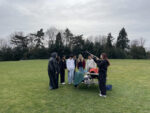
It was overcast and dry. Some sun was peaking through. It got a bit windy at times, but there was usually a nice gentle breeze. It was about sixteen degrees Celsius. The satellite pass was really interesting to see. The experience was quite grounding - being connected to an orbiting machine in the sky.
2025-03-21 12:25:30
Richard A Carter
University of York, Campus East, United Kingdom
United Kingdom
NOAA-18
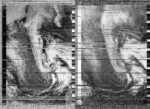
Software problems caused frequent glitches in the audio stream, resulting in this rather "striated" sounding, despite an otherwise excellent signal. A reminder, if there ever was, of the fragile chain of material structures and processes that enable these activities - and of how this fragility emerges from their status as constantly performing 'agents' in the world, rather than the typical image of technology as always fully tamed, always fully obedient to human imperatives.
2025-03-20 22:30:00
The Seaweed Institute and Goonown Growers
CAST, Helston, Cornwall, United Kingdom
United Kingdom
NOAA-18

2025-03-20 22:45:00
Cosmos Astronomy Club
Pune, India
India
NOAA-18

2025-03-20 12:09:00
Filip Shatlan and Diana Engelmann
Gainesville, Florida , United States
United States
NOAA-18

2025-03-20 12:06:00
Heidi Neilson
Gilboa, New York, United States
United States
NOAA-18

2025-03-19 23:41:00
Filip Shatlan and Diana Engelmann
Gainesville, Florida , United States
United States
NOAA-18
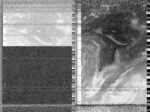
2025-03-19 22:58:00
Cosmos Astronomy Club
Pune, India
India
NOAA-18

2025-03-18 23:55:00
Filip Shatlan and Diana Engelmann
Gainesville, Florida , United States
United States
NOAA-18

2025-03-16 11:10:00
Vienna Automatic
Vienna, Austria
Austria
NOAA-18

2025-03-16 02:56:00
Heidi Neilson
Gilboa, New York, United States
United States
NOAA-18

2025-03-15 03:09:00
Heidi Neilson
Gilboa, New York, United States
United States
NOAA-18

2025-03-13 21:39:00
Vienna Automatic
Vienna, Austria
Austria
NOAA-18

2025-03-13 15:55:00
Heidi Neilson
Gilboa, New York, United States
United States
NOAA-18

2025-03-12 21:48:00
Vienna Automatic
Vienna, Austria
Austria
NOAA-18

2025-03-12 12:11:00
Filip Shatlan and Diana Engelmann
Gainesville, Florida , United States
United States
NOAA-18

2025-03-12 16:09:00
Heidi Neilson
Gilboa, New York, United States
United States
NOAA-18

2025-03-12 03:48:00
Heidi Neilson
Gilboa, New York, United States
United States
NOAA-18

2025-03-11 23:43:00
Filip Shatlan and Diana Engelmann
Gainesville, Florida , United States
United States
NOAA-18

2025-03-10 23:56:00
Filip Shatlan and Diana Engelmann
Gainesville, Florida , United States
United States
NOAA-18

2025-03-08 10:45:22
Steve Engelmann
Santa Monica Pier, United States
United States
NOAA-18



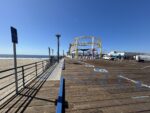

Captured a satellite pass today from the Santa Monica pier. Sunny and 16°C, a typical March day. Two months after the fires that leveled most of Pacific Palisades it is hard to tell anything happened in the rest of the LA area. The pier is full with the usual sight-seers. Bike riders and volleyball payers do what they do. You have to know where to look for the evidence. At the water's edge interesting patterns are made of burned vegetation and ash. The new presidency is hard at work making us look the other way with declarations of the Gulf of America and Mount McKinley. Apparently in America there are now only two genders. Meanwhile thousands of government jobs and agencies are being canceled. Services related to education, the National Parks and medical research are no more. And the Coast Guard Academy can no longer mention climate change in any of their trainings.
2025-03-08 23:22:00
Filip Shatlan and Diana Engelmann
Gainesville, Florida , United States
United States
NOAA-18

2025-03-07 11:24:00
Vienna Automatic
Vienna, Austria
Austria
NOAA-18


We've skipped from winter to summer. It's already t-shirt weather.
2025-03-05 21:38:00
Vienna Automatic
Vienna, Austria
Austria
NOAA-18

This is the first test transmission from the Vienna Automatic station.
2025-03-04 22:33:00
Filip Shatlan and Diana Engelmann
Gainesville, Florida , United States
United States
NOAA-18

2025-03-03 11:14:02
Sasha Engelmann
Between Queens and Schilling Buildings, Royal Holloway University of London, United Kingdom
United Kingdom
NOAA-18



The alps curve with sharp icy edges, highlighted against the otherwise dark land surfaces of Europe. Around campus, and across parks in London, purple and yellow bulbs are pushing through the grass. I fight the urge to lie down on the grass and smell them up close, aware of surrounding students.
2025-03-02 22:58:00
Filip Shatlan and Diana Engelmann
Gainesville, Florida , United States
United States
NOAA-18

2025-03-02 13:06:06
Pauline Woolley
The Urban Garden, Nottingham, UK
UK
NOAA-18

A very low 22 degree pass on a cloudless March afternoon. After weeks of being trapped under a sheet of grey the scattered blue light of the sky is so very welcome. I sit listening to the beeps of the pass watching a sleepy Bumble Bee wave around after his winter rest. Yellow Hazel catkins tremble on a slight breeze and seem to vibrate in time with the click of the radio waves. For this brief moment, everything is connected.
11 degrees Celsius
54% humidity
1032mb
2025-02-25 11:25:00
Cosmos Astronomy Club
Pune, India
India
NOAA-18

2025-02-24 22:51:00
Cosmos Astronomy Club
Pune, India
India
NOAA-18

2025-02-24 11:15:00
Filip Shatlan and Diana Engelmann
Gainesville, Florida , United States
United States
NOAA-18

2025-02-23 22:48:00
Filip Shatlan and Diana Engelmann
Gainesville, Florida , United States
United States
NOAA-18

2025-02-22 11:41:00
Filip Shatlan and Diana Engelmann
Gainesville, Florida , United States
United States
NOAA-18

2025-02-21 11:53:00
Filip Shatlan and Diana Engelmann
Gainesville, Florida , United States
United States
NOAA-18

2025-02-20 11:54:48
Richard A Carter
University of York, Campus East, United Kingdom
United Kingdom
NOAA-18

First notably warm day of the year, unusually so in February, at 15C. Blustery. Malfunctioning equipment cut off both the start and end of the transmission recording - which also survived a complete computer crash.
2025-02-17 12:32:20
Sasha Engelmann
Hackney Downs, London, United Kingdom
United Kingdom
NOAA-18


Some sunlight was very welcome after many days of freezing, rainy weather. As I tracked NOAA-18 over the Atlantic at only 31 degrees maximum elevation to the west, three women and a dog came over to ask what I was doing. One of them turned out to be a former physics teacher and professor, and we discussed satellite orbits. The small, short haired dog kept bouncing across my laptop.
During the pass I thought of a recent rebroadcast of a 1970s radio interview in which the host described February as a month that is 'honest'. It doesn't lead you to think that things are any different than they are. It is miserable, and everyone knows it. Cheerful holidays like Mardi Gras are balanced by Ash Wednesday. If you make it through February, the host said, you will make it through the year...
2025-02-17 11:27:00
Cosmos Astronomy Club
Pune, India
India
NOAA-18

2025-02-16 11:17:00
Filip Shatlan and Diana Engelmann
Gainesville, Florida , United States
United States
NOAA-18

2025-02-15 22:49:00
Filip Shatlan and Diana Engelmann
Gainesville, Florida , United States
United States
NOAA-18

2025-02-15 11:18:31
Applicant Visit Day attendees
Between Queens and Schilling Buildings, Royal Holloway University of London, United Kingdom
United Kingdom
NOAA-18


This image was collected by a group of secondary school students who attended an Applicant Visit Day at Royal Holloway. During the pass, Meteor MN2-3 made an appearance on the same frequency as NOAA 18!
2025-02-14 11:43:00
Filip Shatlan and Diana Engelmann
Gainesville, Florida , United States
United States
NOAA-18
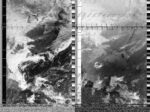
2023-01-31 11:07:00
Prajvi + Alex
Landaff Fields, Cardiff , United Kingdom
United Kingdom
NOAA-18


A second recording just after NOAA 19 passed our horizon.
2025-02-08 11:19:00
Filip Shatlan and Diana Engelmann
Gainesville, Florida , United States
United States
NOAA-18

2025-02-07 11:21:32
Sasha Engelmann
Between Queens and Schilling buildings, Royal Holloway University of London, United Kingdom
United Kingdom
NOAA-18



Yesterday the pressure over London climbed to 1034 hPa. As I cycled to London Bridge, it felt like anything in the air was being pushed out, even flung out, of the air above the city. I could see a dark cloud in the distance but as I cycled its shape got smaller and smaller, fleeing. The temperature had also dropped several degrees. Everything felt to be in motion, an intensity of forces.
As I left the house at 6:30am today, the coldness remained but the pressure had dropped. During my lecture in Atmospheres: Nature, Culture, Politics, the rain suddenly arrived, pelting the classroom’s porous windows with great urgency. ‘Hello rain!’ I said in my lecture. During a break I cracked a window and observed two muntjack deer grazing placidly on the field below.
2025-02-07 11:31:00
Filip Shatlan and Diana Engelmann
Gainesville, Florida , United States
United States
NOAA-18
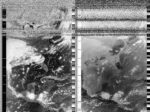
2025-02-06 11:44:00
Filip Shatlan and Diana Engelmann
Gainesville, Florida , United States
United States
NOAA-18

2025-02-04 11:59:25
Deyi Xu, Guo Zhen, Somin Yu, Weiting Diao, Yu-Hsin Hsiao, Ziyi Yang
Near the Deptford Bridge DLR station, United Kingdom
United Kingdom
NOAA-18

Cloudy, just like the typical British weather, also a bit cold. And I did see heavy clouds in the image.
2025-02-04 11:58:26
Ning Pang
Broadway Fields, UK
UK
NOAA-18
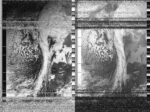
Cloudy, windy, a little bit cold. A long cloud through UK.
2025-02-04 12:04:03
deptford high street park, uk
uk
NOAA-18

Today in the UK, the weather was cold and grey, but while experiencing this, we were receiving ticking sounds from a satellite and converting them into an image. The resulting image of the sky was striking and different from the one outside, blending technology and nature. The climate crisis is evident in my community with more erratic weather patterns, storms, and rising pollution. The contrast between the natural world and the technology used to interpret it highlights both the challenges and potential solutions we face in addressing climate change.
2025-01-24 12:37:55
Richard A Carter
York, United Kingdom
United Kingdom
NOAA-18



This weather sounding took place during Storm Éowyn. Even when undertaken within the ostensibly sheltered confines of York University campus, the roaring winds were more than sufficient to knock over and scatter the ground station equipment, even as the sounding was taken place! The double cross antenna fell to pieces and had to be repaired and held in position against the wind as NOAA-18 passed overhead - surprisingly, this did not appear to impact the recording.
Undoubtedly, the chief source of local concern around the climate crises is in its potential to generate flooding from the nearby rivers Ouse and Fosse.
2025-02-01 22:44:00
Cosmos Astronomy Club
Pune, India
India
NOAA-18

2025-02-01 11:54:00
Hanna&Flo
Leipzig, Germany
Germany
NOAA-18

2025-02-01 11:07:00
Filip Shatlan and Diana Engelmann
Gainesville, Florida , United States
United States
NOAA-18

2025-01-29 11:35:49
Sasha Engelmann
Royal Holloway University , United Kingdom
United Kingdom
NOAA-18


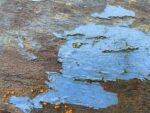
My colleagues joke that January has been a sodden, dark, misty tunnel. On a decaying picnic table next to the Physics Department, I notice bright orange fungi, like colourful jelly strung across the peeling blue paint. It reminds me of a kind of fungi I once saw in the temperate rainforest at the bank of the Puget Sound, near Seattle.
2025-01-31 11:20:00
Filip Shatlan and Diana Engelmann
Gainesville, Florida , United States
United States
NOAA-18

2025-01-30 11:33:00
Filip Shatlan and Diana Engelmann
Gainesville, Florida , United States
United States
NOAA-18

2025-01-26 11:06:49
Steve Engelmann
Santa Monica, United States
United States
NOAA-18


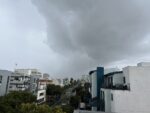

I went to the top of a parking garage in downtown Santa Monica in the hopes of having a clear view of the sky. I didn't get as clear of an image as I hoped for. Perhaps some interference from the surrounding buildings, etc.
Today was the first meaningful rain event for almost 9 months. This has been the driest start of the rain season since records began in 1877. Not a surprise when 3 weeks ago dry winds conspired in the development of six fires burning simultaneously around Los Angeles. 28 lives were lost and over 16 thousand homes destroyed. The human fingerprint is all over this event from the initial ignition, the preparation and response from the fire department, housing development within a flammable ecosystem, and ultimately, the climate crisis. A lot of finger pointing from the new president to the individual. Will there be any meaningful change? This will happen again.
2025-01-25 12:25:52
Sasha Engelmann
Hackney Downs, London, United Kingdom
United Kingdom
NOAA-18


The aftermath of Storm Éowyn is a beautifully calm, sunny and clear day in London. The storm hasn't left much of a trace- there were barely any high winds in the Southeast, whereas the Met Office issued a very rare 'red' weather warning for Scotland and Northern Ireland, where winds surpassed 100mph, millions were left without power and roads were damaged. Between 2011 and 2024, there were 'red warnings' on just 19 days. During the same time, 521 days saw amber warnings while 1,922 had yellow warnings. One of the recent red warnings was in July 2022 during the 'severe heatwave' that raised temperatures over 40 degrees Celsius, melted train tracks and started wildfires across the UK.
I collect a satellite image from the middle of Hackney Downs. The orbit is very far to the West of London, only 34 degrees in maximum altitude. As the image loads, the prominent swirling cyclone over the Atlantic feels incongruous to the blue sky above. It is an image of extreme drama and turbulence. Here, we are in an envelope of calm.
2025-01-24 11:09:00
Filip Shatlan and Diana Engelmann
Gainesville, Florida , United States
United States
NOAA-18

It's been very cloudy over the past week, and school was out for a day across central to upper-Florida high schools due to super low temperatures. Pensacola saw some snow interestingly enough! Today (the 25th of January) is the first clear and sunny day we've had in a week.
2025-01-22 22:55:00
Filip Shatlan and Diana Engelmann
Gainesville, Florida , United States
United States
NOAA-18

2025-01-22 11:24:14
Sasha Engelmann
Queens Building Fire Escape, Geography Department, Royal Holloway University of London, United Kingdom
United Kingdom
NOAA-18


A last minute tutee cancellation gave me a fifteen minute gap in my back to back student meetings, and I snuck out the back of the department to the fire escape overlooking Egham. It was bitingly cold, but fresh. Though the pass was relatively high, the signal struggled to emerge from the static, and I decided the fire escape might not be the best location given interference from heavy machinery, air venting and lab equipment directly adjacent.
The news has been filled with the Trump inauguration. For those of us, like my family, who have been directly affected by the LA fires, the slew of executive orders since Monday has felt like another set of fires that were foreshadowed by the burning of Los Angeles over the last two weeks. I am still checking the Calfire map many times daily, and stunned that 'containment' of the Palisades fire is still only 63%. A county infrastructure damage map has recently been released. It looks like a pointilist painting of red, black, green and yellow, but the coloured dots are houses, schools, cafes, libraries, offices and other structures in various states of damage. The map is mostly red, which means 100% structural damage. I found a photo of the house I lived in during high school and couldn't stop looking at it. It is marked as 100% damaged, but unlike other homes that are just piles of rubble, our former house is a hollow cinderblock rectangle with the remainder of the two-story facade pointing to the sky. The single window in the facade looks like a wide eye. Everything inside has burned, but because of the existence of the facade and cinderblock walls, it feels like a hollowing-out rather than a burn-to-the-ground. One can see directly into the corner of the garage where we used to have our family desktop computer- this was where I downloaded music on Limewire for the first time and made CDs for myself and family road trips. It is also the corner of the garage where I sat and chose my first semester's courses at Stanford University. The remainder of the house is a poetics of space- of corners, bubbles, staircases and windows where so much of my life unfolded. The second story - where my bedroom was - is completely gone, and the ring of tall bamboo that used to surround the house is absent. This means the hollow house is open to the sky- in the photograph, this is a pale gray sky that suggests ash still swirling in the air.
2025-01-22 11:35:00
Filip Shatlan and Diana Engelmann
Gainesville, Florida , United States
United States
NOAA-18

2025-01-21 11:48:00
Filip Shatlan and Diana Engelmann
Gainesville, Florida , United States
United States
NOAA-18

2025-01-19 12:00:00
Marius
Alba Iulia, Romania
Romania
NOAA-18

2025-01-19 10:54:52
Steve Engelmann
Studio City, California, United States
United States
NOAA-18


This pass was captured from the Hollywood Hills facing the San Fernando Valley. My friend Henry helped out. There were some large power cables just overhead which I suspect created a little interference initially. The skies were a bit hazy, which is a big change from just the day before. I do not think this is related to the fires as they are mostly contained at this point and not actively burning.
2025-01-19 12:01:13
Pauline Woolley
The Urban Garden, Nottingham, UK
UK
NOAA-18



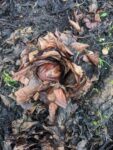

It's mid January and grey. There is no bird song today. Just one lonely gull flying above land locked and trapped between the desolate winter ground and the concreate pallor of the thick cloud. During the pass I look for signs of spring from plants and fruits that shrivel to nothing to protect themselves. Today's pass isn't clear. An over sight from me for not unravelling the cables properly. Cracked lines and a broken image seem to echo a deeper global anxiety. Or maybe it's just January blues.
2 degrees Celsius
81% humidity
1019 mb
2025-01-19 12:02:27
Sasha Engelmann
Hackney Downs, London, United Kingdom
United Kingdom
NOAA-18
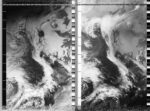


A passage of the novel Bosnian Chronicle (Travnička hronika) by Ivo Andrić accurately depicts London's weather today. Reading before bed last night, I marked the page of weather scenography with a large stone, and found it on my desk in the morning - a note to self from the Bosnian town of Travnik in the late 19th century:
"It meant rain and mud and snow; snow that turned to rain while still in the air, rain that became mud as soon as it hit the ground. At dawn, from behind the patch of clouds, a pale and listless sun would paint the east a wan rose; at the end of a gray day it would reappear again in teh west as a sickly yellow glow, just before the grayness passed into the pitch-black of night. During the day, as at nighttime, the damp breathing of the sky and the soil mingled together in a smoke-thin drizzle that seeped through the town and pervaded everything; in the silent, inexorable alembic of the damp, solid things lost their shape and color, animals changed their temper, men thought and acted moodily"
"The wind, soughing along the narrow valley twice a day, merely shifted the damp around and, by wafting sleet and a smell of wet woods as it went, brought new waves of humidity; so the pools of dampness only nudged and overlapped one another and the raw, bone-chilling mountain mist merely replaced the stale, moldering kind in the town"
- Ivo Andrić, Bosnian Chronicle, pp. 109
2025-01-16 11:11:00
Filip Shatlan and Diana Engelmann
Gainesville, Florida , United States
United States
NOAA-18

2025-01-16 17:17:00
Cosmos Astronomy Club
Pune, India
India
NOAA-18

2025-01-14 11:37:00
Filip Shatlan and Diana Engelmann
Gainesville, Florida , United States
United States
NOAA-18

2025-01-11 10:56:21
Steve Engelmann
Santa Monica Pier, United States
United States
NOAA-18

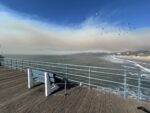



This is day 4 since the Palisades Fire began and it has been quite the rollercoaster. Regardless, NOAA 18 decided to fly over with an elevation of 89°. You don't get much better than that. I decided to visit the Santa Monica Pier as it has great exposure to the sky, and is about as close as I can get to the fire zone. One of the top destinations for tourists, there was much activity. A bodyboarder screams as he catches a wave. The rollercoaster operator ask his riders if they want to go for a second spin. A neon sign above a cafe reads, "Salty air, and not a care".
On a small island of homes, my house defied all odds - standing strong. My classroom of 25 years went up in smoke. About 6 1/2 minutes into the satellite pass you can see a thin strip of clouds headed out to the ocean. The winds have died down, but the fire continues. At just 11% containment, it is now threatening Brentwood and Encino. 8 months of no rain and some strong winds. It doesn't take much to change your course.
2025-01-07 11:25:00
Filip Shatlan and Diana Engelmann
Gainesville, Florida , United States
United States
NOAA-18
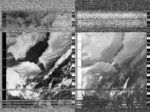
2025-01-06 11:39:00
Filip Shatlan and Diana Engelmann
Gainesville, Florida , United States
United States
NOAA-18

2025-01-05 11:52:00
Filip Shatlan and Diana Engelmann
Gainesville, Florida , United States
United States
NOAA-18


Another cool, crisp day. Turkey vultures soar on invisible updrafts in the sky. The dry grass is filled with tiny capped nuts, acorn-like but smaller. Surprisingly, dogs search them out and crunch their shells- an unlikely snack. Spanish moss hangs serenely from oak branches, sometimes reaching the ground.
2025-01-04 10:47:21
Steve Engelmann
Bel Air, California, United States
United States
NOAA-18





Today I thought I would visit LA's Getty Center. They are coordinating a project called PST:ART which includes over 70 exhibitions throughout southern California with a focus on how art and science collide. The Getty Center also has an amazing outdoor area with spectacular views of Los Angeles. What a great place to also grab a satellite pass - I thought. When security took a look at the disassembled antenna I was bringing along, they had second thoughts. I wasn't able to convince security, or her supervisor, that my intentions were harmless. But I've learned to be flexible. On the spot I hatched a plan B. With 20 minutes to go, I used my speed-walking skills to relocate on an overpass where Sunset Blvd crosses the 405 freeway. On the first image you can see the Getty Center in the background perched on a hillside. The view was a step down from the Getty, but also, not bad. I'm sure there were many suspicious looks from the busy street with a strange man pointing an antenna at the sky. Then again, this is a stone's throw away from Hollywood. At a little over 8 minutes in, a commuter bus blocked by reception for two seconds. A line of static documents the interference. Life throws us many curveballs. The next four years should be no different.
2025-01-03 10:58:05
Steve Engelmann
Pacific Palisades, California, United States
United States
NOAA-18




It is hard to pass up an opportunity when a satellite is passing by with an elevation of 87°. Back in Los Angeles I thought I would try out roof-top parking for an unobstructed view. The skies were mostly cloudy with a cool marine layer bringing in a little fog. There was also a light scattering of stratocumulus and high cirrus clouds, but no precipitation. The Air Quality Management District initiated an Air Quality Alert. An inversion layer, which is common in LA, traps air pollutants low to the ground. For this reason there is a ban on wood burning. The fine particulates get deep into lungs and can trigger a range of health issues. Could use some rain, but nothing in the forecast for the next 10 days.
2025-01-02 18:37:00
Cosmos Astronomy Club
Pune, India
India
NOAA-18

2025-01-01 05:54:00
Cosmos Astronomy Club
Pune, India
India
NOAA-18

2024-12-31 11:00:29
Pauline Woolley
The Urban Garden, Nottingham, UK
UK
NOAA-18

A low winter sun brushed over the bare trees and though it tried to break through it was beaten by the cloud. While the pass happened I moved the outside furniture and bins around in preparation for the windy weather that was forecast for the afternoon.
10 degrees Celsius
2024-12-31 11:14:24
Steve Engelmann
Newberry, Florida, United States
United States
NOAA-18




Got up on a roof in central Florida with my nephew to do a little training and compare two different antennas on a satellite pass. The sun came in and out of the clouds often. Combining the warm December temperatures, humidity and the dark roof surface I came down a little sweaty.
On the last day of 2024 it is always interesting to assess the year that just passed and contemplate what lies ahead. 2023 was the warmest year on record regarding global temperatures. The consensus is that 2024 will end up being warmer still. At this moment there is a polar vortex sending frigid temperatures to the midwest and northeast. Ironically, climate change makes these events more likely. Searching for opportunities to dial down carbon emissions would be a great new year's resolution.
2024-12-30 11:28:00
Sasha Engelmann
Steve Engelmann
Gainesville, Florida , United States
United States
NOAA-18


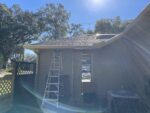


We were late in plugging-in the semi-permanently mounted V-dipole antenna to the 'recording' AGS, but happy to see it standing on the peak of the garage roof, glinting orange-pink in the sunlight, without anyone attempting to hold it in place, as it received an image from NOAA-18. After several antenna radiation pattern calculations, we decided to try a test antenna height of 0.8 metres off the pinnacle of the roof. While some radio forums suggest putting the antenna as high as possible, others suggest this is not necessary, especially if one is already mounting on a semi-conductive wooden roof (as opposed to concrete or steel). Depending on what surface the v-dipole antenna takes as 'ground', the antenna height can create different patterns of reception, and can even lead to 'null' points where no signal data can be received. However, as Gainesville can get very strong, hurricane force winds, and we couldn't see many examples of tall antennas or rooftop weathervanes in the neighbourhood, we opted to keep the antenna height under one metre, and 0.8 seemed to work great today, despite our lateness. To secure the antenna mast to the roof, we used a steel 'weathervane' mount with special wood screws with deep ribbons that we had gotten at the local ACE hardware store, and a good coating of a transparent sealant gel called, somewhat counter-intuitively, 'Through the Roof!' We managed to hit a stud with one side of the steel mount, which was a good sign for the sturdiness of the antenna, but also meant that the drill pushed further into the roof on the stud side of the mount, and slightly unbalanced the mount. We unscrewed, knocked some wooden 'shims' under the metal pad at the stud side, and checked its straightness by hanging a roll of tape on a golden ribbon next to the mast. Tomorrow, hopefully, we will be able to tie the RF cable onto the mast, and bracket / secure the cable to the roof, wrapping it around the edge of the garage door and entering the garage where the AGS will stay plugged in.
2024-12-29 17:45:00
Cosmos Astronomy Club
Pune, India
India
NOAA-18

2024-12-29 11:41:00
Sasha Engelmann
Steve Engelmann
Gainesville, Florida , United States
United States
NOAA-18


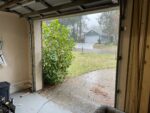


A huge amount of progress was made today with AGS reception! It is hard to contain the excitement while writing this weather note. After several months exploring ‘herringbone’ distortion patterns and deep diving into NOAA APT + Raspberry Pi tutorials, the team found an ‘instructable’ tutorial via which several people seemed to be receiving relatively long and clear NOAA images. In this tutorial, Grayson noticed a filter option for rtl_fm called -F 9 that we hadn’t tried to implement in the AGS code yet, and he added it in an update yesterday. Last night, the roof mounted turnstile in Florida had to be taken down due to a lightning storm and ‘extreme’ tornado warning. Yet even though it was up against a garage wall and under an overhang, the last evening pass of the day yesterday showed telemetry data at the top and bottom of the image, where previous captures only recorded static.
This morning, despite an ongoing storm and tornado warning, the Turnstile was positioned out on the front lawn for a 70 degree max elevation pass shortly after 11:40. In stark contrast to previous ‘letterbox’ type images in which satellite data only appeared in the central strip of the recording, today the image is significantly longer and clearer, with telemetry data clearly showing through static at the beginning and end of the pass. Also, the typical ‘herringbone’ type distortion seen in all previous images appears to be gone! More testing will verify this but at present this is something to celebrate.
2024-12-28 11:53:14
Sasha Engelmann
Steve Engelmann
Gainesville, Florida , United States
United States
NOAA-18




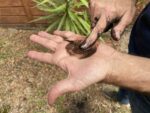
To continue our antenna comparison, we sat on the roof shortly before noon with a weatherised V-Dipole and the tripod- mounted Turnstile, looking north. The V-dipole was hooked up to AGS 15, while the Turnstile received via an android phone running SDR++. The image attached to this post is from the latter. After the pass, Steve did a soil texturing test which revealed the local soil to be ‘loamy sand’.
2024-12-24 05:55:00
Cosmos Astronomy Club
Pune, India
India
NOAA-18

2024-12-23 22:32:51
Denys
Portsmouth, UK
UK
NOAA-18

Tiny amounts of rain at receiving spot. Image shows some rain clouds over France and Bay of Biscay and just off the coast of Ireland in the Atlantic Ocean.
2024-12-23 17:22:00
Cosmos Astronomy Club
Pune, India
India
NOAA-18

2024-12-23 11:17:00
Sasha Engelmann
Steve Engelmann
Gainesville, Florida , United States
United States
NOAA-18

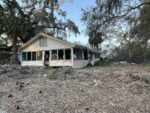



"How high did the water get?" asked Steve. Our waitress silently walked to the door of 'Steamers' cafe and pointed to a green line drawn on the wall above chest height. "The previous high water level was all the way down here" she added, bending all the way down to a wave pattern drawn with Sharpie about a foot off the ground. "Then Idalia was here" she said, referencing the 2023 Hurricane, and pointing to a black mark around two feet off the ground, not far from the lower mark. "We prepared for it to be somewhere in between" she said. In the midst of the bustling cafe at lunchtime, we all took a moment to look at the marks on the wall in silence. The distance between the water level that the town of Cedar Keys had prepared for, and how high the water rose during Hurricane Helene, was almost unbelievable.
Later, driving through Suwaneee, another Gulf-side town north of Cedar Keys, we saw tree branches hoisted into upper tree branches, boats that appeared to have been lifted and dropped in driveways, broken windows, boarded-up holes, and debris still clinging to the upper branches of palms, cedars and other bushes. The newer houses were built on stilts 16 feet high or more - the new 'code' for building, we had learned from the waitress.
2024-12-21 11:40:57
Sasha Engelmann
Steve Engelmann
Old golf course next to W Newberry Road, Gainesville, United States
United States
NOAA-18



A clear, cool, breezy day here in Florida. We stand on separate hills in the former golf course, one of us with a turnstile antenna, another with a v-dipole. Later, comparing images, we notice how there is a clear line at the midpoint of the turnstile's image that doesn't appear in the image made with the dipole. This line is appearing at almost the same spot in previous images collected with the same laptop and antenna - a signature of the laptop? or a glitch in antenna reception, at the peak of the satellite pass? Later in the day, we test the same antenna from the roof, shaded by southern live oaks. As there is no wind or rain predicted, we tape it to an old camera tripod found in the garage, simply stand it up on the roof's apex, and run a cable through a crack in a window.
2024-12-21 11:29:00
Hospitalfield
Arbroath, Scotland
Scotland
NOAA-18

Yellow weather warning just starting here. Bright but very very windy from 2 floors up, leaves swirling everywhere, bins falling about
2024-12-20 11:54:51
Sasha Engelmann
Southern live oak tree, former golf course, Newberry, United States
United States
NOAA-18





After a few warm, humid days, the air today felt lighter, cooler and clearer. I took a long walk around the neighbourhood, and it wasn't long before I came across the edge. A grid had been carved into the land near a local forest, sandy flats exposed, and the sounds of hammers and staple-guns echoed back and forth. I walked to the very limit of the housing development and found a gap in the trees, but as soon as I entered the forest I could see someone was living there, or at least squatting for a while, in a shelter made of tree branches. Being alone around sunset, I turned away and found the empty pavement again. As I returned home, the orange sunset light was glowing through the palms, matching in intensity the light-up candy canes on a nearby lawn.
2024-12-15 11:03:50
Sasha Engelmann
Hackney Downs, London, United Kingdom
United Kingdom
NOAA-18





Today is my last satellite pass in London during the year-long attempt at capturing satellite images and weather observations that began on the solstice in December 2023 and will come to an end in a few days. Hackney Downs was the best version of itself for the occasion, a low-lying sun shining across the grass, and reflections from apartment block windows adding a kind of sparkle or glimmer. Tomorrow I travel to Florida to visit my Mom who moved there a few months ago. As I traced the typical arc of the satellite orbit, I realised I would need to invent a somatic ritual for this year's solstice- both as a way to recognise the culmination of this near-daily practice of satellite image capture and weather sensing, but also as a means to start a new cycle, a new set of practices that I can't quite foresee yet. On a call with two very good friends later in the afternoon, this sentiment was confirmed. Speaking a set of rituals they have carried out during a time of transition, a time that is joyous but not without difficulty, one of them said "everything is meaningful, everything is magical - it has to be".
2024-12-12 11:42:49
Sasha Engelmann
Hackney Downs, London, United Kingdom
United Kingdom
NOAA-18


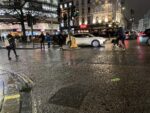


London is all glare and reflection today as a very low cloud-mist settles over the city. The sheen of street signs, asphalt, vans, and buses makes everything more obviously aggressive and frantic. As I cycle to south London after dark, a white Prius pulls out in front of my bike, so close I have to skid to a halt. When the driver looks over his shoulder, and sees me braking and motioning my fright, he hardly blinks as he merges into the centre of the road. The tops of tall buildings are drowned in cloud so it feels like we are living in a reduced space, the ceiling coming down. I am reminded of the fictional city Ravicka in Renee Gladman's novel Event Factory. Ravicka is a city of smoggy, ‘yellow air’ that, “vibrates around the foreigner in the street” (Gladman, 2010: 41). Edges and borders shape-shift as the city appears to rearrange itself, or, as the main character observes, “the singing structure eludes me” (Gladman, 2010: 93). Today, in Gaza, a house was flattened in the packed Nuseirat refugee camp, while two separate strikes targeted local workers securing aid convoys. US officials claim they have a 'jurisdictional dispute' with the ICJ and reject its call for arrest of Netanyahu and Yoav Gallant; another 'structure' that continues to elude.
2024-12-11 11:55:04
Sasha Engelmann
Hackney Downs, London, United Kingdom
United Kingdom
NOAA-18





Whether by icy air or circulation of blood, the act of going out for a satellite pass at lunchtime managed to break a mild migraine - my first ever, I think - that had been ongoing for the last twenty four hours despite many painkillers, salves, and hours lying down. By the time my brain and vision had relaxed from the pain enough for my senses to be alert to detail in the world, the sun had fallen. I haunted the park at night, peering into blue-lit windows and noticing the ways streetlights highlighted the elegant curves of plane tree branches from below. A faint oval-shaped pink cloud hovered over one hill of the park like an omen. Two dogs tossed and tumbled in the dark, their paws vying for dominance and their teeth glowing. They were eerily quiet except for their panting breaths. A person pushing a baby stroller walked briskly along a lit path with a tied up Christmas tree slung across their back.
2024-12-06 11:18:06
Sasha Engelmann
Hackney Downs, London, United Kingdom
United Kingdom
NOAA-18



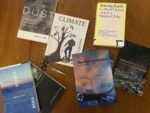
As I look ahead to the final sprint of a writing project, for which I will be submerged in books and my laptop the whole weekend, I am inspired by the collections of geographical thinking and arts practice that I pull out of the towering pile of books on my desk's side-table. I read of 'volcanic polyphonies', 'magmatic languages', 'fluvial hydropoetics', 'sand saltations', 'geo-mimicry' and 'reclaiming energy flows'. I think about the ways in which, across scholarship and creative practice, artists and writers are amplifying the animacies and memories of the elements, from Sotaventine rivers in Mexico, to tidal islands in Scotland, to the humid 'warm fronts' of Southeast Asia.
In the satellite image that I capture today from Hackney Downs, I wonder about the repeated patterns and rehearsals of clouds in the North Atlantic, and consider these patterns as another form of air's 'working memory... a memory of energy' (Szerszynski, 2019).
2024-12-06 11:19:00
Prototype Automatic Ground Station 10
London, UK
UK
NOAA-18

The needle on the barometer crept up from its place around 1,009 hPa yesterday afternoon to 1019 today around noon. True to the barometer, the sky opened up into a clear, crisp blue. I was reminded of Gaston Bachelard's writing on the aerial imagination, and his writing of air as 'thin matter' that is especially sensible to poets.
2024-12-05 11:32:21
Sasha Engelmann
Hackney Downs, London, United Kingdom
United Kingdom
NOAA-18


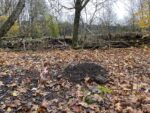

The satellite image starts in darkness. Absent of any rays of light from our nearest star, the top left hand corner of the image is almost pure black. I think of NOAA-18 and its near-infrared sensors trying to capture any stray photons as the satellite crosses the Arctic circle and the Nordic countries. The darkness feels vast, like what I imagine the deep space around Earth must feel like.
While planting a willow tree named Hildegard at the Stave Hill ecological park in South London on my lunch break yesterday, I dug into deep, black layers of topsoil. Rebeka, keeper of Stave Hill, had inherited a mountain of rubble deposited from war-ruined buildings, as well as imported trash, on which the eco park was established in the 1980s. She asked all of the schoolchildren from nearby schools to bring worms to the hill, and over the decades, the worms got to work. The deep, dark mulch that I dug into yesterday is the intergenerational inheritance and gift of these worms, and the soil that my almost seven year old willow tree will grow into. Hildegard joins around ten other willows of ‘diverse varieties’ planted in a new willow coppice near Russia Dock Woodland and the Globe Pond. As Rebeka explained to me, over the decades, these small twig-like willow trees will sprout from their bases, and their bendy branches will be sustainably harvested to build fences and other infrastructure around Stave Hill, another gift for the future.
2024-12-04 06:13:00
Los Angeles AGS
Los Angeles, United States
United States
NOAA-18

2024-12-03 21:48:00
Prototype Automatic Ground Station 10
London, UK
UK
NOAA-18

London's air is a crisp, cold air today, but the movement of the city keeps me warm. The pressure on my barometer reads over 120 hPa, and the arrow of change points to 'clear' weather. I spend the day in rooms full of students in colleagues, on multiple tube and overground trains, and on busy high streets. Walking from my university campus in Bloomsbury to Tottenham Court Road at sunset, I can almost feel the warm glow of each body as it passes by me in the crowd.
2024-12-03 18:51:00
Los Angeles AGS
Los Angeles, United States
United States
NOAA-18


2024-12-02 10:31:29
Weitao Wang and Sasha Engelmann
Fire escape at the back of Queens Building, Department of Geography, Royal Holloway University of London, United Kingdom
United Kingdom
NOAA-18



This weather note was written by Weitao Wang, PhD student in the Geography department at Royal Holloway University, currently doing a fantastic project on the 'The geopower of air and fire: a cultural geography of fiery rituals in China'.
“It’s a typical day in the UK, partly cloudy day, a bit windy, and not too cold. As it’s the first time for me to participate, I feel a sort of transit in terms of the ‘body-(satellite)-weather’ relation. At the beginning, I found myself disconnect with the weather (and satellite) because I had no idea of where it would come from and where it would go. However, as time moved on, I felt my body gradually coordinate with the satellite movement in the sky as I listened to the noises in the signal. At the end, the signal slowly faded with noise, which made me wonder whether my direction was still correct and thus feel out of sync again with the satellite".
"The weather images produced on the screen reminded me of the previous remote sensing course I had took before, where the date collection process was more detached, abstract and rational because we were just sitting in front of the computer, clicking, and typing. However, today’s outdoor data acquiring seems to invite me to be closer to the real-time weather dynamics.”
2024-11-29 11:08:30
Sasha Engelmann
Near Ledbury Building, Friary Estate, Southwark, United Kingdom
United Kingdom
NOAA-18





I found myself at the Southwark Reuse and Recycling Centre shortly before 11am this morning. I have been fascinated by this place for a while- it is a series of gigantic warehouses where one can bring any kind of object, from clothes to appliances to batteries to cleaning equipment to stones and plates to furniture, in any condition, and after putting each item in the right place, the team at the Centre takes care of sorting, testing and repurposing. Clothes and linens are sent to local charities, appliances are tested and re-used if possible, batteries and old phones are recycled and household items of all kinds are either repurposed or ground down into their raw materials to make new things. As I pulled up in a cab with a bunch of stuff from my old flat in the trunk, an older man with long gray hair was manning the entrance, and assessed me and my things before allowing me entry, like a guardian or gnome giving way to a magical place. I took my time sorting my things into different corners of the warehouse, and was amazed at everything else that was there, from phones that looked like they were last used in the 90s, to very nice bags of clothing. In various corners and levels of the cavernous space, I could see staff moving around.
As there was a satellite pass shortly after I left the centre, I found a corner of a nearby housing estate- one with at least three tower blocks of dozens of stories each- and propped my laptop on a mossy wall. Later I noticed how odd the concrete infrastructure of the estate was. There were multiple sharply angled concrete features built into the walkway in between the tower blocks. Their shape and star-like structure, and simultaneous brutalist aesthetic, reminded me of some of the socialist monuments I had seen in Croatia and Bosnia while on fieldwork earlier this month. The crisp blue sky opened above the estate, and magnified the concrete edges.
2024-11-26 10:37:48
Steve Engelmann
Topanga, California, United States
United States
NOAA-18




Captured this satellite pass from a helicopter landing site on a ridge of the Santa. Monica mountains with the San Fernando Valley to the north and the Pacific to the south. From the overlook you could see small patches of light precipitation. I was visited by a curious crow and a grizzled hiker. The hiker had more questions.
2024-11-26 06:15:00
Los Angeles AGS
Los Angeles, United States
United States
NOAA-18


2024-11-25 11:19:06
Soph Dyer
Diepoldpark, Vienna, Austria
Austria
NOAA-18





I feel a dangerously numb to news of extreme weather. Yesterday, as I read a long and moving article about drought hit farming communities in South Africa, Storm Bert inundated costal towns in the UK. Is numbness what happens when, to quote deputy first minister of Wales Huw Irranca-Davies, the feeling is “here we go again. These traumatic weather incidents are a pattern of our weather”?
2024-11-25 11:57:44
Sasha Engelmann
Hackney Downs, London, United Kingdom
United Kingdom
NOAA-18





Overnight, mountains of plane tree leaves have amassed on sidewalks, against walls and fences. Leaves paper walls, cars and bike sheds. While Storm Bert has resulted in mass-rearrangements of leaves in London, elsewhere in the UK roads have been flooded, and thousands of people were without power. Although relatively minor compared to these other events, the leaf-mountains feel oddly dramatic in today's calm, blue sky weather. Photographs don't do them justice- they are space-invaders, yellow-brown fillers of unused corners and parking spaces, where the westerly wind carried and dropped them.
2024-11-24 11:08:24
Steve Engelmann
Malibu, California, United States
United States
NOAA-18


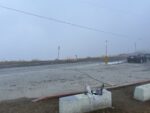
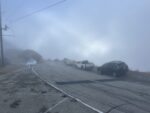

I went to the Lois Ewen Overlook in the Santa Monica Mountains hoping to maximize my capture length, but missed the first few minutes of the satellite pass. At the beginning we were in complete fog-out with a visibility of maybe 20 meters. By the time I took photos there was better visibility. The day before was the first precipitation of the year, though not even 1 cm. Slightly more rain in a few days. Los Angeles is rare in that it has a mountain range that bisects the city.
The COP 29 negotiations ended today. Experts assess that $1 trillion/year is needed to assist developing countries as they address climate impacts and build a low-carbon infrastructure. The countries agreeed to $300 million. The Trump presidency vows to withdraw from the Paris agreement - again.
2024-11-21 11:09:00
Sasha Engelmann
Hackney Downs, London, United Kingdom
United Kingdom
NOAA-18


Today's test of an Automatic Ground Station involves me carrying the AGS in a tote bag to keep it dry and away from dogs, and tracking the satellite with my Yagi-Uda antenna. The results show a diagonal current of squigly lines in channel b - lines we think might have something to do with a recent update to the code in the AGS system that attempted to produce clearer images, but might have introduced other noise signatures. The air is still freezing, and I regret not bringing gloves and a woolly hat.
2024-11-18 11:05:52
Soph Dyer
Kleingarten Schmelz and Waxeneck, Austria
Austria
NOAA-18





It's cloudy and cold, but no longer freezing. It's also Monday yet, I mistakenly checked the satellite pass times for Sunday. My displaced weekend feeling is because N and I have taken off work. We decided to only last week. The idea is to spend a day outside the heavy weather that has characterised this year. So far, we have gone swimming and eaten omelettes with pickles. Later, we plan to cook a roast and watch an episode of Self-portrait in a Coffee-Pot. In other words, cultivate our own fragile high pressure system. If its strong enough, maybe it'll even persist into the week, this indoor sunshine.
2024-11-17 10:52:00
Steve Engelmann
Venice Beach, United States
United States
NOAA-18




Went to capture a satellite pass from the Venice Pier. Beautiful blue skies. The pier is covered with tourists, fishermen and many spectators watching the 40 plus surfers on both sides of the pier. A number of people approached me curious about what trouble I was into. There was a family with three small children from Italy, a pair of senior citizens and a guy named Sidney. All were dazzled with the antenna and the concept. To complete the magic trick I used my phone as a hotspot and decoded the wav file live. The audience was impressed.
Two weeks after the election the news is full of the latest on the cabinet picks for the next administration - an anti-vaxer in charge of health, a former oil executive to regulate fracking, and an alleged sex-trafficker to run the justice department. I wish I believed in magic.
2024-11-17 11:58:56
Sasha Engelmann
Hackney Downs, London, United Kingdom
United Kingdom
NOAA-18





In a short essay titled 'The sound of temperature rising' in the edited book 'Bodies of Sound: Becoming a Feminist Ear' (Irene Revell and Sarah Shin), Christine Sun Kim writes of an artwork she made while pregnant with her first child, and while watching the devastation of Trump's first term as president. She elaborates, "Persistent droughts, floods and storms were marking the effects of climate change and a warming world. I felt these different kinds of rising temperatures intertwining, and used an open-ended musical notation to capture the feeling. When I draw musical staff lines, I use four lines instead of the standard five, which references how staff bars would be signed in American Sign Language (ASL) as four fingers pulled across the front of the body. Like my other mural and billboard works, I want the scale to actively impose Deaf people's existence and culture into the everyday lives of hearing people". Kim's drawing is evocative - four lines curve from the bottom of the page to the top right, and musical notes dance on either end. The line 'the sound of temperature rising' hovers above. Today, as I think about the multiplicity of weather during a satellite pass in Hackney Downs, and reflect on how much of the 'sound of temperature rising' is felt in our bodies, our lungs and other organs, Kim's artwork and words resonate powerfully.
Around halfway through the satellite pass, as the image creeps down my screen and the deep darkness of the Arctic circle gives way to a few pieces of lighter cloud and land, the satellite almost over London, a football player comes trotting over. He finds my tape measure Yagi antenna interesting, commenting, 'I never would have thought a tape measure could be so useful!'. When I point to my screen, he drops his chest and body to the field so fast it startles me, and for a moment he has his face a couple inches way from the slow-loading image. I become self-conscious of the layer of dust on my laptop which, combined with the glaring sunlight of the afternoon, makes the satellite image challenging to make out. Yet he hops up as quickly as he went down, and satisfied with his understanding, jogs away.
2024-11-15 11:46:37
Soph Dyer
Magazin, Rembrandtstraße 14, 1020 Vienna, Austria
Austria
NOAA-18





I finish writing the talk at the same time as my phone alarm rings, reminding me to leave the relative warmth of our studio to receive NOAA-18's transmission. The satellite will pass 77º overhead. It always feels like a waste to not catch such a 'good' pass, so I pack my ground station bag make the short cycle to the edge of the Augarten park. I have learned to stay outside the its impressive brick perimeter wall, so as to avoid confrontation with Austrian rules-based culture. In the past year, multiple gardeners have told me that I need permission to have an antenna in the park and my German is not good enough to argue. The satellite is above the horizon when I hit record. I use the 10 minutes of bleep-bleeps to think about what I will say tonight. The talk is written, but I want to begin with a pause to think of Gaza, our former classmates, friends and colleagues in the Middle East, and to hold in our minds those whose names we will never know but whose existence is resistance to Israel's genocidal drive. The architectural exhibition that the talk is a response to is a installation of Breathe Earth Collective's archive. Material samples, organic matter, salt, copper pipes and more fill the gallery space, each exhibit labelled with a small paper number as part of archeological dig or forensic scene. This anarchic yet indexed presentation and the earthy smell of decay in the gallery reminded me of the book 'M Archive: After the end of the world' by American writer and poet Alexis Pauline Gumbs, in particular her description of an 'Archive of Dirt'. The book is dedicated "to the purveyors of our bright black future". Tonight I will read for Gaza the following poem:
they came with sugar not of sugarcane
sweetness not of cotton but of air
they came with cakes not funneled down to grease
with layers like clouds
they came every day like it was their birthday
or yours one or both
that was when they first came
and then they came with salt
with water and blood to wash you
they came with spit and sand to shine you
they came with cleansing first in mind
and woke your soul with it
next time they come
i hope they bring soil and green
soothe for the roots
i hope they bring dirt and depth
and plant us in it
we could sure use the grounding
for remembering earth'
Alexis Pauline Gumbs, 2018
2024-11-15 10:43:20
Sasha Engelmann
Hackney Downs, London, United Kingdom
United Kingdom
NOAA-18




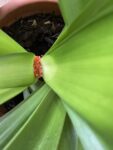
As the sun gets lower in the winter sky, the plants in our flat receive more light, and today they seem to be basking in it. The flat almost feels like a greenhouse with fronds and stems poking out of all corners. One of our bushy plants is even growing a new orange flower from between two leaves.
A finger of dust reaches from Tunis to the Balearic Sea, another from Misrata into the Mediterranean. During the satellite pass, a group of dog walkers notices me and my antenna, and while they stay on the far side of the field, I overhear the older woman in the group tell the others - 'yes yes... she does the weather'. Later, as I await the phone call of a doctor, the passing of the light feels slow and sluggish. I bury myself in email hoping to move it along.
2024-11-12 11:23:50
Sasha Engelmann
Hackney Downs, London, United Kingdom
United Kingdom
NOAA-18


It is a brilliantly sunny day in London and the sky is a deep, clear blue. A lonely cloud skirts the horizon to the east. As I set up for the satellite pass in the park, I think of a poem I have just tried to translate from Croatian/Serbian/Bosnian. It is called 'Pjesma žena' or 'woman's song' and it was written by Ana Matanja who is described as 'seljanka iz Ledenica' or 'villager from Ledenica'. The first lines go like this:
Crna noćca svud pritisla
Nigde bjela dana,
U kuhinju stoji žena
Ćvrste prikevana
To je bilo prošlog ljeta
A sad toga nije
The poem- from the archive of the Antifašistička Fronta Žena in Sarajevo - describes a scene in which the 'The black night fell / no daylight anywhere / A woman is standing in the kitchen / Tightly chained / That was last summer / And now it is no longer' (loosely translated by me). It goes on to make a call to arms and to the voices of women who form that AFŽ to protect their rights, including those of voting. The author - Matanja - is a villager, but 'Ledenica' literally translates as 'icicle' or 'icebox'. This, combined with the scene of the first lines, gives this poem of activism and mobilisation a sense of the dark, the cold, and the surreal.
As I attempt to catch the last fragments of signal from NOAA-18 over the southern horizon by standing on my tiptoes, two dog walkers approach and ask what I am doing. I explain, and we chat about my tape measure Yagi antenna briefly. As they are leaving, the man of the couple turns around and says:
'It's not who you know, it's what you know!'
2024-11-12 11:24:00
Prototype Automatic Ground Station 13
London , United Kingdom
United Kingdom
NOAA-18

I duck-taped my turnstile antenna to the kitchen window while I went outside to capture the same satellite pass with my tape measure Yagi-Uda. Collecting two images - one from an AGS and one from a mobile station - will help us identify if there are any unusual patterns in the images collected by the AGS.
2024-11-11 11:33:59
Sasha Engelmann
Hackney Downs, London, United Kingdom
United Kingdom
NOAA-18





A radio antenna arrives in the mail, from Florida. It comes in a rectangular box covered almost halfway down one end with rainbow 'first class' stamps, each individually advocating for breast cancer awareness. For the first two hours of the morning, Soph, Lizzie, Dan and I discuss ways to 'animate' material in the Public Archive spatially, textually and visually. Later I test three 'automatic ground stations' in various corners of my flat, and watch them boot-up to a new version (v1.1.4) of the programme they are running. Around 11:30 I catch a NOAA-18 pass from Hackney Downs, happy once again to be back in the park with my tape measure Yagi-Uda antenna. Though I do lots of university work as well, catching up on the various crises and urgent demands in my inbox, today is a day mostly 'weathered' by open-weather.
2024-11-10 12:19:21
Moose
Albany, Oregon, USA
USA
NOAA-18

I’m really struggling to get images. I have SLIGHTLY better luck with a dipole. I tried a random wire to see if that helped but not really. I’m working on building a QFH but it’s complicated. I’ll keep at it.
2024-11-09 11:22:19
Sasha Engelmann
Tagliamento Riverbank, Latisana , Italy
Italy
NOAA-18





I emerged from an overgrown path, full of fallen birch branches and reeds, onto a small sandy bluff above the bank of the Tagliamento. The river ran a cool green-blue that changed shades as clouds periodically covered the winter sun. It was chilly but not cold. The sound of farm equipment echoed over the opposite riverbank and a single engine plane passed by overhead. This weekend, the village of Latisana is celebrating the festival of San Martino. As T's mom tells us, traditionally this festival marked the time when farmers (il contadini) had sold their autumn harvests and had some spending money. They would celebrate as lavishly as they could. Most women were married around this time, when their families could afford to purchase cloth, lace and housewares for dowries.
I sat on a mushroom-speckled birch log and watched the slow moving water. A strikingly blue bird - perhaps an Eurasian Blue Tit - landed on a branch near the beach and darted away. A small flock of pigeons skidded to the water’s edge, dipped their beaks in the river for a split second, and took off again. They returned at least five times in the same configuration.
Yesterday, as T and I returned to Italy from Rijeka, last week seemed like a blur- a blur that felt very similar to the smog-fog of Sarajevo and its surrounding villages. At some distance to the Balkans, I can now visualise the histories, weathers, archives and monuments that I visited in the last week with a little more sharpness and clarity, like the circuitous and sandy curves of the Tagliamento.
2024-11-04 10:44:11
Sasha Engelmann
Roadside near Raðici, Bosnia and Herzegovina
Bosnia and Herzegovina
NOAA-18





Turning off a narrow street, we climb a dirt road into hills of farmland. The smell of manure permeates the car as we pass farm equipment and local men that wave kindly at us. I think I hear one of them call out but he doesn’t follow us. The road winds steeply onward and turns against the edge of recently turned fields. Next to two stacks of hay, sandwiched between two different fields, both steaming with manure and dust, we can see curved shapes of stone. At the base of the hill, a plaque in an odd mix of Latin and Cyrillic letters, lines running at odd angles, seems like a warning, but we climb the hill anyway. We are completely alone except for two men driving tractors. There, on the hilltop, is a kind of assembly, a collection of surreal stone figures around two metres tall, arranged at odd angles to each other, resting on stone plinths. Like serpents with eyes or faces in contorted shapes the figures peer wildly and hauntingly into the distance. I notice there are rotting cobs of corn scattered on the grass in places, and I wonder if there are any offerings to these creatures. The site is Nekropola žrtvama fašizma (Necropolis for the Victims of Fascism) or Spomenik na Smrika (Monument on Smrike) designed by Bogdan Bogdanović and it is both monument and underground crypt. This is the site of a great massacre of around 700 Serbian civilians and communists by Ustaše forces during WWII. Of the monument, Bogdanović apparently said: “It is a story of mythical creatures: the ambisbaena is a two-headed serpent that goes by day in one direction and by night in another. It symbolizes the end of time." To me, though, the figures are less serpent-like and more like currents or energies.
Leaving Smrike by car, it is not long before we enter a valley shrouded in haze, and it only increases in density as we approach Sarajevo. We notice white smoke plumes pouring out of peoples’ chimneys and large currents of either steam or particulate flooding from thermo electric plants. I remember reading how a combination of local fuel burning in winter and heavy industry is creating an air pollution crisis in this part of Bosnia. The five o’ clock prayer echoes from minarets as the air thickens, spectral timing as voices mingle and seem to repeat across the landscape, and materialise the feeling that the air is a carrier of many things in these valleys, of faith and ghosts and microscopic toxicity.
I think about the double headed serpent invoked by Bogdanović and I wonder about the ‘end of time’. T and I both peer hard at the sky, wondering if we are seeing the sickle moon or a strange small arc in the sky. When the air is so thick and unbreathable, do we see and feel time passing more slowly, finding our circadian rhythms numbed, or do we see and feel what lies underground?
2024-11-03 10:29:57
Steve Engelmann
Red Rock Conservation Area, Nevada, United State, Nevada
United State, Nevada
NOAA-18


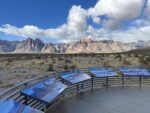


The Red Rock Conservation Area, just outside of Las Vegas, has been a work in progress for over 500 million years. It has seen oceans, sand dunes, the formation and dissolution of supercontinents, mass extinctions, indigenous peoples and more. Midway through the satellite capture sudden strong winds blew away my notes (later retrieved) and nearly capsized my laptop from a precarious railing (I should make better choices in the future). I was stabilizing my computer against the wind with one hand, tracking a satellite with the other and trying to convince some humanities academics from Chico State that the extraterrestrial I was following was benign - all in preparation for my audition at the 3-ring Circus. On the time log of Red Rock Canyon us humans will be nothing more than a minor footnote. What mark shall we leave on the geologic record?
2024-11-02 11:41:15
Steve Engelmann
Near Nelson ghost town, Nevada, US, Nevada
US, Nevada
NOAA-18


On my way to my nephew's wedding I pulled over near the Colorado River for a satellite capture. There has been controversy regarding who gets to use the Colorado River water. California has gotten the lion's share mostly, but the quantity has been declining for several decades and sometimes it doesn't reach Mexico. The best of plans get ruined when there isn't enough water. All the best wishes to Chris and Heather.
2024-11-01 12:01:36
Sasha Engelmann
Hackney Downs, London, United Kingdom
United Kingdom
NOAA-18



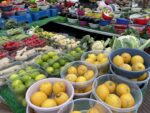

The reports of flash flooding in Valencia fill the front pages of newspapers in London. At lunchtime, the BBC shares the feed of a Spanish news network where a journalist breaks into tears while describing the losses of life, and damage to neighbourhoods. "The worst part..." he says in between attempts to catch his breath "is that our government knew that this was going to happen. They knew this was coming, and they did nothing". Hundreds of people are known to be dead, and some are still missing after days of search and rescue. "There is mud everywhere" an English reporter comments "on everything, on me". In London, the city is covered in low gray cloud, light barely penetrates through. On my way to mail one of the new open-weather automatic ground stations to northern Scotland, I pick up a copy of the Guardian and try to take a picture of its cover near a market on Mare Street in a way that also captures the lack of light, the gray mist, the way even important stories and images of loss seem slightly shadowed, out of focus.
2024-10-28 11:11:12
Sasha Engelmann
Between Biology and Physics departments, Royal Holloway University of London , United Kingdom
United Kingdom
NOAA-18




The Ginko trees make pools of yellow everywhere on campus, from the parking lots behind student dorms, to the small copses between departments. As the day is grey lit and damp, and Heathrow borne planes roar past overhead, invisible through the cloud, the pools of colour are welcome.
Later in the afternoon, Soph and I compare 'lighting gell' colours on a role of about 200 samples, ranging from fluorescent magenta to eggshell yellow. The colours come with short descriptions of their intensities and transparencies. Soph asks me to hold up the small rectangular transparent samples against a black and white photograph in a book on my desk, the better to compare how the colour enhances or mutes the detail in the image. It is difficult to make a choice of colour when only one of us can actually see the physical 'gell'. We end up choosing a green called 'half plus green', which is a more transparent version of a green called 'plus green'. Hovering between a bright green and a lemony mint, and around 80% transparent, the green film adds a beautiful intensity to grayscale text and imagery.
As I leave campus at 5:30 it is almost pitch black. Students in hooded sweaters walk past in small groups, dorm kitchens are brightly illuminated, and rows of liquor bottles balance precariously on window ledges. As I pass the parking lot into the deep dark of the woods at the bottom of campus, a Ginko leaf catches my attention- it is fanned out against the asphalt, an opaque yellow through which dark textures permeate.
2024-10-27 11:23:20
Sasha Engelmann
Hackney Downs, London, United Kingdom
United Kingdom
NOAA-18
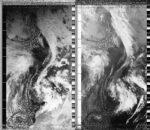

I awoke to a creeping feeling that the plants in my and T's flat were feeling very happy today. Leaves of monstera deliciosa, begonia maculata and weeping willow seemed unusually vibrant and springy from their stems. The lower angle of the sun at this point in the autumn means that the flat is flooded with rays. Throughout the morning, the sun climbed slowly over the three-story houses and the 'Open Doors' Baptist Church directly opposite our second floor windows. Later in the park, a local young family and a couple of mid-20s french women asked about my antenna, and I got to explain the 'magic' of radio twice. It was so bright I had to squint to see their faces. Above, an intersecting set of contrails looked like another, much larger Yagi-Uda, pointing south.
2024-10-27 11:25:00
Prototype Automatic Ground Station 11
London, United Kingdom
United Kingdom
NOAA-18

2024-10-26 12:36:11
Sasha Engelmann
Hackney Downs, London, United Kingdom
United Kingdom
NOAA-18
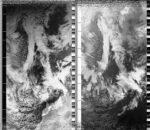




The fallen brown and golden leaves from plane trees are the brightest thing in the park today, as a grey and muted bank of cloud wraps London. I keep thinking of an interview I read with Stefan Rahmstorf, an oceanographer and climatologist who is well known for studying 'Amoc' or what is now known as 'Amoc breakdown'. The article in the Guardian explains: "Amoc, or the Atlantic meridional overturning circulation, is a system of ocean currents that brings heat into the northern Atlantic. Warm surface water from the tropics flows north and releases its heat in the subpolar Atlantic, south of Greenland and west of Britan and Ireland. Then it cools and sinks to a depth between 2,000m to 3,000 m before returning south as a cold current. Amoc is one of our planet's largest heat transport systems, moving the equivalent of 50 times the human energy use, and it has a particularly strong impact on the climate in Europe".
This description of great waters rising and sinking, and carrying heat across the planet, is captivating. Yet scientists like Rahmstorf suspect Amoc could be slowing down and even about to stop. Apparently "the most ominous sign is the cold blob over the northern Atlantic. The region is the only place in the world that has cooled in the past 20 years or so, while everywhere else on the planet has warmed - a sign of reduced heat transport into the region". There is also "excessive heating along the east coast of North America" which could be another sign of a slowing Amoc current that drifts closer to shore, and the "reduction of salt content of seawater" especially in the "blob region". A less salty 'blob' is harder to sink, and therefore harder to mix into the Amoc cycle. According to Rahmstorf, there is a 50/50 chance that Amoc stops in our current century. The collapse of Amoc will have global effects: the sea level of the Atlantic will rise by half a metre, the tropical rainfall belt will shift south, leading to floods in places not adapted to so much rain, and droughts elsewhere, and less CO2 would be taken up by the oceans, further driving global warming. Rahmstorf explains that all of these changes are poorly modelled by scientists and reported on by the IPCC because they are considered extreme, but at the same time they are probable, and on a timescale that humans alive today may witness.
As the satellite image I am capturing loads line by line, I peer into the darkness of the North Atlantic. I think about the word 'Amoc' and how it can also have connotations of 'going astray' or 'running wild'. I wonder whether I can see the 'cold blob' west of Ireland, and what one might see in that part of the ocean in decades to come.
2024-10-26 10:33:00
Soph Dyer
The Seaweed Institute
Helston, Cornwall, UK
UK
NOAA-18





A crisp and clear. Blue skies after yesterday's rain showers.
The Automatic Ground Station hosted by The Seaweed Institute at the visual arts organisation CAST in Helston is online! The station's weatherised v-dipole antenna will remain inside, and so reception limited, while we search for an accessible rooftop location.
The Seaweed Institute is run by Kerry Holbrook and Ruth Klückers on the south coast of Cornwall. The project connects people, seaweed and the intertidal space. Kerry and Ruth have spent the last five years working as seaweed harvesters on the Lizard Peninsula for the Cornish Seaweed Company.
Ray Dyer, Soph's sister and and co-director of Goonown Growers, was also present. The day began with a visit to the community food growing project, Loveland, in nearby Penryn. Thank you, Finn and Ray, for the tour of the new polytunnel and winter crops.
More updates in the coming weeks!
2024-10-24 11:24:20
Sasha Engelmann
Millfields Park, London , United Kingdom
United Kingdom
NOAA-18



A black cloaked, elderly woman steps slowly across the dense, wet grass of Millfields Park in East London. I worry about her feet getting wet, as mine have soaked through already. Though it is nearing 12 noon, the sun casts long shadows against the plane trees, shapes forming and rearranging on the ground.
2024-08-01 12:24:05
Steve Engelmann
Geneva, New York, United States
United States
NOAA-18


Cloudy with spots of sunlight breaking through. Potential for thunderstorms later in the day. Pleasant view across Seneca Lake.
2024-10-19 12:29:47
Sasha Engelmann
Downs Road, London, United Kingdom
United Kingdom
NOAA-18


The sunlight stretches through the shutters as I prepare a roast vegetable and fish lunch for T and her mom who are on their way back from the airport. I mix purple carrots, magenta-striped beets and lightly gold potatoes with extra virgin olive oil and a mix of spices and herbs - a medley of oregano, peppers, sage and other 'bilke' from my grandmother's village on the island Hvar in Croatia. When the vegetables have roasted, I place three marinated 'John Dory' fish on top of everthing and keep the oven hot for another twenty minutes. As I cut, season and roast, my turnstile antenna leans out the kitchen window. My hands are too oily to hold or point it, so the resulting image is just what the antenna receives from its resting position. At one point, though, I graze the handle with the dishwasher door, and the whole antenna slips out the window and dangles on its cable over the edge- luckily there is a small ledge immediately underneath, otherwise it might have fallen to the steps below!
2024-10-18 12:36:47
Sasha Engelmann
Hackney Downs, London, United Kingdom
United Kingdom
NOAA-18



The day started with low, misty clouds and rose to a golden, clear-skied afternoon. The last few days have been much warmer, even balmy. I noticed the transparency of fallen leaves, shining like small lanterns in the grass.
2024-10-15 13:15:53
Sasha Engelmann
Hackney Downs, London, United Kingdom
United Kingdom
NOAA-18


"You might find me with some tims on, rockin fascinators and clutches / marchin' through these streets my face on double decker buses / London's been all love, from the dancehall to the pub / when we play the O2, or back when subterranea was the club / real Fugees lovers / big up you know them, all my sisters and my brothers!!" spoke Lauryn Hill, reading a poem she had written in the twenty four hours before her performance at the O2 Arena last night. T and I were in seats so far away, on the opposite side of the stadium, that the sound seemed to bounce and refract in odd echoes. But that didn't matter- squeezed into tiny steep seats, all 20,000 people were dancing the whole night. I looked over my shoulder to see several grey-haired ladies singing all the words, while below our row, a group of teenagers managed to dance and livestream at the same time. This morning the energy stayed with me as I got ready for the day, another grey and cold one in London. The park was full of dogs, including an incredibly fast whippet named Ziggy. In several places, the gilled cap of a small mushroom pushed through the blades of damp, freshly mowed grass.
2024-10-14 11:49:15
Sasha Engelmann
Picnic table near Bourne Building, Royal Holloway University of London, United Kingdom
United Kingdom
NOAA-18



Arctic air, icey wind and a cold drizzle- a combination that makes any Monday morning feel especially gloomy. I take shelter under a small tree on a field between the biology and physics departments on the university campus. Part of me questions my decision to even try to catch a satelltie image, as the pass is only 50 degrees at maximum elevation to the west, and it's so freezing outside. I hum Lauryn Hill lyrics to myself as the satellite image loads, the pixels looking fractal like ice. "Possibly speak tongues / Beat drum, Abyssinian, street Baptist / Rap this in fine linen / From the beginning / My practice extending across the atlas / I begat this". The 'atlas' on my screen builds southward, tendrils of cloud extending in blurry motions, like something moving too fast before it can be captured, stilled. Every so often the tree is pushed by the wind and fat droplets shower down. The song ends: "Everything is everything / What is meant to be, will be / After winter, must come spring / Change, it comes eventually".
2024-10-12 11:14:00
Prototype Automatic Ground Station 10
London, UK
UK
NOAA-18


Today on BBC, Keir Starmer says he is remaining focused on the achievements of his new government, refusing to be distracted by 'side winds'. The phrase gives me pause, as it suggests that recent scandals around campaign donations or staff adjustments are akin to a tangential or minor wind. I think about the associations between wind and chaos, and the way the prime minister must be intent on distinguishing the focus of his government from any hint of entropy or agitation. Yet, if there are 'side winds', what is in the centre or the middle? Is it a storm, like a hurricane? Is it another wind, but one that is constant and measured? At the salon this morning, I was telling my hairdresser about my Mom's experience of Hurricane Milton, and the number of people who texted me about my Mom's safety, having seen Milton's imagery on the news, as well as the rumours and lies that have emerged in its wake, about the government creating and directing the hurricane, or refusing emergency relief. A woman who has just been styled for an upcoming hairdressers convention overhears me, and tells me she is from Idaho. "it's so fascinating what you were saying about everyone focusing on Milton" she says, "because where I'm from, in Idaho, we had the largest and most severe fire in US history earlier this year, and it did not make any headlines. No one was talking about it". I confessed I had not heard about the Idaho fires either, despite being an American, perhaps more attuned to US media than most people in the UK. She had to leave for her taxi before we could finish this conversation - which left me thinking again about 'side winds'.
2024-10-11 12:24:58
Sasha Engelmann
Hackney Downs, London,
NOAA-18



Of a day like today, Derek Jarman might write, "Crystalline sunlight, all the dark humours blown away by the wind" (1991, 235). As my partner opens the curtains in the morning, the blue of the sky pierces through the growing gaps in tree branches, blue against yellow and light brown. Before lunch I set the automatic ground station up in my flat, leaving the turnstile antenna resting against the open windowsill in the kitchen, and I head out to the park wtih my tape measure Yagi-Uda antenna. Later I enjoy comparing the images: not surprisingly, the automatic station has captured a swathe of the satellite pass to the south (as our kitchen window is south-facing) and lines of interference from the building pulse through it. Out in the park, I receive a good signal for most of the 86 degree pass, enjoying the 'crystalline' sun and the momentary break from the 'dark humours' of recent grey and rainy days.
2024-10-11 11:27:00
Prototype Automatic Ground Station 10
London, UK
UK
NOAA-18

Tropical Storm Leslie is brewing in the mid-Atlantic. By Monday, it may begin to reach the west coast of Spain, much like where the beautiful curving cyclone visible in today's image is swirling. For now, central Europe is dotted with a few clouds but is otherwise relatively clear. This image from an automatic ground station in my flat was captured by a turnstile antenna leaning on the windowsill, its metal dipoles shining in the noon sunlight.
2024-10-10 12:37:28
Sasha Engelmann
Hackney Downs, London, United Kingdom
United Kingdom
NOAA-18

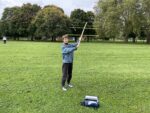


Representative Michele Rayner, Democratic Florida State representative calls in to Democracy Now. As the sun rises on a night that saw the landfall of Hurricane Milton, she describes the situation in St Petersburg, Florida, where there is no power, where there has been large amounts of flooding, 120 mhp winds and failures to infrastucture, including cranes collapsing into buildings. "I don't even know what my own home looks like right now" she says, "I can't get there". She describes gridlock on the highways and price gouging of hotels, flights and Airbnb accommodation in safer areas of the state. Her voice breaks up and the 'call dropping' sound happens several times. Amy asks her about the misinformation being propagated about the government withholding FEMA funding, or government officials taking peoples homes, and even that the US government is 'controlling the weather'. These are lies with life and death consequences, Amy comments. It is possible to hear Rayner say "people have lost so much... people need help" before the call drops again. Meanwhile videos of trees propelled sideways, people walking through knee deep water, and couches floating down sidewalks rolls on the screen.
2024-10-09 12:50:19
Sasha Engelmann
Hackney Downs, London, United Kingdom
United Kingdom
NOAA-18




"Even though it looks beautiful, this is very bad, this will cause a lot of damage" says a forecaster of Hurricane Milton in one of many livestreamed weather reports I consult throughout the day. He repeats this phrase several times, as if he has to convince himself that it is true. Yet he still calls Milton 'healthy' as he describes its current trajectory and form. I learn that Milton has an 'eye' or 'core' that is among the smallest ever recorded - only about 4 miles across - and this is one of the reasons its effects could be so devastating. Another forecaster uses the metaphor of an ice skater doing a spin and hugging their arms closer to their body, therefore spinning faster. A very different set of affects was offered by John Morales, a Puerto-Rico raised, Florida-based meteorologist and weather forecaster for 30+ years, who became emotional on live television yesterday while describing the fact that the pressure in Hurricane Milton had dropped 50 millibars in ten hours. Morales takes a deep, shaky breath and continues 'this is just horrific'. The video circulates widely on social media. As the hurricane moves north, its proximity to the jet stream will cause wind shear, and some of its 'arms' will 'tear to shreds' according to another newscaster. The storm will likely downgrade to a level 3 hurricane by the time it meets land. But this does not mean it will be weaker or cause less damage, as the weaker storm-system will become wider, potentially affecting much more of Florida. The jet stream will not remove enough 'arms' to reduce the storm's strength. The site of landfall remains uncertain, with some forecasts suggesting the beach of Tampa, where the consequences in terms of storm surge and infrastructure would be catastrophic, while others suggesting it may land further south. It is both fascinating and terrifying that less than twelve hours away from 'landing', the landing-site is still unknown. To follow Milton in all of these ways is thus to process an extreme set of affects, prognoses, visualisations and predictions - everything from figure skater metaphors to public displays of despair. I make a special trip to the park for a satellite pass that is quite far to the west of London, over the Atlantic. I try to stabilise my experience of Milton by 'seeing' some of the weather in its proximity, the cloud systems and extra-tropical cyclones that are somehow linked to Milton's energetic core.
2024-10-08 21:56:00
Prototype Automatic Ground Station 10
London, UK
UK
NOAA-18


I wake up to news of Hurricane Milton, one of the most rapidly intensifying storms ever measured in the Gulf of New Mexico. The category 5 storm is on a path to make landfall in Western Florida by Wednesday evening in EST. My Mom just moved to Florida two months ago - on time for hurricane season. She lives in Gainesville, just north of the projected path of Milton. On various late night phone calls over the last two weeks, she has showed me mountains of debris on her street, still there from Hurricane Helene, which also passed close, but not directly over Gainesville. Later in the day, I am in a team supervision with one of my PhD students, and my co-supervisor, a geomorphologist and quaternary scientist, shares that he was planning on searching NOAA's National Centre's for Environmental Information the other day (researching data for a third year undergraduate course practical) but the NCEI headquarters are in Asheville (Buncombe County) in North Carolina, one of the cities hardest hit by Hurricane Helene in the last few days of September, and they have had a continuous power outage since. My colleague reports that most of the region's electricity substations were flood damaged, as are all the bridges. Initial damage estimates are coming out in the order of $30-45 bn. Out of >100,000 houses in Buncombe County only around 900 have flood insurance. A former NOAA scientist has estimated 40 trillion gallons of water fell. And now Milton has arrived. Normally, the NCEI would offer 'real time' products for tracking weather like Milton, and it is a crucial hub in packaging various forms of satellite, sensor and other data for a wide group of people including farmers, businessmen, insurance companies and weather services around the US. But as of today, none of NCEI's real-time tracking and forecasting features are available - this is a big hole in networks of weather data sharing and communicating. As I hold my turnstile antenna out the window for a satellite pass close to 11pm this evening, I read the prognosis of a Florida based meteorologist, speaking of Milton: "This is nothing short of astronomical... This hurricane is nearing the mathematical limit of what Earth's atmosphere over this ocean water can produce."
2024-10-05 20:49:00
Prototype Automatic Ground Station 2
Vienna, Austria
Austria
NOAA-18


Giant Riesenbovist mushrooms, colourful Kurbis (pumpkins), and sweet Sturm made from fermenting grape must are the seasonal highlights this weekend's market. Sturm (also spelled Storm) is made from grapes picked in Austria and is named after its swirling, cloudy appearance. As well as the autumn storms that typically signal its arrival. This year Storm Boris flooded the Danube valley before the grape harvest was complete. Sturm is so volatile that bottles of it are sold without lids, so as to allow the gases to escape, and its alcohol content can vary from one to around ten percent. A fellow shopper asks the stall holder in earnest if there will be more Sturm next weekend. He responds it is likely, but stops short of offering a guarantee. By next weekend will the Sturm already be wine?
2024-10-05 12:01:49
Sasha Engelmann
Hackney Downs, London, United Kingdom
United Kingdom
NOAA-18




Today is October 5th, and a national protest for Palestine solidarity in London is underway, slowly moving from Russell Square to Downing Street. Many posters and banners point to the fact that the genocide in Palestine has been going on for one year. There are photographs of victims, messages to Netanyahu and Kier Starmer, and demands for reckoning. Chilling, however, are attempts in the wider media to memorialise this moment in ways that justify Israel's ongoing agression Gaza and Lebanon. Naomi Klein writes in the Guardian today: "What is the line between... memorialization and weaponization? What does it mean to perform collective grief when the collective is not universal, but rather tightly bound by ethnicity? And what does it mean to do so while Israel actively produces more grief on an unfathomable scale, detonating entire apartment blocks in Beirut, inventing new methods of remote-controlled maiming, and sending more than a million Lebanese people fleeing for their lives, even as its pummeling of Gaza continues unabated?" In light of this, the protest feels like more than a public demonstration- it is also a collective remembering, a coherence of what we remember.
2024-10-01 10:09:00
Prototype Automatic Ground Station 2
Vienna, Austria
Austria
NOAA-18

2024-10-03 12:30:08
Sasha Engelmann
Finsbury Square, London, United Kingdom
United Kingdom
NOAA-18


It is a relatively warm and mild day in London, and people pour out into the streets at lunchtime as I set up for the satellite pass. Yet I am thinking about the wind and it's relationship, provocation (?) or resonance with memory. Writing from the depths of February in Dungeness, Derek Jarman is listening to the wind, observing: "Fragments of memory eddy past and are lost in the dark". The wind is blowing "high in the tower blocks and steeples, down along the river, invading houses and mansions..." He continues: "But the wind does not stop for my thoughts. It whips across the flooded gravel pits drumming up waves on their waters that glint hard and metallic in the night, over the shingle, rustling the dead gorse and skeletal bugloss, running in rivulets through the parched grass - while I sit here in the dark holding a candle that throws my divided shadow across the room and gathers my thoughts to the flame like moths. I have not moved for many hours. Years, a lifetime, eddy past: one, two, three: into the early hours, the clock chimes. The wind is singing now".
2024-09-26 12:13:45
Sasha Engelmann
Downs Road, London, United Kingdom
United Kingdom
NOAA-18




A rolling family of storms passed over Hackney today - one body after the next. Alternating floods of sunlight and dark shadows passed through the flat, a changing scenography to breakfast, PhD student supervisions and emails. As it was pouring when I planned to head to the park with my Yagi, I instead tried fitting the antenna out of the bedroom window - more difficult than the compact V-dipole or tunstile antennas I've used inside before. It worked somewhat- both detecting the 'flood' of Meteor MN 2-3 before picking up NOAA-18 - though I think it also proved sensitive to lots of interference coming from flats and the building itself. By the end of the pass the sun was shining and an orb-like cloud receded into the distance.
2024-09-19 12:10:06
Melody Matin
Toronto (High Park), Canada
Canada
NOAA-18


2024-04-14 22:23:46
Soph Dyer
Augarten, Wien, Austria
Austria
NOAA-18




The wind has been squally, like my body. I woke tired. To reclaim my body, I swim one kilometre at the local pool. The full sensory experience of swimming focuses me on breath and rhythm, in ways other sport cannot. I feel my muscles and enjoy imagining the small exercised-induced testosterone boost. I feel back inside my body, home.
2024-06-25 12:36:45
Soph Dyer
Augarten, Wien, Vienna
Vienna
NOAA-18

I thought that I'd overheat but cloud came between me and the sun. It's hot, but not too hot, and the heat is dry. I feel more at peace in my body today. I know that I need to listen to it and respect its limits while it heals. The city building's are no longer cooler inside than out. I am trying to be productive, get work done, but really I want to be lying flat on my bed or dipping in the cool waters of the Danube. How are you Sasha?
2024-06-14 11:36:59
Soph Dyer, Nicola Locatelli
Stefy & C. Market Di Gallizia S. e Valent S. Snc, Moggio di Sotto, Italy
Italy
NOAA-18


I cannot focus on the meteorological weather as a delivery truck arrives to unload at the supermarket, which carefully crop out of shot. In the moment irritated the moment, but later accept my foolishness of my desire to document the mountains without people, cars and the heavy industry that lines the Fiume Fella river valley.
2024-06-16 22:39:42
Soph Dyer
At home, Wien, Austria
Austria
NOAA-18



The tat tat tat of toy machine gun drifts up from the otherwise empty street.
It is warm, comfortable.
When we got home from the holiday the tomato plants were stressed from thirst and had curled their leaves from prevent water loss.
After visiting such radically different climates – the dry heat of Istria and the wet cold of Firuli – and after overhearing my sister swap farming anecdotes of a too wet, too cold spring-summer with our host in the agriturismo, I contemplate how local climate is is and the importance of grounding theories of weather knowledge in specific sites.
2024-06-17 12:37:54
Soph Dyer
At home, Wien, Austria
Austria
NOAA-18


I rush out between Zooms calls to receive this satellite image on the balcony. The weather is warm dry, my mood is light, even joyful. I prop the my phone up on a potted Yuca, so as to get the tomato plants in the frame.
2024-06-18 12:23:59
Soph Dyer
Augarten, Wien, Austria
Austria
NOAA-18
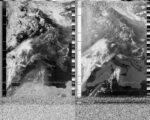


It's heating up. I enjoy how the city radiates heat from all directions, loosening my muscles. I embrace the floppy feeling. Yet Vienna is not yet built for sustained summer heat. Its surfaces are mostly sealed, there is too little vegetation, and it does not cool-off enough at night.
I am standing in the blazing midday with sun cream and sun glasses but no hat. I am still learning how to live in a country that is a little hotter, a little drier than the North of England where I grew up. A group of young school children pass, all wearing matching caps. I take note. Buy a cap. During the satellite pass I try turning on a feature of the software defined radio programme called Automatic Gain Control or AGC for short. Gain is a property of the antenna, which can be manipulated in the software … and this still confuses me. Usually, I use the programme's waterfall display to manually adjust the gain, however today, keen to improve my understanding of gain and the software, I experiment with turning the two AGC functions on and off, and then both on at the same time. The waterfall display turns from blue to yellow to red. To my ears, the signal to noise ratio sounds worse, however the resulting image looks surprisingly uniform. In my studio, M, shares with me a weather forecast from the ORF, Austria's national public broadcaster. She wants me to know that Saharan Dust is forecast for Friday.
2024-09-14 12:22:00
Lotti Jones
Leipzig, Germany
Germany
NOAA-18


It felt magical when a bright-green signal began to cascade down the waterfall display. I turned to Heide, my partner in our Leipzig open-weather workshop, who was next to me. We both made excited, eyebrow-raised faces. Were we imagining things? Was everything set up right? Our laptops responded with reassuring rhythmic tick-tocking and high pitched sounds that danced around our ears. I was surprised how the satellite continued talking with me, even as I played with different heights of the v-dipole antenna and the wild wind whirled around us. Ten minutes passed quickly. Soon I was angling southwards, feeling the radiant sun on my face and seeing other workshop people communing with NOAA-18 across the park while it faded into static.
2024-09-14 12:23:54
Ani
Leipzig, Germany
Germany
NOAA-18
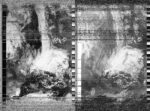

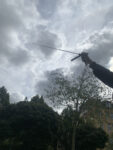
Here: Warm sun, grey skies. Just south of here: Extreme weather events all over Central Europe.
2024-09-14 12:22:00
Florian & Hanna
Leipzig (West), Germany
Germany
NOAA-18

A cloudy and windy day with some sun coming through the clouds. One of the first colder days after summer.
2024-09-14 12:22:00
Constanze Müller
Leipzig, Deutschland
Deutschland
NOAA-18
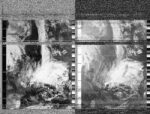
2024-09-10 12:24:00
Melody Matin
Toronto (High Park), Canada
Canada
NOAA-18


2024-09-10 12:14:14
Sasha Engelmann
Hackney Downs, London, United Kingdom
United Kingdom
NOAA-18




This morning a PhD student wrote in an email to me that the "Autumn very much feels like it's arrived!". I agree wholeheartedly- and wonder how many days have gone by without the golden sunlight I have come to expect from London in early September. Instead we are soaked in thin, grey and matte light emitted from low-hanging cloud. As I read onward about 'global darkening' and the 'State of the Climate' as assessed by close to 600 scientists in a report published last month, I read that this 'darkening' (or increased absorption of light by earth's surface) is, "linked to increased plant growth (which causes the absorption of radiation) in other parts of the world" and that "Plants directly responded to the warmth" (State of the Climate, 2023). To describe how plants responded to the warmth, the report continues: "early in the year [2023], the full bloom for the cherry trees in the Arashiyama district of Kyoto, Japan, occurred on the earliest date in the over-1200-year-long record" (State of the Climate, 2023). I find this so fascinating and devastating at the same time: that a 1200 year old cherry tree grove in Japan - the symbol and site of so many romantic films and stories - is a sentinel for plants' reactions to global warming and planetary 'darkening'. Seeing a line like this in a report written by hundreds of scientists also gives me pause. Who chose this example of the Japanese cherry tree grove (as opposed to, say, the effects of warming on forests in the Amazon, or the great forests of the boreal regions)? Was it purely based on record keeping (the cherry tree grove has been maintained for centuries) or is there another set of concerns around cultural landscapes, histories, symbols and aesthetics at play? Back at home, I peer through a sample of lime or 'linden' tree wood in the microscope, in awe of its graphic and formal beauty.
2024-09-09 12:36:26
Toronto (High Park), Canada
Canada
NOAA-18


2024-09-08 12:39:48
Sasha Engelmann
Hackney Downs, London,
NOAA-18




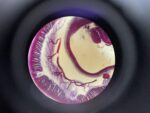
To the southeast, a gap in a towering panorama of clouds looks like a giant lens or a portal, magnifying rays of light. Two men walk by my ground station asking 'is there signal??' and then exclaiming 'you see the storm is picking up!'. Yet the wind does not rise further than a few sharp gusts and the clouds dance past. In my daily micro-weather observations, I look at 'Lumbricus' (an earthworm with its movement muscles), 'Anopheles male E' (a male mosquito) and a fragment of Selaginella sporophylls (also known as the spikemosses or clubmosses). I read that Selaginella are known as the 'fern allies' - I thought this was a nice phrase, if read non-scientifically. Some species of Selaginella are known as the 'resurrection plant' because they can survive complete dehydration, much like the lichens I wrote about yesterday. These moss-like plants roll up into brown balls, but rehydrate and expand when moistened. On this theme of 'resurrection' or 'time-traveling' or bending of temporal/ spatial ideas of life, I am reminded of a passage in the book Ceremony (1977) by Leslie Marmon Silko. It is a scene from the perspective of Tayo, a man of Laguna Indian and Mexican heritage who returns from the war in Vietnam. At dawn, Tayo is watching the life emerging around a small pool filled by a spring in the otherwise bone-dry mountains on the reservation. He observes: "When the shadows were gone, and the cliff rock began to get warm, the frogs came out from their sleeping places in small cracks and niches in the cliff above the pool. They were the colour of the moss near the spring, and their backs were spotted the colour of wet sand. They moved slowly into the sun, blinking their big eyes. He watched them dive into the pool, one by one, with a graceful quiet sound. They swam across the pool to the sunny edge and sat there looking at him, snapping at the tiny insects that swarmed in the shade and grass around the pool. He smiled. They were the rain's children. He had seen it happen many times after a rainstorm. In dried up ponds and in the dry arroyo sands, even as the rain was still falling, they came popping up through the ground, with wet sand still on their backs. Josiah said they could stay buried in the dry sand for many years, waiting for the rain to come again" (Silko, 1977: 87-88).
2024-09-08 09:58:00
Prototype Automatic Ground Station 2
Vienna, Austria
Austria
NOAA-18
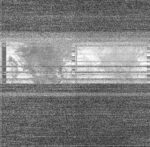
Tomorrow is Schulstartwoche (the week Austria's public schools reopen after the summer break). On Saturday, the man who I buy apples from at the market, tells me that he remembers the Schulstartwoche being cold and rainy. Today, it was so warm outside we closed the windows to keep the flat cool, only to give into the humidity and reopen them. Weather forecasts suggests that, inline with memories of Schulstartwoche, Monday will being heavy rains, causing the temperature to drop to a chilly 19C.
2024-09-07 12:51:46
Sasha Engelmann
Hackney Downs, London, United Kingdom
United Kingdom
NOAA-18
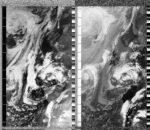




Hello lichen, who and when are you? This morning over breakfast I read a post by my friend Adriana Knouf about project Obxeno which is an automomous, solar-powered apparatus and camera watching lichens in a park around the clock. Though lichens are famously slow growers (some only grow around 1mm / year) one of Obxeno's timelapse videos seems to show a rapid grown of a lichen leaf or thallus, sort of blossoming out of the larger body. A curved piece of bark glowed bright yellow and green on the pavement on my way back from the farmers market. Later in Hackney Downs, I saw many smaller fragments of lichen in the grass, and I couldn't help borrowing two small pieces to put under the microscope at home. As I wandered through the labyrinths, caves, colours and depths of the lichens I brought home, I learned they were, like many lichens, collaborations between a green algae and a fungus. For the (at least) two lichens I was looking at, the lichen-forming fungi were Physciaceae and Teloschistaceae, both apparently relatively common and 'cosmopolitan' according to what I could find online. I read these samples in my living room were 'micro-lichen' and their shapes were foliose (leafy) and leprose (like a powder dusting). Lichens are believed to be some of the oldest organisms on earth (though how to define the limits of their identity as 'singular' organism challenges many of Science's principles). They can grow on almost any surface and they can even live inside solid rock, growing between the grains! The collaboration between the algae and the fungi is beneficial because the algae produce carbohydrates via photosynthesis that are used by the fungi, and the fungi provides a protective environment while also gathering moisture and nutrients. When fungi form partnerships with cyanobacteria in certain species of lichen, the cyanobacteria can even fix Nitrogen from the air. I learned that lichens were sent to the vaccum of space by the European Space Agency and exposed for fifteen days to the vacuum, with its widely fluctuating temperatures and cosmic radiation. After 15 days, the lichens were brought back to earth and were found to be unchanged in their ability to photosynthesize. If a lichen can live without water, and even without air; if it is never only 'one' but 'more than one'; if a lichen may be ancient or renewed each day, then perhaps, from the perspective of a lichen, energy, space and time are things that can be bent, molded, malleable. People like Adriana have said this to me before, but I am finally understanding lichens as both space and time-travellers...
2024-09-07 10:11:00
Prototype Automatic Ground Station 2
Vienna, Austria
Austria
NOAA-18
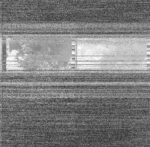


V and I, adamant that it was the last day of summer, caught the train in the opposite direction from home to Hallstattsee. The lake was blissful. Its steep sides and deep waters have kept it cool, even after the hottest of summers. This we learned this from an older couple and their two dogs, who joined us on the narrow pebble beach. I took my first dip since the operation. The cold water held me, drawing me down. Despite my caution and an unfamiliar tugging in my abdomen, I dipped under again and again. The feeling was one of release. I extended my body, unfolding and stretching it in ways that I have not since the beginning of August. The lake’s water was cloudy and its stoney bottom, quickly dropped away. With my film camera, I photographed V floating in a starfish position, her peach colour swim suit beautifully offset by the dark greens of the lake and mountain side. In that moment, I think that we both felt a supreme confidence and peace in our bodies.
2024-09-04 23:28:08
Melody Matin
Toronto, Canada
Canada
NOAA-18

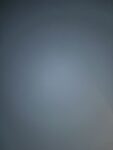
2024-09-04 12:03:01
Melody Matin
Toronto (High Park), Canada
Canada
NOAA-18


2024-09-03 20:50:00
Prototype Automatic Ground Station 2
Vienna, Austria
Austria
NOAA-18

Sunny, but not too hot. A manageable heat to get work done in.
2024-09-02 12:15:45
Sasha Engelmann
Hackney Downs, London, United Kingdom
United Kingdom
NOAA-18





A fine drizzle was carpeting the neighbourhood as I went out with my tape measure Yagi antenna today. I wasn't expecting the rain, so I found a still densely foliated Plane tree to give cover. Later in the day, en route to South London, the rain had started again. I had checked and rechecked the weather report before getting on my bike, and all that was predicted was a lot of cloud. I remembered what my scientist colleague said earlier this summer about the increasing moisture to be expected in a climate-changed Northern Europe based on a wobbling jet stream. Despite the moisture-laden air, the rest of the day was textured with immense relief, new knowledge, and support from my partner T. Two cats offered their emotional energies too.
2024-07-25 22:53:01
Soph Dyer
Lacknergasse, Wien
Wien
NOAA-18


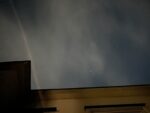
Cool temperature. Still night. There is a thin film of cloud.
Earlier, inn the hospital, I read a draft of Wind’s Animacies by Sasha. The article sweeps me up, taking me far from the fluorescent lighting and airless weather of the waiting room. I turn over her question, "what does the wind remember?" I am moved by it, perhaps because I am grappling with how to reorganise or cohere a messy medical history of ill health with the new knowledge that comes with a diagnosis.
I find myself caught between wanting to forget the lost days in bed with a pillow tucked under my abdomen, or the sleepless nights and listless days that followed. Could an earlier diagnosis have changed the course of my access to treatment? This is is both too painful and utterly pointless to think about.
I want to reorganise my memories into a tidy narrative of endometriosis, cysts and fibroids, rather than the current cluster of unexplained, possibly unrelated symptoms that moved around my body to the extent that I stopped trusting myself as reliable narrator.
I am thinking with Sasha's words: is pain is similar to wind? Neither are immaterial or material. Is pain not energetic, “slippery”, “leaky”?
Thinking about wind’s memory is an analytic move away from asking “where does the wind come from?” (n.d. Engelmmann) A question that forces an artificial cut into time to arrive at a single origin point. I exercise changing the familiar questions “Where does the pain originate?” or “When did the pain begin?" to “What does my body remember?” This new question requires me to relearn to trust it my body and its complaints. To piece it back together.
In a wholly different context, that of the 2016 US presidential election, American essayist and anarchist Rebecca Solnit writes “when the subject is grim, I think of the act of naming as diagnosis.” Diagnosis does not equal a cure, but it is an act of recognition that has the potential to reorganise and make sense of memories.
2024-07-13 22:42:00
Soph Dyer
Duboka, Vis Island, Croatia
Croatia
NOAA-18


2024-08-27 11:52:02
Sasha Engelmann
Hackney Downs, London, United Kingdom
United Kingdom
NOAA-18



Another windy day, with gusts coming from both the south and west across Hackney Downs. Tree branches and pieces of bark have been peeled off trees and lie on the pavement or grass. Once again my tape measure Yagi was pushed and pulled around by the air, and once again I feared the delicate bits of soldering would come undone. When the dipoles bent down at odd angles, lines of noise permeated the audio recording. I realised today that I had never fully explored the fact that antennas could be malleable- able to move and bend with the wind. We associate antennas with very tall steel towers or elaborate metal sculptures that are nevertheless solid and static- but what about an antenna made of flexible material? I've been aware of 'wearable antennas' via the work of artists like Afroditi Psarra or Audrey Briot, and I have seen experiments in metal weaving, but my tape measure Yagi has raised other questions about working with semi-flexible, yet conductive materials that change rather than holding shape when exposed to air.
2024-08-26 12:02:33
Sasha Engelmann
Hackney Downs, London, United Kingdom
United Kingdom
NOAA-18



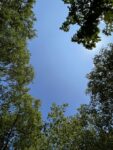
On my way back from the park with my tape measure Yagi, I saw the well-known local character who wears a tracksuit and stands on benches practicing martial arts, every day rain or shine. I smiled and waved hello, and he immediately exclaimed 'there's the aerial!' and for a moment, I think, mis-gendered me, as he called out something like 'oh- a girl!'. He jumped down from his bench and started asking questions- had he seen me before in the park? was I from America? how do I like Hackney? I learned his name is 'Joe' but everyone calls him 'Shaolin Joe' because he practices the Shaolin Arts (martial arts) in public around Hackney and Clapton. I tried to explain why I use my Yagi antenna to capture images from satellites, and he compared my daily satellite passes to the Shaolin Arts... 'meditating with your satellites'. We shook hands and he called out after me 'Have a great day!!' and something like 'good American!'
2024-08-25 12:22:03
Melody Matin
Toronto (High Park), Canada
Canada
NOAA-18


The Canadian National Exhibition is on this weekend, an end of summer festival with rides, music, and an international air show including the Royal Air Forces Red Arrows, Canadian Forces Snowbirds and the United States Air Forces F-22 Raptor. I think some of the planes were practicing as I was capturing this pass, buzzing through the sky, flying low and close to the ground.
Otherwise, a very typical summer day in Toronto, pretty warm, humid and little cloud coverage.
2024-08-24 12:35:33
Melody Matin
Toronto (Sunnybrook Park), Canada
Canada
NOAA-18



2024-08-23 12:47:53
Melody Matin
Toronto (High Park), Canada
Canada
NOAA-18

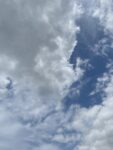
I was rushing to finish a paragraph of my dissertation so I could hop on my bike and get to my usual spot on time for the pass. I'm starting to get familiar with the speed in which the satellites move through the sky. Now when I'm pointing the antenna at the sky I hear no static, just clear ticks and beeps. The same curious stranger was at the park today - and wished me luck on my capture!
2024-08-22 13:01:47
Melody Matin
Toronto (High Park), Canada
Canada
NOAA-18


It's starting to warm up again after a few chilly days in Toronto. I biked to my usual spot in High Park and had a few extra minutes after setting up to read. As I was packing up, a stranger came up to me to ask what I was doing - this happens every time. They are fascinated after I explain the process and I've started sharing the website with everyone who is curious about it.
2024-08-21 12:28:55
Sasha Engelmann
Quercia delle Checche near Pienza, Italy
Italy
NOAA-18




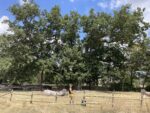
The quercia delle Checche, an approximately 300 year old oak tree and Italy’s first ‘green monument’, is full of dense, perfectly shaped leaves and is apparently thriving despite the dry summer. Planted in the 18th century, the oak was one of the few to survive the rapid landscape changes of the Tuscan countryside as the oak woodland was deforested in favour of agriculture. Rumour has it that Napoleon’s troops stopped to rest in its shade. Numerous local weddings, trysts, rituals and gatherings have occurred under and around its branches. Two large horizontal branches have fallen and now lie like giant bones in the yellow grass. Up close, the dry wood of the branches has whorls and shapes that remind me of Kármán vortex streets caused by wind flowing around islands or mountains. I wonder what events caused the wood to ‘flow’ in this way- what memories does it hold?
2024-08-17 23:02:39
Sasha Engelmann
Jadrolinja Ferry in the Adriatic Sea between Split and Ancona, Croatia
Croatia
NOAA-18





The almost-full moon hung ponderously over the southern horizon of the Adriatic as we made our way slowly across it in an overnight ferry from Split to Ancona (Italy). T and I had hustled on with our car and luggage around 21:30 and by 23:00 we were in the open sea. Languages swum between Croatian, Italian and French as we qued for dinner and wandered around. People had hung hammocks up between stairwells and railings. Others had blown up mattresses on the landings between stairwells, and others were just lying on a thin layer of blanket, exposed to the wind and weather of the sea. As I set up for a 23:01 satellite pass, the air was so humid and sticky- touching the metal railing of the ferry felt like touching liquorice. The darkness of the sea at night felt ominous and limitless.
2024-07-14 23:32:15
Soph Dyer
Duboka, Croatia, Croatia
Croatia
NOAA-18



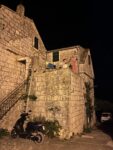

There are even more Mauve Singers in the bay, too many to swim without being vigilant. N and I collect white plastic rubbed smooth by the Mediterranean and bring it back up to the village in bags. Our host is distressed and moved to apologise by the sight of so much plastic. He is an older man possibly no longer unable to make the steep 25 minute hike down to the water. He mentions the heat and then "the Albanians". N is confused and thinks that Albanian tourists have been littering in the bay, as opposed to racialised ocean currents carrying the trash from the Albanian coastline. His misunderstanding lightens my mood.
2024-07-11 22:25:02
Soph Dyer
Duboka, Vis, Croatia
Croatia
NOAA-18




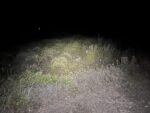
I am getting better at staying cool headed in the heat. Blue skies, a few clouds. A gentle wind brought some relief. Today was hotter than yesterday. Our host said that he installed the air conditioning unit the day we arrived. He complained many times about the heat. It was a reassuring to know, as a Northener, that I was not the only on struggling. Yet it was disconcerting to know that the heat was new. It has not always been this way. N and I waited until the relative cool of the night to receive a satellite pass. We walked down to a track leading away from the village. Using a head torch, I checked for snakes. To my relief, I found a grass hopper laying eggs and a stray cat. Towards the end of the pass, curious to know what other animals might be near, I looked around for more eyeshine. My survey revealed many small green dots. I approached, expecting to find small animals, perhaps lizards warming themselves on the stone? Instead, behind each green dot was a Radiated Wolf Spider. N and I were being watched by tens of spiders. I dislike spiders so quickly packed-up and retreated to the house, eyeing the green dots lining the track.
2024-08-18 12:11:43
Melody Matin
Toronto (High Park) , Canada
Canada
NOAA-18



sunny, hot, humid. second capture of the day!
2024-08-18 12:11:43
Melody Matin
Toronto (High Park) , Canada
Canada
NOAA-18



sunny, hot, humid. second capture of the day!
2024-08-17 12:26:02
Melody Matin
Toronto (Don Valley Brick Works Park Lookout), Canada
Canada
NOAA-18


Went to a lookout today, the same spot I saw the eclipse a few months ago. Thought I could get a clearer image, I'm starting to think I am getting a bit disoriented with my directions, I'll have to think of some solutions. Big grey clouds were rolling as I was setting up, and an hour after the satellite passed, there was a thunder and lightning storm!
2024-08-16 12:36:12
Melody Matin
Toronto (Earlscourt Park), Canada
Canada
NOAA-18



I biked up a few blocks from my home, up a steep hill to a park I had never been to before. Lot's of kids playing, and runners around the park. Grey skies, very humid!
2024-08-15 12:48:52
Melody Matin
Toronto (Sorauren Park), Canada
Canada
NOAA-18

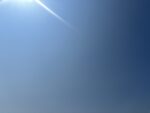
2024-06-07 13:41:29
Sasha Engelmann
Hackney Downs, London,
NOAA-18


The sun was rising when I rode my bike through Hackney Downs this morning, coming back home from a club in Dalston. My limbs felt both heavy and light in the very pleasing way that limbs feel when you have been dancing for hours. People were already in the park, or maybe they had been there the whole night. I could see the faint spark of a cigarette in a huddle of bodies between the hedges. I thought about getting my radio antenna and catching a pass at dawn, but sleep was too tempting. Later, at almost 2pm, I re-emerged from my flat and went back to the park. In contrast to the soft, orange-pink glow of the early morning, the early afternoon was warm, hot and dry. As I started the pass, a man in a group of men that normally always stand around a bench at the north-east corner of the park, around thirty-forty metres away from me, yelled "Is that for free internet?!". I could only think to yell back, "No!". As I couldn't explain at such distance, I used my free arm to point to the northern horizon and traced an arc through the sky from North to South. That seemed to help. He yelled again "What are you tracking!!?" and I replied "A satellite!! An image!!". As no members of the group looked like they were going to come any nearer, I walked over to them after the pass was done, and showed them the live-decoded image. They huddled around my computer. I wondered what they might say about the weather, given that the five to six of them are always here at this bench, all day, every day, rain or shine. Instead, they asked me what the weather was going to be like. I said I was not a meteorologist, but the image was showing different patterns of clouds over the Atlantic, maybe coming to the UK. They seemed to like this. One of them said 'nice one mate' and shook my hand in the way men do when they put out their arms, bent at the elbow, with the hand close to the chest. When you close hands you end up getting pulled together in a show of comraderie.
2024-06-06 12:11:30
Sasha Engelmann
Hackney Downs, London, United Kingdom
United Kingdom
NOAA-18



Over these last couple weeks, I sometimes observe the darkness of the landforms in the satellite images, especially in the Infrared Channel, usually on the right side. Though I have not studied infrared radiation scientifically, I know that, in the Infrared channel, the darker the pixels suggest that something is 'warmer' while the lighter pixels suggest 'cooler'. In today's image, even the northernmost part of Norway appears to be relatively dark, emanating and radiating heat against the neutral gray of the Barents Sea. The coastline and interior of the African continent also stands out in the InfraRed channel. Yesterday, a colleague who works in Cambodia studying the lives and labour of brick kiln workers told me about how the workers measure time and seasons by how fast it takes a large ball of clay to dry outside. In some seasons it takes five days, while in other seasons it only takes five hours. Their work rhythms are intimately related to the drying of the clay, and so also the heat and movement of air. In a meeting this morning I was reminded of Michael Taussig's writing on heat. He says, "Heat is a force like color, that sets aside the understanding in place of something less conscious and more overflowing, radiance instead of line, immanence instead of the famous bird's eye view" (Taussig, 2004: 31). As I pored over the 'satellite-eye's view' of today, I wondered about where heat as a 'force' shows up. Does it only show up in the clay ball that tells about heat by how fast it dries? Or does the force somehow also 'show up' in the satellite image, in the darkness and contrast of pixels? Thinking of the ball of clay makes me feel more connected to the idea of heat as 'force', but I keep wondering whether there are ways to use colour ('something less conscious and more overflowing') to demonstrate or express more of heat in the satellite image. In contrast to 'heat maps' where red and dark purple often signify the intensity of heat, how else could colour map heat, how else might it suggest 'immanence' or 'radiance' instead of line?
2024-06-03 12:49:14
Sasha Engelmann
Hackney Downs, London, United Kingdom
United Kingdom
NOAA-18



This Monday was full of grey light and low hanging cloud, and after a morning of open-weather meetings, I found myself sitting in the middle of Hackney Downs, happy to be listening to the sound of a satellite but craving some colour. On my way back from the park, a bright burst of lichen caught my eye. I identified the species (or 'collaboration' between species) as within the family of Teloschistaceae which really refers to a large group of mostly lichen-forming fungi that have a 'cosmopolitan distribution' (meaning that they can be found in most places around the world, much like the pigeon and the orca). Most members of Teloschistaceae are lichens that either live on rock or on bark, but about 40 species are 'lichenicolous' – meaning they are non-lichenised fungi that live on other lichens. Apparently, in Spain, a member of this family of lichen-forming fungi has been included in wine-based decoctions for menstrual issues, and infused in water as a remedy for kidney and tooth ailments. Later in the day, I bought raspberries and blueberries entirely because of how they glowed bright-red and blue-purple in the fruit section of the local market.
2024-08-08 23:17:13
Sasha Engelmann
Lignano Sabbiadoro , Italy
Italy
NOAA-18



Acqua! ventisei. Sabbia! trentasette. (Water! twenty six. Sand! thirty seven). A voice called out the temperature of sea and land on a loudspeaker at the beach of Lignano Sabbiadoro on the Italian coast. I placed my towel on the sand next to a lifeguard station and felt the heat. People were running from their umbrellas to the sea (sometimes carrying small children) as the sand burned underfoot. I debated trying a satellite pass, decided not to in this unlikely location, and finally thought I’d try. Something about being in a swimsuit with the ground station immediately felt weird! My radio antenna got the attention of many, even at a distance - I caught several men with beer-bellies and leathery skin staring at me. Sadly I didn’t catch any signal - I had a big view of the sky, and checked and re-checked my settings, but it was difficult to see the tiny numbers in the android radio software in the sunlight. I decided to try again later, and I ended up catching a pass late at night from the balcony of T’s mom’s apartment. The shadowy form of the boot of Italy appeared in the infrared channel, lighter than the water (and therefore cooler). This puzzled me until I realised that land loses heat faster than water; the sea ‘holds’ it.
2024-06-02 13:03:32
Sasha Engelmann
Hackney Downs, London, United Kingdom
United Kingdom
NOAA-18


My arms and legs are scraped from nettles and bracken after an afternoon at Richmond Park, but I feel so happy to have these reminders of a day among the oaks, elms and white-tailed deer. After I captured a hurried satellite image from the middle of Hackney Downs, my partner and I took a long overground train from Dalson Kingsland to Richmond station, and once in the park, we followed several trails away from the central lake and 'acid grassland' where most people congregate. The park was golden and shimmering in sunlight, and the greenness of everything was 'overwhelming' as my partner put it. Lying on a log in the sun, I opened my eyes to see a hawk making circles overhead, barefly moving a wing-feather. I heard a sound like a sneeze, and looked to the right, spotting a doe with two fawns. Lime green parrots talked excitedly in the branches and zipped from gnarly twig to tree trunk. A spider with a large bulbous abdomen scrambled over my leg.
2024-06-01 11:34:03
Sasha Engelmann
Hackney Downs, London, United Kingdom
United Kingdom
NOAA-18




As I begin the satellite pass, a young group of friends pass by, and one asks whether I am responsible for the pile of soccer balls a few metres away. This is a little funny, as there is an active young boy's soccer game on the field where we are standing, and I doubt I look much like a soccer player with my radio antenna. A young woman in the group yells to ask what I am doing, and after my one-sentence answer, they turn away and proceed to set up their picnic toward the south edge of the field. As I am packing up ten minutes later, though, the woman runs over and asks to see the image. She is joined by another friend. As I show them the enhancements of the image data, she remarks on the jagged coastline of the northern part of Norway, and the western edge of Scotland, wondering aloud whether the coasts are so complex because they receive the wind of the North Atlantic, whereas the east coasts are 'smoother' because they are more sheltered. As she speaks I admire her sparkly turqoise eyeliner and try not to stare. They are especially impressed by the colour infrared image of the highest cloud tops. They joke about how many times I must have explained this to other people in the park, and it's true, I say, I've met more people in the neighbourhood by waving an antenna at the sky than I might have by going to town hall. Half an hour later, I actually do join a Palestine march to Hackney Town Hall, following the echoes of protest chants through grey skies and an unusually cold wind.
2024-05-30 12:03:48
Sasha Engelmann
East Park, Southampton, United Kingdom
United Kingdom
NOAA-18



Wind is the subject of a half-day symposium at John Hansard Gallery in Southampton where I am presenting on behalf of open-weather. I am looking forward to the constellation of academics, scholar-artists, and members of the public who are going to share new work and join the conversation. A scientist called Richard Cornes from the National Oceanography Centre talks about histories of weather observation gleaned from the diaries of French and English scientists who kept careful records of temperature and pressure. An artist named Abelardo Gil-Fournier who has just co-written a book with Jussi Parrika presents his sculptures and experiments in the cinematography of wind. Scholars Maximilian Hepach and Bergit Schneider examine the diaries of John Muir, the drawings of Da Vinci and the paintings of Van Gogh to 'read one elemental media ecology against another', for example reading air through a description of ice in Muir's semi-spiritual field notes. JR Carpenter and Jules Rawlinson perform a sonic, poetry and visual piece called An Island of Sound featuring fossils, nautical charts, wind roses, walruses and other characters. We all stay out late at a local pub chatting and catching up, and I am filled with the nourishment of ideas, new reading recommendations, academic gossip, the sharing of intellectual projects and agendas, and generally feeling like we are all participating in an intellectual project around air, weather and wind. As I am rarely in a room with so many fellow air and wind scholars there is something momentous about this, and I am reminded of the ways that scholars used to travel for days, over hundreds of miles on land, to attend conferences together, to feel like they were taking part in a common project. I am by no means naive to the eliteness and exclusivity of this history, but I remind myself that it is also OK for today to be about the joy of shared and generous participation in overlapping academic work.
2024-05-29 12:11:41
Sasha Engelmann
Hackney Downs, London, United Kingdom
United Kingdom
NOAA-18



I have been thinking a lot about how scholars, artists and others investigating air try to 'substantiate' it in their work. In a chapter on 'Air's substantiations', anthropologist Tim Choy makes an analogy between a scholar/artist/practitioner studying air, and a PM sensor on the roof of a building. He writes, "enclosed machines on rooftops and streets ingest millions of mouthfuls of wind a day, calming it so that the particles it holds can be collected to count, to accumulate enough of the particular for it to register as weight, as substance worth talking about" (2011: 146). Choy continues, "miming this method, I collect the details in a diffuse set of contexts" to "turn the diffuse into something substantive" (2011: 146). This comes after a discussion of the ways in which air invites us to trouble binaries of the particular and the universal in cultural theory, both of which end up reifying solidity and 'ground'. 'Miming' the PM sensor, though, aren't we, as scholars and other practitioners, largely falling into the trap of 'particularising' air, counting particles so that our analyses add up to something worthy of empirical and conceptual attention? As I read across social science and humanities writing on air, I notice how often the 'particle' comes up, even when people are exploring the meso-scales of topics like breath and policy brutality. Is there something also about the outpouring of scholarly and artistic work on the citizen science of air quality that makes us feel we can and should be counting particles, even when that's not what we are doing? What if, in efforts to 'substantiate' air, we paid more attention to the fullness of air's aesthetics, its movements, gradients, vacuums, and porosities... the emptiness in between loosely tethered molecules? Rather than 'mouthfuls' of particles we might be substantiating something closer to texture, impressions, traces.
2024-06-10 12:25:53
Ray Dyer and Soph Dyer
Mošćenička Draga, Croatia
Croatia
NOAA-18


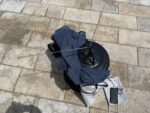

I am on holiday with my sister, Ray, and her partner Ben. When we check into our Airbnb the host, a women a little younger than our mother, apologies for our "bad luck" with the wet weather. We engage in pleasantries about how unpredictable the summer has been, and wet and warm the spring was. "We are not looking after Mother Earth", our host concludes. Her tone is serious. I think I detect fear, but cannot be sure. We say that "we do not mind", that "we will swim anyway", because "we are from the North".
2024-08-03 22:39:31
Soph Dyer
Lacknergasse, Wien, Austria
Austria
NOAA-18

Still, mild, mottled clouds. Clear air. By contrast, there is so much to write about the turbulent, changeable weather of last week. And, yet, I know some weather is ineffable or Unwetter. Together, Sasha, we altered each other. My hormones were so low (by chance) and I was grieving how my body will be changed by the coming operation. You tried to lower the waves of adrenaline and cortisol with empathy, touch and grounding words. It worked, to a point. We were what M Murphy, co-director of the Environmental Data Justice Lab, calls "endocrine participating" (Murphy 2024). Yet the estrogen and progesterone in my body refused to join in, staying stubbornly low, disturbing my sleep, making my recall foggy. You felt so steady and strong, but I know that you too were tired and running on empty. Our boundaries, dangerously porous. Yet, in clear breach of feminist protocol, we worked. We worked on this project: carefully dismantling and debugging 3D-printed prototypes, testing digital interfaces, and making logistical plans for when and how to send hardware to far away locations. We swam and drank too many Weißer Spritzers. You tried to order a doppelter Espresso but instead made-up the word "dooblé". We laughed, mixing caffeine with dopamine, oxytocin and endorphins. We laughed too when, during a beautifully intense dance performance, we saw ourselves in the two dancers' energetic, full-bodied exchange. On the way back from lunch, I quite literally fell over your feet, bloodied my knees, and sat wordlessly gulping for air on the pavement. The activities list I drew-up before your arrival is now half crossed-out. Hungry to share, you and I pushed each other, as always. Next time, I hope for fairer weather between us.
2024-08-02 22:55:42
Sasha Engelmann
Kottbusser damm, Berlin , Germany
Germany
NOAA-18



Berlin, Friday night, August. I peeked off the ledge of my friend Omid's fourth floor apartment on the Kottbusser damm, and set up my ground station looking East. The traffic 'rush' sounds below mingled with laughs, drunken conversation and sometimes yells or screams. I noticed how the antenna reacted to the side of the building, the almost-midnight radio environment, and to being hand-held - it preferred the balcony ledge. I had travelled all day by train from Vienna after an intense week of work with Soph, a week in which we ate market-fresh pickles, swam in the Danube, worked like crazy on open-weather, and sat together with pangs of uncertainty about the future, both immediate and further afield. From my midnight perch, I sent Soph a hug and some calm energies through the body-temperature air.
2024-07-23 12:28:13
Sasha Engelmann
Tide Square, North Greenwich , United Kingdom
United Kingdom
NOAA-18





We woke up to dark skies again, but the air remained warm, humid. On my way to Southwark Bridge for a morning appointment it began to drizzle-rain and city-workers clutched their goose-bumped arms. Hours later I unfurled my antenna on the 'Tide River Walk' in North Greenwich, and almost immediately began to hear and receive an air traffic control downlink on a frequency overlapping with that of NOAA-18. A young man agreed to take some photos, and then went back to leaning on the railing, meditating on the water. Charli XCX's 'Brat' bounces through my headphones for most of the afternoon as I ride the overground and express mail some open-weather kit to Berlin. "When you're in the party b-b-bumpin' that beat / 666 with a princess streak..."
2024-07-19 11:37:22
Sasha Engelmann
Hackney Downs, London, United Kingdom
United Kingdom
NOAA-18



It was too hot to be in the sun so I perched on the edge of a pool of shade made by a plane tree. A man in a track suit who is a kind of local figure in the neighbourhood - often seen balancing on post boxes, tall gates and bus benches doing dance moves that resemble Tai Chi, always in a full track suit - walked by, waved and said 'So I expect you're listening to the Gods??' 'Yes sort of!' I replied, hoping he would understand I was joking. 'Nice one!' he replied, and then followed with "I like your glasses!!!'. 'Thanks!' I said, and remembered how I had gotten my sunglasses at the 'Accessorize' shop in Kings Cross station while waiting for a train a few summers ago. Another man in a neat vest, jeans and glasses approached me a few minutes later and quietly asked what I was tracking. After I replied, he exclaimed 'And I thought I had an interesting job!!' 'What's your job?' I asked. He said 'Oh I park cars... BMWs... train driver too'. He went on his way.
2024-07-19 12:35:34
Soph Dyer
Augarten, Austria
Austria
NOAA-18



Blue sky, hot. The city is heating up again. Yet the park, usually busy on such days, is quiet. Presumably many residents are already on holiday. Summer holidays are taken seriously in Vienna. Its shops and restaurants can shut completely, sometimes for more than a month, only reopening in September. This ritual of city life and work grinding to a halt in high summer as people take in long holidays, is a side of Austrian culture that is, perhaps, less well know and more associated with our hotter neighbour, Italy. I hide the ground station's hardware under the shade of a plant, and limit my time in the sun by leaving as soon as the satellite pass is over. I am tried and a little nauseous today, but in the openness of the park these feelings are less.
2024-07-18 11:51:41
Sasha Engelmann
Hackney Downs, London, United Kingdom
United Kingdom
NOAA-18
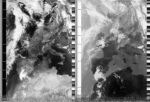

I've spent all day writing, and my thoughts are swirling around ideas of memory, wind, history, and the way wind makes 'traces' and 'marks' in satellite imagery. The article I'm editing feels to have its own weather too, one of 'rabid gales', blue vanishings, wind-blown dust, 'pigments and mist' and vast differentials in temperature and pressure, pulling air into all sorts of space and corners.
2024-07-16 12:15:09
Sasha Engelmann
Hackney Downs, London, United Kingdom
United Kingdom
NOAA-18


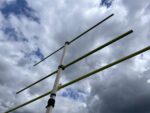
It poured last night, the kind of rain that quickly overwhelmed London's drainage system and caused pond-sized puddles on street corners and walkways. Somewhat fittingly, T and I were drenched in it while cycling home from a 'psychoanalysis and climate disaster' seminar at a pub in Finsbury Park. The conversation had been circuitous, and the speaker, a Lacanian psychoanalyst, had shared her research about the shift toward spiritual activism and intentional communities in Portugal testing different forms of spirit-informed collectivity. She kept saying that this research, or the research materials themselves, were 'embarrassing'. This was raised in the discussion- what is the root of our embarrassment when we talk about somatic practices or dance forms that give us more awareness of each other, or spiritual practices that give us room for wonder? Someone raised a theory from a source I can't remember that the earth has created beings with fully self-conscious brains - capacities to be embarrassed - in order to self-destruct on a planetary level. No reference was made to the many forms of human awareness and community that have not self-destructed, that are still trying to prevent destruction. I felt uncomfortable raising this point in the midst of so many unfamiliar, intimidating people, and because who am I, a white academic, to be the one to say 'aren't we forgetting indigenous lifeways and laws' when we theorise self-conscious self-destruction? I was reflecting on this during my satellite pass today. In the middle of it, two tall men in black t-shirts and knee-length shorts walked across the field staring at me so I smiled and waved. They came over and started asking questions. I was sitting on the grass holding my antenna upright and listening to the sound of the satellite on my Android phone. They approached very near but stayed standing, so I had to look vertically upward to see their faces. Their tall, looming shapes were outlined against the bright, cloudy sky. As I explained the tape measure Yagi and the passing satellite, one said, 'So are you an artist?' I keep wondering what sparks this question, as I have received it repeatedly over the last six months. Is it the fact that I use the word 'DIY'? Is it that I don't look like the type of person who is doing research or science?
2024-07-15 12:25:50
Sasha Engelmann
Hackney Downs, London, United Kingdom
United Kingdom
NOAA-18


Low-hanging, medium-grey cloud with a light drizzle that grew into light rain as I knelt on the grass. The sound of a car-sized grass mower in the distance. Damp ground. Despite the un-summerlike conditions, the park was full of primary school children running races and exercising. As soon as one group saw me and came over to ask what I was doing, I became a magnet for others. One girl asked if I was 'traveling the world... with that thing [pointing to the antenna]?' I said in some ways, I was, but also, I was just listening to the world. Another small girl simply picked up my antenna and raised it to the sky, winking slyly at her friends, while the accompanying adult said 'you should ask first!'. But I appreciated their forwardness. As they huddled around, I showed them the growing satellite image and pointed to different countries so they could try identifying them. The answer was 'I don't know... ' until it turned out they did know. Among the parents or chaperones, several asked further questions and wanted to know how to follow the project. I had to hurry to pack up in between two waves of visitors to avoid disappointing anyone.
2024-07-14 12:40:13
Sasha Engelmann
Hackney Downs, London, United Kingdom
United Kingdom
NOAA-18




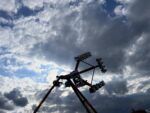
In 1989, Derek Jarman wrote of a day in July: "Lazy high summer. The drowsy bees fall over each other in the scarlet poppies, which shed their petals by noon. Meadow browns and gatekeepers flutter wearily across the shell-pink brambles disputing the nectar with a fast bright tortoiseshell. The bees clamber hungrily up the sour green woodsage. Drifts of mauve rosebay and deep yellow ragwort studded with orange and black burnt caterpillars" (Jarman, 1991: 107). This morning I read an article in the Guardian about the rate and long-term advancement of mass insect death. Based on research on the number of insects killed on the number plates of cars, the study says we have 90% fewer insects in the UK today than we did 100 years ago. During the satellite pass at midday, I note how the recently cut grass of the park has given way to a low layer of clover and dandelions, and how bees fly between the clover, only a couple centimetres above the grass, sometimes bumping into each other and weaving between the higher leaves of grass. Other than the random lazy fly, I don't see any other pollinators. Butterfly populations are especially affected this year, apparently, in part due to the very wet spring-summer that has washed out many of their homes. Derek was already aware of the changing climate in 1989, as he sometimes mentions the warming air and the 'hole in the ozone layer'. I wonder if he knew about mass insect death, though from his descriptions of the cottage garden in Dungeness, he was seemingly at home with a kaleidoscope of insect companions.
2024-07-13 12:52:06
Sasha Engelmann
Hackney Downs, London, United Kingdom
United Kingdom
NOAA-18


Grey, clouded, though lighter than yesterday. I noticed a thin, middle-aged man sat on a bench was watching me with my Yagi antenna. When I set my antenna down at the end of the pass, he walked over. He started with 'Just checking... you were tracking UFOs with that thing?'. I smiled and waved my hand in a 'sort of' gesture. As he turned to walk away I said 'I'm happy to show you what I've got?' and he veered back and sat on the grass near my laptop. We looked at the satellite image together. I pointed at the outlines of France, Spain and North Africa. He exclaimed 'Oh yeah, you're into weather!!' and he added 'I'm into weather too, always have been!'. 'How come?' I asked. He replied 'You can spell Rain, Cloud and Sun with my name... also Oak, Acorn... all the elements!' 'What's your name?' I asked. He replied 'Frances S ...' and a last name that I don't recall that begins with a 'K'. 'All the elements, then!' we laughed. He said 'Well keep lookin out for those UFOs' and I replied 'If I listen to any, I'll let you know!' And off he went, walking fast, south into the park. As I packed up I heard him yell to a man on a bike 'EH!! you have a GOOD DAY!!' As I walked home I thought about which elements I could spell with my name. By counting my middle name (Hildegard) I came up with 'shade', 'shine' 'hail' and 'snail'...
2024-07-11 11:35:36
Sasha Engelmann
Hackney Downs, London, United Kingdom
United Kingdom
NOAA-18



As we lift the blinds in the morning, T says 'what does it mean if the sky is blue!? I don't remember...' and we laugh at the fact that we have not seen a sliver of blue for what seems like weeks in the middle of the UK summer. A funfair is being constructed in Hackney Downs: the rides, swings and other contraptions make silhouettes against the blue on one side of the park. A man comes over to speak to me during the satellite pass, and comments 'you know I see people doing all kinds of things in the park - sitting, walking, like them [motions in the distance] but I never seen this!'. Later in the day, as we are cycling home from a pub on Columbia Road, the black outlines of the funfair machines, resting silently in the park, remind us of a horror film.
2024-07-09 12:01:53
Sasha Engelmann
Hackney Downs, London, United Kingdom
United Kingdom
NOAA-18



The gloomy weather in London persists. Yesterday, upon return home from the Isle of Wight, T and I joked that it felt like the summer was already over- our holiday had lasted two days, and now it is October again. It feels surreal to think that we still have some time in the Adriatic planned for later in the summer. It feels surreal to think of a 'normal' summer at all, at this point. I spend the morning organising open-weather finances in the university finance system called, fittingly, 'Agresso'. I manage to extricate myself from Agresso to go outside for a satellite pass- finding a slow, languid drizzle. Under a tree in the east-side of the park, my Yagi struggles to pick up the signal in the beginning of the pass, as if even the radio spectrum is sluggish, radio waves moving slower than the speed of light through this water-logged air.
2024-07-07 12:31:03
Sasha Engelmann
Buddle Inn, Niton Undercliff, Niton, Isle of Wight, United Kingdom
United Kingdom
NOAA-18





Crawww crawwww the crows spoke as they lifted and tumbled off their roosts along the cliff edge and fell into the strong westerly wind as if it was a blanket, finding shape as a flock seconds later. T and I were several hours in to a hike along the coastal path of the Isle of Wight and the silvery sea was shadowed by elaborate fast moving clouds. The weather forecast had predicted rain and yet we were in the sun most of the day. Our shoes and hands were speckled with the chalk that is characteristic of the island, and our legs happily tired. We learned about the local footpaths and the 'right to roam' across farmland. We also learned about the nettle and bracken that tower several metres high at points along the coastal edge, and send spikes into our ears and our shoes. We learned about some of the locals, too. Earlier in the afternoon, as we paused along the edge of a road to discuss our route, an older man tending a garden asked where we were from and if we needed help. We said we were from London. He said 'no your not!' so we had to explain further. The previous day, in the toilets of a seaside cafe, a bride-to-be looked at T and cried out very loudly and mockingly - 'are you a BOY or a GIRL??!' T found it funny. I ran through angry retaliations in my head for several minutes, then let it go. Back at the cliff, we lay in the tall grass as the crows swirled around us and T did some deep listening. I told T that I felt like falling off the cliff, it felt so tempting to follow the crows.
2024-07-05 12:56:19
Sasha Engelmann
Hackney Downs, London, United Kingdom
United Kingdom
NOAA-18



Last night on BBC weather, the presenter kept comparing current temperatures in the UK to what they 'should be' this time of year. The general trend was toward colder, wetter weather across England, Wales and Scotland. London's average in the first week of July is normally somewhere around 24 degrees C apparently, and it is currently rainy and dark, with a high of 18. As he reported this, the presenter even seemed a bit embarrassed, as if it was an awkward secret he was revealing. I met Muffin Man and a new miniature-Pomeranian rescue, Moonpie, out on the downs in the morning. When I went back out in the early afternoon, a very large, triangular rain cloud approached my ground station from the southwest side of the park, and fat drops began to fall on my antenna. They seemed unusually pendulous. I wondered whether warmer temperatures and the current humid conditions mean that drops grow larger before they fall.
2024-06-29 12:27:48
Sasha Engelmann
West Hackney Recreation Ground, United Kingdom
United Kingdom
NOAA-18



Dalila and I were relaxing on the grass of the garden around the corner from the Stoke Newington Farmer's Market (while I held up my V-Dipole antenna to casually capture a NOAA 18 pass) when a tall man suddenly interrupted us, asking what I was tracking. Within seconds he had laid himself down on the grass between me and D, head towards my laptop, and was asking a flurry of questions. I appreciated his curiosity, but the way he had just placed his body in the middle of our private conversation was annoying. It transpired that he was an academic in the sciences, though I can't remember the exact field, employed by Queen Mary University. When I mentioned later in the conversation that I work at Royal Holloway, he immediately asked "And you live in East London? Why don't you work at Queen Mary?!". I said I would love to have the option of a job at Queen Mary, things weren't that simple! Another tall man came over a few minutes later and asked similar questions, while the first one loaded the open-weather website on his smartphone. Yet as soon as he read the blurb, he exclaimed to his friend "Oh this is not for us... it's a 'feminist experiment'....". I replied actually, it was exactly for them. "I'll have to tie my hair back" said the first man. The second seemed to understand what I had said and backed me up. But at this point my feeling in speaking to them had completely changed- they had now separated me and D, and taken up a long stretch of time, while making remarks like the above. I decided to close my laptop.
2024-06-30 11:34:24
Soph Dyer
Hanging out of the window, sun on my face, Austria
Austria
NOAA-18



I woke relieved to see a cloudy sky and even a few drops of rain. By eleven o'clock the sky had mostly cleared and the temperature is rising again. I feel the heat on my face as I lean out of the window to receive this image. My left arm turned to jelly as I tried to maintain the pose, thrusting my antenna as far East as possible. The Kestrels nesting in the building across the street made frequent alarm calls. Two flying ants danced around the stone work below me. It's Sunday, but N and I leave for Split by train tonight, so I am working a funding application.
Sasha, I know that my contributions have been inconsistent recently. The pain I have weathered for the last year has surely left it's mark. It is 37 days until the operation.
2024-06-28 12:01:02
Soph Dyer
In the heat of Augarten, Austria
Austria
NOAA-18



As I write this weather note there is a warm wind and the temperature has dropped. In the park, I could see large cloud to my West. It might have been a cumulonimbus but its top was cirrus-like and its shape not well defined. The heat is waking me early. This morning instead of rising, I read the news in bed. President Biden has performed poorly in a debate about Trump, unnerving even his allies. The American Democratic Party is panicking. If the situation wasn't so terrifying, it would be funny. Writing this note is taking longer that is should as I feel so drowsy. I have drunk a mate tea to wake-up, however it seems to be having opposite effect. The wind has dropped and the sun is shining again. I could fall asleep at my desk.
2024-06-26 11:22:27
Sasha Engelmann
Hackney Downs, London, United Kingdom
United Kingdom
NOAA-18


It's a hot, hot, hot day in London. People are bravely tanning on the grass in the park, though I imagine some might be roasting. The moment T and I wake up, we open all the windows in our second floor flat. T says, 'we need a storm'. I had brought out my turnstile antenna because, based on yesterday's image, I wondered if there might be more dust over the Mediterranean, and as the NOAA-18 pass was relatively low elevation (35 degrees to the East) I guessed I would see 'farther' than with my DIY yagi. Was Soph already 'seeing the dust', I wondered? As the pass got started, Nutmeg appeared suddenly, circling my ground station, and I turned around to see Bill and a woman walking toward me. Katherine had been briefed by Bill on my satellite ground station and open-weather, and complemented the project. We agreed that, 'you meet all sorts in this park' and 'you learn so much from chatting to people'. I mentioned my interest in seeing the dust, and Bill asked how many tons of dust actually travel in the air? Millions or trillions of tons? He spoke about an analysis he had seen about how long it takes mountains to erode into the rivers and the sea, and explained how scientists had measured weathering down the Colorado River by stringing a kind of line across it and taking many disparate measurements over time (I think). The takeaway was that it will take many millions of years for the mountains to return to the sea, but it will happen eventually! Bill asked whether my laptop was overheating, and I knelt down to hear the internal fan whirring at a high rate.They stayed a few more minutes before Bill said he needed to take Nutmeg to the shade. Later, remembering Bill's questions about dust, I read that "The Sahara is the largest source of aeolian dust in the world, with annual production rates of about 400-700 x 10^6 tons/year, which is almost half of all aeolian desert inputs to the ocean" (Wikipedia). That's 400,000,000 tons of dust per year. I wonder how much is airborne in any given 'dust' event. Or, phrase differently, how much air suspends the dust?
2024-06-25 11:37:32
Sasha Engelmann
Hackney Downs, London, United Kingdom
United Kingdom
NOAA-18



Today has been sunny and bright, but I've been fighting a sharp headache: taking pain killers, taking breaks and moving slowly, but nothing has worked. The one thing that might 'work' is to stop working. Hence why my weather note ends here.
2024-06-23 12:02:01
Sasha Engelmann
St Patrick's Catholic Cemetary, United Kingdom
United Kingdom
NOAA-18




On my way to meet H at Leytonstone Library to see Graeme Miller's radio-borne sound work about the M11 link road, I stopped for a satellite pass at St Patrick's Catholic Cemetary. I had wanted to visit this cemetary for a long time, as it is situated on the prime meridian, 0.000 Longitude. Signs ringed the cemetary suggesting activities were heavily regulated - 'No Exercising or Picnics' 'Cemetary Open For Viewing Graves Only' and one sign that said the cemetary was regularly spraid with toxic chemicals for weeds, and people should wash hands after visiting. I initially put off the thought of collecting a satellite image until I had walked into the cemetary and found a quiet place to sit and reflect. I carefully unfurled my radio antenna. I thought of what I would say if someone asked me what I was doing- 'I'm doing a kind of ritual' or 'I'm just listening' or 'I'm performing a seance, I do this at cemetaries '. Though I am not religious, I said a small prayer to request access to the radio spectrum from the cemetary's residents. An hour later, walking a twisting route along the M11 road and holding radio receivers to the sky, the voices of people whose houses had been demolished to make way for the road emerged and disappeared in radio static. H and I learned the story of a woman who loved a five hundred year old Mulberry Tree that was still standing today, though instead of a communal garden, it is now in a Tesco car park. We heard other stories of older people who had to move out of their houses of forty years, and didn't know where they could go. 'Lonely' was repeated by several voices. The M11 road made a constant background hum, an incessant current of noise alongside our attempt to listen.
2024-06-21 12:25:31
Sasha Engelmann
Wildflower Meadow in Hackney Downs, London, United Kingdom
United Kingdom
NOAA-18
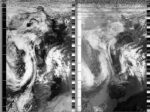



Walking through Hackney Downs at lunchtime today, in peak park-hour, my Yagi antenna was especially conspicuous. Yet I was excited to set up my ground station in the wildflower meadow which had recently begun to blossom with poppies, daisies, and many other beautiful flowers. As I didn't want to block the small paths that are cut into the meadow, I set up on an area just inside a path, where either a dog or a human or both had trampled the flowers, forming a thick mat of grass and aromatic vegetation. What I didn't properly think through was how this would look to other people coming to the meadow at lunch hour. From the path, it looked like me and my ground station were responsible for the squashed flowers. Also, me being off the path probably suggested I authorised or agreed with such flower-destroying activity. As I couldn't easily move when the pass had started, and I couldn't hide my tall Yagi antennna, I found myself exposed to all possible onlookers, park landscapers, dog walkers, mothers, and faraway judgers. Though I couldn't always see them, I heard people muttering under their breath and to each other about 'people' coming to trample the flowers. I stopped the recording early even though the pass was very high elevation and my yagi was performing great. I debated whether to post any photos at all but then decided not to hide what I did! I hope the ten minutes I spent in the off-path area of the meadow can be forgiven by humans and flowers alike.
2024-06-20 12:37:48
Sasha Engelmann
Hackney Downs, London, United Kingdom
United Kingdom
NOAA-18




As I left the flat with my measuring-tape Yagi for the third time this week, Soph sent me a satellite image captured from Vienna this morning in which a large dust plume is clearly visible over the Mediterranean and Italy. I wondered if my DIY Yagi can pick up the dust so far away from the UK. Looking at the antenna lying on the semi-parched grass of the park, it seemed highly unlikely (how could something made of scrap materials pick up the traces of tiny particles in the atmosphere hundreds of kilometres away?). Yet despite the very weak signal received yesterday, my experience testing the antenna on Tuesday suggested it might be possible. And only thirty seconds after the satellite pass officially started, the signal from NOAA was clearly audible and visible, and only grew in strength over the next one or two minutes, so that by the time I began to angle West the signal sounded crisp. Unlike yesterday, tracking the satellite was easy, or perhaps the signal was strong enough that I didn't need to be so precise. Still, while talking to Bill who came over during the pass and kindly took both documentation photos (thanks Bill!), I did slightly dip the Yagi and noticed a drop in the signal. To my great surprise, I recorded almost fifteen minutes worth of audio, so long that WXtoImg automatically stopped recording when the satellite crested the Southern horizon. The image captures a long stretch of Atlantic weather featuring two mini-cyclones (one north of Iceland, one hovering over the north of France) and only a small part of Western Europe and Africa. The dust is out of the frame, to the East. Yet I wonder if my and Soph's images were georeferenced and composited together, might some swirls of dust be visible across both of our images? A fugitive 'weather between us' in the refractions and reflections of quasi-invisible traveling particles.
2024-06-20 12:00:35
Soph Dyer
Augarten, Wien, Austria
Austria
NOAA-18



It's a balmy temperature, just warmer than my body. The sky is hazy and there is a cool breeze. The weather is mild, but I feel enraged.
At breakfast, I let rage well up inside of me as I read the New York Times newsletter's coverage of crisis of aid not reaching people inside Gaza. In my lay opinion, the article's conclusion is morally and legally bankrupt. I have worked on armed conflicts for the last seven years and yesterday, in preparation for a consultancy job, I read 'SOUTH AFRICA’S COMMENTS ON THE REPLY BY ISRAEL TO THE QUESTION POSED BY JUDGE NOLTE AT THE END OF THE ORAL HEARINGS HELD ON 17 AND 18 MAY 2024'. In short, denying civilians access to medical services and humanitarian aid is punitive and illegal. End of.
I suspect different colours of my rage are interconnected, like clouds of a cyclonic weather system. For example, I have such bad cycling rage at the moment and it’s very misandrist. Everything time a male cyclist overtakes me at the traffic lights and then proceeds to cycle slower then me – a regular occurrence – I mentally flip-out and practice the cycling equivalent of tailgating. I should stop this and find a better outlet for this negative energy. Recently, I chased down a male cyclist who had, unprovoked, shouted at me. Sadly, he didn’t notice and it was me who turned into a one way street in the wrong direction.
I could continue to list the things that have provoked rage in me, but there is little point as they are proxies for greater, less direct injustices.
2024-06-17 13:17:03
Sasha Engelmann
Hackney Downs, London, United Kingdom
United Kingdom
NOAA-18

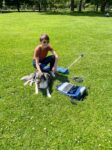

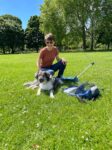

After what has seemed like weeks of rain, cold and relative darkness, today was a dramatic shift into sun and warmth. As I set up my ground station on Hackney Downs, a little grey dog around thirty metres away came sprinting over and jumped into my body, making contact with my face! One of its teeth even slightly knocked one of mine. It was a blur of curly fur for around thirty seconds during which I could hardly see my hands or antenna, and then it ran off again. I saw it go back to its owner, and then spot a sunbather on the grass that it could love-attack. Later, as I was packing up, a gorgeous Romanian sheepdog came over and sat down next to my laptop. This meant the woman accompanying him came over, and we ended up speaking for around ten minutes about satellites, data modes and encrypted / unencrypted data. I asked for some photos of 'Wookie' and she happily obliged and consented for the photos to be uploaded to the open-weather archive, on Wookie's behalf. As I left the field, more people had arrived and were cautiously undressing into swimsuits, checking the sky to see if it was really worth it. I went to the grocery store and bought portobellos, salad, cucumber, sweet potato and mochi.
2024-06-15 21:43:18
Sasha Engelmann
Outside L'Athénée bar, Ixelles, Brussels, Belgium
Belgium
NOAA-18



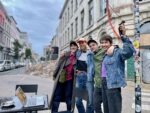

Sofie ran toward me in hall of the Gare du Midi in Brussels, and as soon as our bodies met we realised we were wearing almost the same thing: double denim, white trainers, a simple t-shirt. The next few minutes were a complete blur of overwhelming emotions, extreme happiness and my cheeks hurting from smiling too much. A group of us who had met at the Schloss Solitude art residency in Stuttgart, Germany during the Covid-19 pandemic had staged a reunion in Brussels, where Sofie lives. We spent the rest of the day talking at each other at hyper speed, visiting the exhibition of Belgian architect and feminist Simone Guillissen-Hoa, eating Congolese food in Ixelles, during which most of us ordered whole-fishes and plantain, speaking about life and loss in l'Athénée, and helping each other remember the many stories and moments we shared in the residency. Our experience of Schloss Solitude - a 17th century castle near a baroque forest - was particularly unusual as it happened during the second and third 'waves' of the Covid pandemic. We found ourselves - 35 artists from around the world - stranded in a castle on the top of a hill, affected by a rigorous German curfew and travel ban on movement between regions, let alone countries. Yet our 'castle of crossed destinies' ended up being some of the most memorable months of our lives, with experiments in collective living, workshops and teach-ins, dance classes, countless forest walks and excursions, mushrooms trips, meals and the making of what is now a family. When I went outside of l'Athénée to capture an image from NOAA-18, the night was late but there was still a thin light, and Sofie, Olivia and George came out with me. I spoke to a group of strangers who were immediatley interested in the radio antenna and satellite image, and we laughed in a semi photo shoot with the four of us. I wondered if the radio-borne satellite image, however noisy due to the tall surrounding buildings and angles of the city, registered the frequencies of our joy.
2024-06-14 12:14:18
Sasha Engelmann
Hackney Downs, London, United Kingdom
United Kingdom
NOAA-18



As sudden rains wash through London today, I share the cover of a Plane tree with a Deliveroo driver, an older man with a cane, and a couple of young people playing hookie from school. We form an unlikely bunch, me crouching over my laptop to protect it from stray drops and angling my antenna to the East, and the others either on their phones or sneaking glances at me and at the sky to assess when the rain will stop. We don't speak. In the relative silence, my thoughts continue to be jarred by news of events in Argentina, received in part through Democracy Now, and in part through intermittent texts and updates from two of my close collaborators (on a community air-sensing project) in Buenos Aires. The news media (specifically the Guardian) reports in characteristic language that "Argentina’s Senate narrowly voted to approve the first set of harsh austerity measures proposed by President Javier Miliei... Police used pepper spray, water cannon and teargas against the huge crowds while demonstrators set two overturned cars ablaze and threw molotov cocktails". I think about the generic-ness of this reporting, how little it actually says about the events occurring. Or, conversely, how much it says about how often similar events are occurring. A think tank in Oslo has just released a report that states that there were more armed conflicts in 2023 than in any year since World War II. From Buenos Aires, J writes a text explaining Milei's proposed legislation, that follows months of violent executive orders: "They're changing the retirement age for women and getting rid of a retirement pensions moratorium, making it impossible for informal workers to retire. Plus, they're giving foreign extractive companies the right to litigate in foreign tribunals. These companies get access to natural resources over everyone else, even the indigenous people of Argentina, who have lived in harmony with nature long before the nation state existed. It's really tough, especially in the middle of a years-long recession and economic crisis, with poverty rising to a staggering 55%". D shares that some students from her university have been unfairly imprisoned last night, not far from her house. She tells of an audio message from the mother of one of the students who has been allowed to visit the prison, and it reveals that seven women are on the floor [of the cell] since yesterday, including the students'. 'A form of torture' D adds. All of this as Milei prepares to travel to the G7 summit, a guest of Giorgia Meloni. All of this as 50,000 new fires have been reported in Argentina the past several days, despite the winter season. I spend the rest of my day thinking about Aya Nassar's question: "we hold our breath. Where do we go from here?" (2024: 3).
2024-06-13 12:25:27
Sasha Engelmann
Founder's Field, Royal Holloway University of London, United Kingdom
United Kingdom
NOAA-18
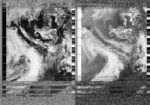



On the train to the university campus this morning, I think: what might it mean to ‘queer’ air, and our relations to it? Several scholars I read and admire have recently gestured to air’s queerness. Nerea Calvillo writes about queering as a practice that is useful when we consider airborne things like pollen. Nerea writes, “Because if air is commonly pictured as an inanimate (and often toxic) gaseous entity, queering it brings to the fore the whole world of animate and invisible entities that are part of it” (2023: 240). Queering air “brings desire, multispecies reproduction and interactions, excess, and ambiguity” to the fore (2023: 241). Nerea thus figures queering air as a tactic of honouring air’s multiplicity and deviancy.
Talkign about multiplicity: later in the day I am standing on tiptoes attaching an antenna to a football post while an airplane approaches Heathrow airport, flying very low over the university campus, and appearing in the corner of one of the documentation images. Minutes later, I am listening to the Russian satellite Meteor MN2-3 drown-out the weaker signal of NOAA-18. The electromagnetic trace of the Russian satellite is clearly visible in the gradations of static in the Southern portion of the image I capture from NOAA. Even later, I am “close reading close breathing” the work of poet Julianna Spahr, cited in the writing of queer theorist Lauren Berlant (2022: 101). An excerpt from Spahr’s poem ‘This connection of everyone with lungs’ goes as follows:
as everyone with lungs breathes the space between the hands and
the space around the hands and the space of the room and the
space of the building that surrounds the room and the space of
the neighbourhoods nearby and the space of the cities in and out
Earlier this week I cited Stephen Connor’s writing on the ‘spaces of observation’ created by scientists to treat air as an object, as a volume that could be controlled. Spahr’s poem offers a very different diagram of air to space, and I would argue this is a queer one. The word ‘air’ is never mentioned in the poem, yet ‘breathes the space’ arises several times. Air is an anterior, a semi-nothingness that nevertheless infrastructures lungs and spaces. Though the poem intersects scales from the space around the hand to the space of neighbourhoods and cities nearby, it doesn’t do so by ‘nesting’ scales in the way we often see in popular media and culture, where the ‘body’ is placed in the ‘local’ and this sits inside the ‘urban’. Instead, reading the poem (that spans several pages) is an interstitial experience where breath is hinged to space and space is in turn hinged to different and plural scales, from the intimate to the planetary. This is an "affective scene [that] focuses on receiving and metabolizing the world while unraveling its presumed solidity" (Berlant, 2022: 97). This is perhaps a "queer reboot of the common" (Berlant, 2022: 99) that comes about through the queering of air.
2024-06-12 12:36:57
Sasha Engelmann
Hackney Downs, London, United Kingdom
United Kingdom
NOAA-18



Watching the satellite image load on my screen around lunchtime, it is hard for me to identify bodies of land, the characteristic sharp edge of France or the icy fingers of Norway. I am not sure if I can make out the fingerprint that is Iceland in the North Atlantic, normally so disinguishable. With my 'orientation devices' missing, I am lost to dis/orientation in the swirls of water vapour, the speckles of reflective cloud-light and the nondescript grey pressing down on me from above. Later in the day, I am reading Mel Chen's piece 'Feminisms in the Air' and in the very last sentence Chen introduces a term I have not heard before, 'melancholic pragmatism'. They write, “Out of the desperation and melancholic pragmatism of this moment, at stake are a series of questions about the “about” of feminisms whose imaginations promise something in the end” (2020: 29). I follow the footnote to read more about 'melancholic pragmatism', and find the following: ““Melancholic pragmatism” is a phrase that emerged in my conversation with philosopher and activist Alisa Bierria on October 17, 2020, about melancholies that do not end in what can be a strangely idealistic form of lossful nihilism, or that are perpetually delayed or denied, but are permitted to exist, registering layers of complexity and acceptance of inevitable complicity and incompletion” (2020: 29). I can relate to this definition of melancholic pragmatism, as it feels like the affective texture of what remains in many of my friends and family members after experiencing the winter of 2024 and the collective witnessing of war crimes in Palestine, Sudan and elsewhere. I imagine that Chen, writing in the midst of the COVID-19 pandemic, might have been feeling a slightly different melancholy, with different layers of 'complicity and incompletion' but nevertheless I think there are similarities, not least of which is the sense that neither nihilism or denial are workable options. Instead, we permit our ethical and moral melancholies to exist, we permit the impenetrable grey skies to press down, and we permit the understanding of a year of climate catastrophe that is only beginning to show how much of an anomaly it truly is. As my workday draws to a close around 7pm I fantastise about writing Chen an email to ask: what is your melancholy layering now? what are you permitting?
2024-06-11 12:49:55
Sasha Engelmann
Hackney Downs, London, United Kingdom
United Kingdom
NOAA-18



Today I am reflecting on volumes of air. In the book 'The matter of air: science and art of the ethereal', Stephen Connor recounts some of the seventeenth century scientific experiments that sought to examine air. He writes: "To study an object, one must pick it out from its surroundings, and concentrate it in one place. How was one to make of the air such an object? How was the air to be picked out of its surroundings, when air was ambience itself? How was the air to be brought before one, when it was of necessity and at all times about?" (Connor, 2010: 17). To 'pick something out' from its surroundings, to 'concentrate it' and to bring it 'before one' is to orient toward it. Yet this act of orientation proves tricky when the thing one seeks to 'pick out' is 'at all times about'. Connor continues: "What if, rather than trying to roll the air up into a ball that one could look at from the outside, one were to produce a space of observation - an air-lock - within the very space of the air?" (2010: 17). Thus, in lieu of condensing air, one might work to enclose it, to create a space in which air is 'locked'. I think of all of the times I have seen air get 'locked' and I think of Robert Boyle and his Enlightenment contemporaries, trying ceaselessly to get air into glass spheres, the better to isolate, contain and observe it. I think of all the 'holds' (Sharpe, 2016) in which humans were locked in ever-dwindling air, yet whose stories are rarely considered in narratives of Enlightenment science or scholarly histories of architecture, space and volume. Could Boyle have conceived of the consequences of volumetric air? Could he have examined the vacuums he created in so many glass spheres as caught up with, rather than removed from, vacuums of airelessness for vast numbers of humans in his time and hundreds of years beyond it? As 'volumetric thinking' is put to work in Gaza every day through the use of aerial weapons from white phosphorous to CS-gas, I wonder, with Aya Nassar: "What if we linger in the gaps between fragments and shards? Is there anything there? Not in the wreckage and debris - we know that well, too well - but in the space of making dust when it is not yet the aftermath?" (2024: 3).
2024-06-08 11:46:39
Sasha Engelmann
Hackney Downs, London, United Kingdom
United Kingdom
NOAA-18


The air is warm but skies are grey, which has been a regular theme these last few weeks in London. A man named Rowan walked barefoot across the grassy field and introduced himself by saying "I think you can guess the question I'm going to ask you". We spoke for almost the duration of the pass, and he kindly took the attached photo of me. As I was explaining NOAA-18's Advanced Very High Resolution Radiometer and how it scans Earth's surface in six spectral bands, but only two of these six are represented in the APT image appearing on my screen, I remembered an article sent to me and Soph by Bill Liles (NQ6Z) that tells the story of Virginia Norwood, sometimes called the 'Mother of Landsat', who designed the Multispectral Scanner (MSS) on board the first Landsat satellite (Landsat-1) launched in 1972. Virginia famously worked with a team to invent a scanning instrument that used a mirror moving between two 'bumpers' at a rate that allowed precise scanning of Earth's surface. According to the article in the MIT technology review, Virginia worked hard to convince NASA and other scientists of the precision of the scanner, and many were sceptical of what they called the 'banging mirror' and how it would work in space. Learning of this history, and specifically the working of the MSS, made me wonder about the relationships between the MSS scanner and the AVHRR of the NOAA fleet. My guess is that early scanning instrument knowledge of the 60s and 70s was shared across NASA and NOAA teams, since these organisations are so entangled with each other and with defense operations. I do also know from previous research that the Automatic Picture Transmission common to most NOAA satellites was first tested in 1963 on TIROS-8, almost a decade before the MSS instrument was launched on the first Landsat satellite. The experimental APT transmissions from TIROS-8 used data from 'a five-channel scanning radiometer', but TIROS-8 also carried two TV cameras (images from these cameras were either transmitted directly to US ground stations when the satellite was in range, or stored on a tape recorder until transmission). A key difference between NOAA and Landsat programmes was purpose- since its formation in 1970, NOAA operated a fleet of TIROS-type weather satellites that were intended for meteorological uses, and so were relatively low resolution. According to NASA, the innovation of Landsat was to produce higher resolution terrestrial images of earth that could be useful to understand crop distribution or even geology, and would supplement the very high resolution of land captured from airplanes. Yet Landsat has further historical relations to NOAA. According to the Wikipedia entry on the Landsat Programme, "In 1979, President of the United States Jimmy Carter's Presidential Directive 54 transferred Landsat operations from NASA to National Oceanic and Atmospheric Administration (NOAA)". Under NOAA's tenure of the Landsat programme, prices for Landsat data soared, as NOAA sought to recover costs from users. This unfortunately led to a massive decrease in Landsat data, except for very powerful and resourceful companies like those in the fossil fuel industry (though we also know that the US government gave special access to satellite imagery for fossil fuel corporations at different points in history). Much like the three still-active NOAA satellites have recently been contracted to Parsons Corporation, the Landsat programme was also temporarily privatised. "This occurred in 1985 when the Earth Observation Satellite Company (EOSAT), a partnership of Hughes Aircraft Company and RCA, was selected by NOAA to operate the Landsat system with a ten-year contract" (Wikipedia). The transition to private maintenance was not smooth, and funds were very short, so in 1989 NOAA directed the shutdown of Landsat 4 and 5. The shutdown was averted by the US Congress, which shifted policy and found emergency funding for the Landsat programme, bringing it back under the control of the government and opening Landsat data once again for widespread use. This was a well timed rescue, since Landsat 6 failed during launch and crashed in the Indian Ocean. Like NOAA-15, 18 and 19, satellites that have remained active long passed their intended lifespans, there are similar stories in Landsat. According to a 2012 article by NASA, "Despite all of the ups and downs, Landsat 5 and 7 operated far beyond their designed lives. The Thematic Mapper (TM) on Landsat 5 only recently gave out after 27 years of imaging; around the same time as TM shut down, operators managed to turn the Multispectral Scanner System (MSS) back on after years of dormancy. Landsat 7 continues its work as well, 13 years after launch". Across NOAA and Landsat, then, there are some common stories of instrumentation, orbital patterns, attempts at privatisation and the longevity of the satellites themselves. As we prepare for the decomissioning of the three still-active analogue NOAA satellites, I'd like to go deeper into the interconnected histories of satellite programmes, scanning-instrument types and the different sorts of 'publics' they were intended to serve.
2024-06-05 11:49:10
Soph Dyer
Pedestrian crossing, by work, Austria
Austria
NOAA-18



It’s noon and the weather is hot and steamy. My head is fuzzy from drinking pink Prosecco with M for her 40th birthday. My antenna is clutching a roadside pole next to the pedestrian crossing outside our studio. An older woman crosses the road, stooped and slow. She must have felt my gaze on her back, as she turns her face folded into a warm smile. I smile back. Trades people and children pass, openly curious but mostly unsmiling. I note how an electric scooter and hybrid bus cause bands of radio frequency interference.
2024-06-04 23:33:06
Soph Dyer
On the balcony, Wien, Austria
Austria
NOAA-18


On WhatsApp, I write to my brother: "It rained so heavily in the night our flat was saturated by the sound. I half expected to wake to flooded streets".
2024-05-29 11:35:05
Soph Dyer
Augarten, Wien, Austria
Austria
NOAA-18

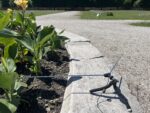
It is sunny. A few white and grey clouds move across an otherwise deep blue sky. A cool wind raises the hairs on my arms. As I receive the radio transmission, I imagine NOAA-18’s rapidly changing location. “Are you over Latvia or Lithuania? Perhaps now Belarus?” I ask. “What do you see?” The questions are not rhetorical nor do I expect a reply. I list the countries its invisible trajectory crosses: Ukraine, Romania, Bulgaria. The satellite’s signal begins to stretch, its wavelength subtly lengthening as it moves away from me. “Have you crossed into Greece?” I ask. “Are you over the blackness of the Mediterranean Sea?” My line-of-sight with the NOAA-18 is unbroken as looks down on Cairo and Egypt, then, it its East, Gaza and Israel. Here, I loose its signal and my line-of-sight. Later, I look up the poetry of Mahmoud Darwish, and re-read ‘Poetic Regulations’
“The stars had only one task: they taught me how to read.
They taught me I had a language in heaven
and another language on earth.
Who am I? Who am I?
I don’t want to answer yet.
May a star fall into itself, and may a forest of chestnut trees rise in the night
toward the Milky Way with me, and may it say:
Remain here!”
2024-05-28 12:24:53
Sasha Engelmann
Downs Road, London, United Kingdom
United Kingdom
NOAA-18




My senses are dulled and my body aches in a dull, persistent way that reminds me eerily of Covid. For most of the day I struggle with clouded focus and a heaviness in all of my limbs. Two lateral flow tests come back negative. I get worked up in an online committee meeting and sweat through my shirt as I wait for my 'raised hand' to be summoned. Soph wonders if I am fighting a (non-Covid) virus, and I remember the way my colleague was coughing in the office when we met on Friday. Yet what I am feeling is nothing like a 'common' cold or flu. On the way to the local health food store, we happen upon a baby fox hiding among sand bags next to a construction site. Passing me, my partner, and the fox, a man says this particular fox had been 'dropped' into his back garden by fox-parents some weeks ago and the fox's family would bring food until the little one was strong enough to jump out. What had it done, I wonder, to deserve such gentle entrapment? It peers up to us, seeming both mildly frightened and defiant. At the health food store, 'East of Eden', I browse a wall of herbal remedies, powders and cures. They have names like 'organic dog blood', 'raw moon' and 'bread nut'. I am surprised not to read 'fox tail'. I don't know what to choose and I end up with dark chocolate and bananas. I wait for my body to give me more signs - a sore throat? a fever? The full-body ache is both everywhere and nowhere, showing no signs of sharpening or waning.
2024-05-27 12:36:10
Sasha Engelmann
Hackney Downs, London, United Kingdom
United Kingdom
NOAA-18


King of Hearts lying listlessly in the grass, crumpled from hands, wind and rain, and ripped (possibly burned?) on one of its edges. A woman and a dog walk past, and the dog makes a wide circle, looking at me inquisitively. "You must get many such looks of suspicion!" jokes the woman. A corner of Svalbard - Spitsbergen - appears at the top of the satellite image as I manage to capture the transmission from the 'High North', much earlier than usual, by standing on my tiptoes and stretching the antenna above my head and at a semi-parallel angle with the ground. I generally avoid such acrobatics as I usually run out of my flat and set up my station only moments before the pass starts, missing the noise from the North. My t-shirt threatens to come out of my denim jeans. For some weeks, a tent has been quietly living under the shade of the vines next to the bike parking area where Downs Road meets the park, and today there is a piece of laminated A4 paper saying '7 day notice'. The notice looks ridiculous strapped to the fabric of the tent with a black zip tie. The absurdity of the notice and the underlying violence it represents reminds me of D Asher Ghertner's (2020) work exploring how contemporary architectures of space and atmosphere "draw from colonial logics of bodily sequestration from outside threats". In other words, we are not just 'living' and 'breathing' the last several centuries of colonialism, extraction and exploitation building up as heat and toxicity in the air (as suggested by Denise Ferreira da Silva), we are also living and breathing "durable spatial dispositions governing how atmospheres are felt, arranged, and imagined". In other words, we are living and breathing ways of engineering and creating air/space that can be traced to the racialisation of the lungs of bodies of colour, the architectures of 'hilltop sanitoriums' where the wealthy could breathe 'clean air', and the personal technology of the air pollution mask, which has a very long history that far predates covid-19 or recent air pollution debates (Ghertner, 2020). Attempts at 'climates of enclosure' that work differently, like that of the streetcorner tent, and that engineer airspaces for those in crisis, are 'given notice' precisely because of this history.
2024-05-26 12:10:02
Jasper Knaebel
Vienna, Augarten, Austria
Austria
NOAA-18



cloudy, warm and bright
2024-05-26 12:50:04
Sasha Engelmann
Hackney Downs, London, United Kingdom
United Kingdom
NOAA-18
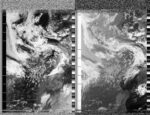



The pass started with an experience of signal flooding: Meteor MN2-3 drowned out the signal of NOAA-18 in a powerful broadcast many times the bandwidth of the analogue NOAA satellite. I could spot the Russian satellite by the characteristic 'surge' of energy that suddenly appeared around 137.9125 MHz, also the downlink frequency of NOAA-18. Only a few minutes later, I found myself speaking of another kind of flood with Ria and Philip, two Jehovah's witnesses who visited my ground station. We had a wonderful conversation about 'seeing' the satellite through radio waves and the types of clouds forming (of which Ria could identify many), and when I mentioned NOAA, Ria immediately connected the name to the Noah who predicted the great flood. I was immediately reminded of the words of Daisy Hildyard when she wrote a response to my and Soph's first open-weather performance, 'Open Work, Second Body'. Daisy begins with the story of Noah's ark as remembered by Proust: "Noah could never have had so a clear view of the world, wrote Proust, as when he gazed upon it from within his ark, sealed though it was, and when darkness was all over the Earth". Later, she describes, "that feeling that isolation and solitude can illuminate if not irradiate a feeling of the outside world". As it was for Ria, for Daisy, "it's hard not to see a gesture toward the old story of the ark that floats alone above the world it came from, a story that was also about making sense of strange weather and predicting or creating futures... a story about how different bodies weather the environment differently". As I leave the park, Ria asks if I can email her the satellite image, and of course I say yes. I think about the image as another kind of ark, floating between my laptop and Ria's, though perhaps on a journey that, by virtue of our conversation, is slightly less lonely.
2024-05-25 13:01:26
Sasha Engelmann
Hackney Downs, London, United Kingdom
United Kingdom
NOAA-18



In a new book called 'The Nerves and their Endings: essays on crisis and response', Jessica Gaitán Johannesson writes, "For those who haven't yet experienced climate collapse in our own bodies, a history not yet written into us, the feeling [of] it arrives in the shape of shadows, an atmospheric wrongness, and harrowing predictions" (Johanesson, 2022: 6). When Johannesson refers to 'those of us who haven't yet experienced climate collapse in our own bodies' she invokes a double meaning. Those who haven't yet experienced climate collapse in a bodily way might refer to the privileged, largely global north 'us' who have yet to experience the world-endings of global heating in an immediate, visceral sense. However, since Jessica opens the book with a vignette from a hospital ward where she was treated for anorexia in her 20s, this phrase may also refer to 'those of us who haven't experienced climate collapse in our own bodies - i.e. an illness like that of an eating disorder' that is fundamentally an illness of control, but also one in which agency (the 'cause') is heavily blurred by the 'slow violence' of gradual but persistent self-harm, diet culture, fashion imagery, 'health magazines', enforced gender binaries, parents and friends too scared or busy to say anything, and the exposures of growing up in capitalism. Johanesson makes the point that by the time one ends up in a hospital ward because every day, for a long time, one has chosen death over life, the advertisers, celebrities, coaches and early childhood events are long gone- you are all that is left, and there may not be much of you left. By the time we cross 1.5 degrees Celsius warming, the 16th century colonisers of Africa and the Americas, the architects of 'development' and 'aid', and the engineers of late liberal capital, are long gone. I do think the analogy has its limits. But I wonder, with Johanesson: might it be that those who have reached the brink of inexistence (by their own means) and come back, who have responded to the harms of contemporary society by so severely harming themselves, and then returned, have something to say about 'climate collapse'? Might they see a bit further than most through 'the shape of shadows' the 'atmospheric wrongness' and the 'harrowing predictions' ? And might the tools of recovery be relevant - tools that require one, every day, long after one might be 'recovered' (as recovery 'never ends'), to consciously 'choose the world'; teachings that one is not 'in control', no matter how much control one may have demonstrated by not eating for days; and the insight that unless the world around us is nourished, we will fail to nourish ourselves.
2024-05-23 11:45:30
Sasha Engelmann
Hackney Downs, London, United Kingdom
United Kingdom
NOAA-18




As I knelt in the cut grass watching an image from NOAA-18 form, I noticed a tall man drawing a yellow tape around the gnarly plane trees nearby. After measuring the circumference he started to circle the trees from below and make notes on a pad. When I was done with the satellite pass I went over to speak to him, and learned that his name was Nathan, and he was surveying the plane trees for health on behalf of the local council. He told me about Massaria disease, believed to be caused by the fungus Splanchnonema platani, which used to be known as Massaria platani until scientists discovered features that required a species name-change. Massaria disease has been found in several parts of the UK in the 21st century, but it is believed to originate in the Mediterranean region. Yet spores were even detected in the air by a survey ship stationed over the mid Atlantic oceanic ridge between the Carribbean and Africa. The distance was somehow fresh in my mind as I had just captured a long satellite pass that included a long stretch of the Atlantic. The fungus has a reddish colour and causes bark to peel off branches, and eventually branches die back. Massaria specifically affects plane trees, but because plane trees are so crucial to the health of London - their leave collect and absorb air pollution, they provide large amounts of shade, and they are resistant to other urban conditions including heat - the Massaria has implicitations for the exposures and vulnerabilities of London's human communities. Nathan suspects most plane trees already have the disease, but it is when they become stressed that they manifest symptoms and health issues. The plane tree in front of us was probably 200 years old, had a diameter of 160 cm, and was doing reasonably well despite its 'pruning scars' and one low-hanging branch that showed signs of Massaria. Nathan asked me in return about my antenna and what I had been measuring. There was something poignant in our encounter - a tree health specialist carrying a diameter tape and notepad, and me with a handheld antenna and laptop - reflecting on air-travelling spores, urban trees and climate.
2024-05-22 11:58:09
Sasha Engelmann
Hackney Downs, London, United Kingdom
United Kingdom
NOAA-18


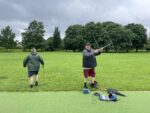
The surfaces of London are covered in traces of the downpour that happened last night. Though the rivers and ponds of water have drained away somehow, pools and thick mud remain. I meet Bill, his partner and their dog Nutmeg during a break in the rain on Hackney Downs. We speak about gravitational waves and the aurora. Bill asks to hold the turnstile antenna and kindly agrees to a photo. As they head on their way, I overhear Bill explaining to another dog owner what I am doing, and I feel grateful that Bill has become a mediator for the project in the neighbourhood, as I might otherwise get quite different reactions! Meanwhile the satellite stays 'in the sky' so long that my recording software automatically cuts off the recording when it nears fifteen minutes, but I can still 'see' the signal. As I decode and examine the weather image that reaches from Kirkenes, Norway to the Western Sahara, I join an online call where my union debates a motion to show solidarity with Palestine in the context of the ongoing 'scholasticide' in Gaza. After much discussion about 'logical fallacies' and whether the motion was 'doing too much', we are called to vote on a secondary motion to let the authors of the first motion take more time to amend its 'scope' before we actually vote on it. Meanwhile, someone in the room says, over 35,000 people in Gaza have been killed. Those who live in the ever-expanding houseless camps near Rafah are deeply unsafe and vulnerable. And yet those of us who are safe, who can 'drink a gin and tonic and go to bed' as one member puts it, are fighting about whether we should keep a point saying the university should divest from arms manufacturers involved in the unfolding genocide.
2024-05-21 13:12:14
Soph Dyer
Augarten, Vienna, Austria
Austria
NOAA-18


Its humid, muggy, close or "schwül" as my German speking studio mate, DD, said before we tried to find a good translation. Weather words rarely seem to translate one-to-one. Or, perhaps this is true for all words, and the high situated, experiential nature of weather exposes the limits of translation. Perhaps then we should get better at learning each other words for weather? Extend our fluency in talking about the 'ever starnger weather' and decoding memories of past weather. Or, maybe we should not rely too heavily on words to communicate weather? After all, its so bodily. Here, it is getting 'muggier'. I am going home as I feel a heaache coming on.
2024-05-20 12:22:50
Sasha Engelmann
Hackney Downs, London, United Kingdom
United Kingdom
NOAA-18



Some days I feel as if so much in the world 'matters', that what we choose 'matters' for us is a very risky and selective exercise. I am re-reading (for probably the twentieth time) Tim Choy's chapter on 'Air's substantiations' in his book Ecologies of Comparison (2011). Tim describes how, as an ethnographer in Hong Kong, he tried to ignore the city's worsening air pollution because wealthy, foreign business people were the ones most often complaining about the air. In contrast, local communities in Hong Kong were suspicious of middle-class and elite efforts to use air pollution data as a political device. It was only when Tim's partner developed a series of very bad sinus infections, and when air pollution made headlines when Disney's boss voiced concerns about locating a Disneyland in Hong Kong due to 'poor air' and its disruption to 'family values', that Tim started to take air's matter seriously. In ignoring the air, Tim was drawing 'lines of distinction' between himself and the largely white foreigners, though he is hardly a local either. In other words, by drawing lines of distinction as we all do every day, we are capable of ignoring what does not align with us, even when that thing is the most obvious element of life. I have been feeling this in relation to heat. I am noticing how people in the UK draw lines of distinction around heat, when for example someone claims to be a 'sunny person', 'warm blooded' or 'Mediterranean at heart', and so better served by sun than rain. This is a relatively inocuous alignment in some ways, but in others it suggests lines of affinity between people and certain geographies, some of which the people doing the aligning have never actually visited, or if so only rarely on holiday. Some of these geographies are also the ones most affected by global heating. What level of heat, or what new distinctions, will maintain or redraw these alignments?
2024-05-20 11:44:50
Soph Dyer
Diepoldpark, by the picnic benches, Vienna, Austria
Austria
NOAA-18


Happy launch-day satellite NOAA-18! It's been 19 years since on this day in 2005 you were launched from Vandenberg Space Force Base in California. Your planned mission was only two years, yet you are still transmitting. Back on Earth, I have cast aside my mum's landline telephone, for a Motorola mobile, for a my first smart phone (a friend's hand-me-down), for an iPhone 13. Can you imagine? It's a pocket-sized radio transceiver that has more computing power than Apollo 11. Dear NOAA-18, radio technology has not only transformed how we make phone calls, it has become cheap and easy to combine with code. While you have been in orbit, software defined radio has become a truly low cost alternative to conventional radio – it is what makes this project, open-weather, possible. Perhaps you already know this since last year, the American government outsourced the management of your data to the longtime defence contractor, Parsons Corporation. Parsons enrolled you in trial cloud-based ground system that is running off Microsoft Azure. As I mentioned in a previous Weather Note, Microsoft has announced that it is building a 'Planetary Computer'. Given your involvement in the trial, it is probable that in your "extended life" you are helping to build this 'digital double' of Earth. Next year, in September, the contract awarded to Parsons to maintain you expires. September 2025 could be date of your mission, but we don't that as information is hard to find. (Parsons, 2022; NOAA, 2023; NCEI, 2023). If true, you have one more birthday to celebrate. Until next year NOAA-18!
2024-05-19 12:36:44
Sasha Engelmann
Private field near Leigh Woods, Bristol, United Kingdom
United Kingdom
NOAA-18

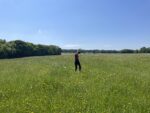



I awoke this morning with a slightly sore head after one too many Ardnamarchan whiskies in a pub on a hilltop in Bristol. Sun blazed through the ‘blackout’ curtains. Bristolians had been anticipating Sun for several days, as we learned when speaking to a friend who runs a small cafe on the Northwest side of the city. There were numerous jokes, practically by everyone who walked in the cafe, about how rarely the Sun appeared and how the summer would be ‘over in three days’. Today my partner and I got a ride to the edge of town and spent the day in Leigh Woods, pointing out sculptural roots and feeling our way through the landscape without much help from maps. I wondered how common the experience of ‘data free’ or ‘no connection’ zones might be in a Sar-linked or One-web future. We hopped a twisted wire fence into a field of high grass and wildflowers to capture a satellite image from NOAA-18. Later, passing by the wide silty banks of the River Avon we stopped to watch small rivulets carving lines into the hillside. Having walked for over four hours we finally arrived back in Clifton Village for a 3:30pm lunch and ordered piles of food. Before the food arrived a middle aged man fainted and nearly fell over while standing next to our table. My partner helped catch him, and while he recovered I remembered my own short-lived phase of fainting in public while standing on street corners in hot, humid Manhattan in the summer of 2011. This was the summer that Hurricane Irene hit New York City and much of Manhattan was evacuated, an eerie precursor to Hurricane Sandy.
2024-05-17 12:22:00
Soph Dyer
Augarten by the flowers, Wien, Austria
Austria
NOAA-18



Dust, grey skies, low light. I am reading over lunch an article on Microsoft's Planetary Computer, shared with me by Sasha. I began reading it during my last hospital appointment, which felt appropriate as, in my experience, hospitals are sites dislocation, dissociation and disorientation (as well as the putting back together of bodies). The authors are arguing for "pluralising the planetary" and recognising its "radical incompleteness"; they are favouring "messy operation(s)" over smooth form (Richardson and Munster, 2023). I message Sasha extracts, so as to not forget them and share resonances. The first reads "a computational enclosure reimagined as liberation".
2024-05-16 11:34:21
Sasha Engelmann
Hackney Downs, London, United Kingdom
United Kingdom
NOAA-18




Though the sky was bright, a light speckling of rain fell as I walked to the park. A crowd of people was spilling outside the Open Doors Baptist Church. The attire was mostly black, however, so I wondered if there was a funeral or memorial service. I took cover under the canopy of a sycamore tree. In the distance, I could hear the human companion of Muffin Man (a small black terrier) explaining to two women what I was doing. They were pointing in my direction and I caught phrases like "she works for..." and "I see her...". As they were deep in the shadow of the grove of trees and I was on the edge of the shade I felt like I was on display in a lightbox, silently going through motions. They didn't approach. The satellite passed to the East and a large part of the Mediterranean appeared on my screen. I assumed there was sun-glint when I saw some blurriness over the ocean, but later realised there were wisps of dust. Using EumetView and the Dust RGB algorithm I confirmed the dust, which appears in a soft cloud of magenta-pink over Northern Africa, Sicily and the seawater in between. I thought of Aya Nassar's words about dust as an 'unravelling traveller' (2021: 458) and wondered how the dust was moving, circling, shifting in its passage. Through the tools of remote sensing and the algorithms used to 'enhance' what is sensed, the dust felt like another curious moving entity, silently on display.
2024-05-16 12:32:00
Soph Dyer
Augarten, Wien, Austria
Austria
NOAA-18


It didn't record, which was such a shame as the satellite pass was long and a sweet 60 degrees to my West. The weather is here warm, gusty and cloudy. The weather app on my phone says that it'll be cloudy for the next two weeks – I hope not. After reading a news story on how people with freckles are at high risk of skin damage, I purchased a pocket-sized tube of sun cream. I am ready for the sun and now its gone. The Slovakian Prime Minister has survived the attack on his life. The latest reports suggest the gunman is in his 70s. It is likely that he grew up in the Soviet era Czechoslovakia and lived through the 'Gentle Revolution', possibly even the 1968 Prague Spring.
2024-05-14 22:49:02
Soph Dyer
On my balcony, Wien, Austria
Austria
NOAA-18




I saw NOAA-18. I tuned off the lights and then, like magic, mid-pass, a white dot appeared almost directly overhead. I could keep eyes on it for several minutes. The satellite glided across the sky, so much faster than I had imagine. It makes sense, that the satellite appears to accelerate when directly overhead and then slow down as it approaches the horizon. Despite this logic, I had always imagined it moving at a constant speed, like the hand of a clock. I am twitching with excitement.
2024-05-13 23:01:31
Soph Dyer
Balcony, Wien, Austria
Austria
NOAA-18


Sun, clouds, and a cool wind. Today is a day of body euphoria. This has become a monthly ritual and one I should get better at celebrating. I am back inside my body and its a wonderous feeling: I have energy and I feel (almost) clear headed. After a long day of work calls, I made it out of the house around 7:45 pm to buy food from the local supermarket before close. On my way home, the sun was low, hidden, except for explosions of gold at the end of every side street. I walked slowly and took in the soothing quality of the light.
2024-05-13 12:10:02
Sasha Engelmann
Hackney Downs, London, United Kingdom
United Kingdom
NOAA-18




I received some bad news last night, and made the mistake of watching a TV show that is a dark, psychological thriller before bed. I dreamed I was in a city under siege and friends were scattered in distant countries. I was trying to send them messages hidden in the frequencies and lyrics of protest songs. A light but deeply gray cloud hangs over London and the park was almost entirely deserted, strange after the way it filled to the brim with people over the weekend. On my walk home I noticed the glossy new leaves of a young horse chestnut tree, and I wondered about its red pigmentation – is it absorbing different wavelengths of light?
2024-05-12 23:13:34
Soph Dyer
My flat, Wien, Austria
Austria
NOAA-18




My hormones have been so low, I have felt dislocated from my body. Come this evening I finally felt a little better. Last night, I was up until 2am watching the Northern Lights or Polarlitchter from a north-facing window in our flat. I was incredibly lucky as I hadn't seen the space weather forecast, but a friend messaged, "Don’t forget there might be polar lights tonight!". At first, I thought that she had misunderstood – we're too far South. Google affirmed my skepticism. Still, it was a clear night so I looked outside. At first, I could see nothing. After around five minutes a bright pink glow appeared behind the rooftops. I completely freaked out. N and I dropped our plans to sleep and ran to a local sports ground. We were both in a state of shock and awe. In my elation called Sasha, texted my family in the UK "Look North!", patronised N for using a flash, and garbled "Danke" to a groundsman who was explaining that we needed to leave as he was locking up. We headed to a local park but the lights had dimmed to a level were I wasn't sure if I could still see them or the pink glow had burned itself into my imagination. Back at home they flared again, this time visible from the flat. N went to bed but I stayed up watching. The pink became almost as vivid as in the long exposure photos I had been taking. White shafts of light appeared and disappeared, so did a fainter green glow. My skin tingles just thinking about it.
2024-05-12 12:23:03
Sasha Engelmann
Hackney Downs, London, United Kingdom
United Kingdom
NOAA-18



I spent an inordinate amount of my waking hours this weekend doing two things: 1) looking for and thinking about the aurora during the unfolding geomagnetic storm that started on Friday, and 2) re-reading Sara Ahmed's book Queer Phenomenology. My head and body are full of orientations. Last night I went out after 11pm to see the northern lights again. After the news media coverage of the G5 storm and the countless magenta-pink photographs on social media, the park was unusually crowded, and I could see people craning their necks to the sky. One person said in the distance: "does anyone see it? Oh come on!" as if urging the ions and Oxygen isotopes to light up on cue. The intensity of the solar storm had decreased and there was less chance of seeing any colour last night. Yet I couldn't help but think more about what was happening to everyone in the middle of their Saturday evenings, standing in a park and peering into the dark, trying to see pink. Ahmed writes, "Seeing such objects as if for the first time... involves wonder, it allows the object to breathe not through a forgetting of its history but by allowing this history to come alive" (2006: 163-164). The bodies in the park were certainly poised for wonder, eager to see the urban night sky 'as if for the first time'. It would be easy to suggest that people were disappointed, but I think something else happened. In the gesture of going out in the dark, waiting and gazing up, and in seeing this gesture repeated by many bodies, I think something did 'come alive'. We faced the same direction, we waited, we produced lines of orientation (and disorientation). While this sounds romantic, I don't think it was; indeed we can question how romantic a gesture of 'looking up' really is when the sky is occluded with light pollution, smog and strings of corporate satellites forming a shell around earth. Instead I think this was about "allowing the oblique to open up another angle on the world" (2016: 172). It was about seeing (and failing to see) something wondrous, something strange and unusual 'coming alive' in the opaque familiarity of the urban night.
2024-05-11 12:36:42
Sasha Engelmann
Hackney Downs, London, United Kingdom
United Kingdom
NOAA-18




A geomagnetic storm reached Earth in the last twenty four hours, creating magenta-pink auroras as far South as Florida. Last night around 10:30pm Soph called me when a bright pink streak appeared over Vienna and I rushed to a window to look North, only to find that there was nothing pink in the sky of London. Heading out to the park, I found a spot in the middle of the largest field, where I normally set up my DIY satellite ground station, and waited. I could hear the club night in full swing at The Star, and I could practically feel the friction of bodies, torn tights and trainers on the sweaty dancefloor. In contrast, the open grass was invitingly dark and cool. A few minutes later I thought I could see a faint pink glow. It grew slowly in intensity. At first I thought I was wishfully imagining it, but suddenly I felt overwhelmed with its vastness and managed to take a photograph. My iphone could see the colour better than me. Like many thousands of other people I dreamed of the aurora last night, and woke up today with its colour fresh in my memory. I wondered what form of collective unconscious we were experiencing, and I remembered Sara Ahmed's words: "We are turned toward things. Such things make an impression on us". Where are we turned when we turn toward the nebulous aurora, collectively? What are its impressions? Another coronal mass ejection is apparently on its way to Earth now, according to space weather scientists. These ejections affect radio: "Radiation from the flare caused a deep shortwave radio blackout over the Pacific Ocean. Ham radio operators and mariners may have noticed loss of signal at frequencies below 30 MHz for as much as an hour after the flare's peak" (Spaceweather.com). The NOAA satellites transmit at 137 Mhz, far from the 'blackout' in the shortwave frequencies, but I still wonder whether transmission could be altered, distorted, even slightly 'agitated' by the spike in charged particles reaching us from our nearest Star. Today during the satellite pass, in the bright sun not far from where I stood last night, three girls passed by some distance away from me, and I could hear one say: 'what is she doing??... is she charging her phone?!' Maybe not my phone, I thought, but I couldn't help wonder if I was charging something else as I pointed my antenna to the solar winds in the sky.
2024-05-10 12:09:30
Soph Dyer
Just off Obere Augartenstraß, Wien, Austria
Austria
NOAA-18


Woke up to Netanyahu's face on the front page of the Guardian. Felt grim despair. Got up, messaged my sister, made a medical appointment, and went to the studio. I received this image on my way in. Veronika, my studio mate, had made spare lunch so we ate together with her collaborator, T. Being cooked food quiets the soul. My hormones at still languishing somewhere at the bottom of the mid Atlantic trench. I feel dreadful. It's a beautifully sunny, clear day.
2024-05-03 12:34:52
Sasha Engelmann
Hackney Downs, London, United Kingdom
United Kingdom
NOAA-18




Drops splashed lightly on my laptop as I took cover under a Sycamore tree during the satellite pass today. While the tree mostly sheltered me and my ground station from the rain, periodic wind gusts would shake the leaves and a rain of large droplets would fall down, teaspoons of rain that pooled above. Thankfully, I could always tell when this would happen because of the sound of the upper tree leaves, and only a few splashes managed to reach my keyboard. As I was focused on this, an elderly couple walked by and both smiled at me.
2024-05-03 11:55:30
Selma, Karlotta, Pau
Vienna, in front of the Academy of Fine Arts, Schillerplatz, Austria
Austria
NOAA-18



Rainy, cloudy.
2024-05-03 11:52:59
Martin EIchler
Vienna, Schillerplatz, Austria
Austria
NOAA-18


Overcast with a light rain.
2024-05-03 12:01:22
Philipp Ortinger
Vienna, Austria
Austria
NOAA-18
It was a rainy day.
2024-05-02 12:07:54
Soph Dyer
On the corner of , Augarten, Wien, Austria
Austria
NOAA-18




It remains windy today. I learned today that the expression "winds of change", which I had taken as old adage, was coined in 1969 by British Prime Minister Harold Macmillan. In a speech in Cape Town, Macmillan referred to the "wind of change […] blowing through this continent", in reference to the decolonisation of Africa. Now I know the expressions origin, I am wary of how it naturalises a social-political struggle, making it feel as inevitable as the changing of weather patterns. I am reminded of a poster I picked up in a corridor in Goldsmiths after the terrible passing of Mark Fisher. Printed in riso red, the poster reads "emancipatory politics must always destroy the appearance of a ‘natural order’, must reveal what is presented as necessary and inevitable to be a mere contingency, just as it must make what was previously deemed to be impossible seem attainable" (Fisher 2009). I see traces of the Polar Jet Stream in the clouds in the satellite image. Or rather jet streams in plural because the more I read the weather and its winds, the more my imagination of a single wind, a kind of wind super highway, breaks down. Instead I see many jet streams: curling and unravelling, breaking up and rejoining, strengthening and weakening. Sasha has shared with me an article on 'global stilling': a prediction that the climate crisis will cause global winds the weaken and possibly, eventually, still.
2024-04-30 22:25:17
Soph Dyer
Beside the Rathaus, Wien, Austria
Austria
NOAA-18

As I receive the satellite transmission, I listen to pop music from a large concert for the SPÖ youth organisations. To get to the street corner we walk through groups of teens. In the shadows of the park they could have passed as much older, but occasional childish impulse to jostle, shout or run after one other gave them away. I read that each year the socialist youth organisation's march through the city with torches, this year their motto is 'Vienna against the Right' or „Wien gegen Rechts“.
2024-04-30 11:34:06
Sasha Engelmann
Hackney Downs, London, United Kingdom
United Kingdom
NOAA-18


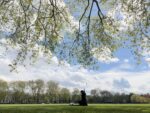


A pair of orange grass cutter machines, like small tractors, circled around Hackney Downs today, carving edges around trees and casting grass perfume into the air. It was sunny and bucolic. Over the weekend I attended a rally in support of Diane Abbott that took place at the centrepoint of the park, in similarly beautiful weather. As a new resident of Hackney (since last October) I didn't know much about Diane Abbott's story, how she was the first black woman elected to the UK parliament, but also how she faced so much overt discrimination and agression while an MP. Several speakers at the rally mentioned Diane's record of standing up in Parliament advocating for the rights of working people and communities, but also how she was frequently shut down or attacked. I also didn't know that in 2023, due to an article she wrote, Diane's 'whip' was removed, effectively suspending her from the Labour Party. As a foreigner in the UK, the idea of a 'whip' is a strange one, and I read that it comes from language around hunting, where a 'whip' keeps hounds from running off the path. Despite all of this, the atmosphere at Diane's rally was exuberant and energetic, with rousing chants of 'We stand with Diane!!!' echoing to all corners of the park. As I meditated on this and received a satellite image, Martin came riding over again. After I shared that I had been comically trying to take photos of myself by propping my phone up in a nearby bank of grass and running to my ground station to pose, he helpfully took some photos of me (thank you Martin!). The satellite image was made by live decoding with SDR++ and an RTL-SDR V3 dongle (sadly I tried the V4 again and there was no signal at all). The troubleshooting continues...
2024-04-28 12:01:18
Sasha Engelmann
Hackney Downs, London, United Kingdom
United Kingdom
NOAA-18




The air of Hackney Downs was wet – sparkling with water – and though it wasn't exactly raining, droplets fell on my body, antenna and laptop. After so many days attempting to record satellite passes during hail, drizzle and rain in Hackney Downs this last month, I wondered if a tree could serve as a tempoorary ground station holder and shelter. A Montpellier Maple tree was close by, bright red, winged seeds were clustered along its branches. My antenna was too heavy for its branches but I observed how the branches and leaves were porous to the radio signal of NOAA-18 to the east.
2024-04-27 23:04:59
Soph Dyer
At home, Wien, Austria
Austria
NOAA-18

2024-04-27 12:13:44
Sasha Engelmann
Beach of the River Thames near Trig Lane Stairs, London, United Kingdom
United Kingdom
NOAA-18





I arrived at the beach of the River Thames shortly after low tide. The curve of stony beach accessible from Trig Lane Stairs was criss crossed by mudlarkers who hardly noticed me as they bent to the ground and turned over pebbles and pieces of seashell. Arriving at the beach straight from a symposium at the Tate, my head was filled with dialogue about sirens, alarms and states of emergence / emergency. The radio spectrum had its own sirens. Around every two minutes or so, the relatively calm 'ocean' of spectrum in which I tuned my ground station was interrupted by what I can only describe as 'blasts' of energy that drowned out all other signals. The blasts would disappear, allowing a minute or two of calm, before returning. I tried to discern whether they coincided with the Uber Boats traveling up and down the Thames. A mudlarker passerby – who turned out to be an art history professor at a university in London – speculated on this wtih me for a few minutes. As I took a final few photos of my ground station the tide was already beginning to come back in.
2024-04-26 12:22:18
Sasha Engelmann
Hackney Downs, London, United Kingdom
United Kingdom
NOAA-18



My ground station was visited by a number of dogs. At one point there was a big husky, a german shepherd, two small terriers and a middle sized dog circling and moving through the radio wires and narrowly overstepping my laptop- a dog seance! They arrived with three people who had come over to see what I was doing. Two people I recognised before (they immediately identified the 'weather satellite') plus a woman I hadn't met. While the dogs carreened about, and the others continued walking, the two of us spoke briefly about environmental science and education. One of the smaller terriers came to sit next to us, as if to get some shelter from the german shepherd, and the three of us watched the image load together as the satellite orbited south over France and Spain.
2024-04-25 12:35:37
Sasha Engelmann
Hackney Downs, London, United Kingdom
United Kingdom
NOAA-18



I arrived on the grass with ideas for an evolving piece of writing spinning in my head. I made a mental post-it board and logged some ideas for the last few sentences of the collaborative essay I was working on. Crows were pacing around on the Downs, maybe making mental notes of their own. One passed close by my ground station and I thought I picked up on a sense of curiosity in my actions. A very large husky, looking strikingly similar to a wolf, charged several of the crows and was only kept from my ground station by a very long tether.
2024-04-23 12:58:47
Sasha Engelmann
Hackney Downs, London, United Kingdom
United Kingdom
NOAA-18


Today is one of those typical days in London where, from the inside, it looks like it is raining outside, but once you are outside you can tell that it's just a wet mist that has made all the surfaces shine with water. The park was relatively empty except for a few people dressed in coats and dogs dressed in little jackets and gillets. The clouds overhead seemed to match the weather systems swirling over the Atlantic, making dense white and off-white shapes.
2024-04-22 22:21:27
Soph Dyer
Hanging out of my window, Wien, Austria
Austria
NOAA-18


Clear skies, still cold. I am tired yet relaxed. It is a long day. In the afternoon and evening I helped to remotely interview applicants for the design school where I teach. Every 15 minutes a student joined the call from a different location: Moscow, Guangzhou, a city I can't recall in Canada, then maybe Barcelona, Offenbach in Germany, a few streets away from me in Vienna, the list went on. Our questions were a variation of: why this course now? The answers overlapped, but the reasons for studying and urgencies were diverse, so too were the concerns about visas, queerness or work after graduation. About half of the candidates expressed a desire to develop a personal creative practice while the others leant toward collaborative or collective work. It is exciting to hear so many desires in one day.
2024-04-22 13:11:32
Sasha Engelmann
Hackney Downs, London, United Kingdom
United Kingdom
NOAA-18



On my walk to the park today I noticed the blooming branches of an eastern redbud tree, and I learned about how eastern redbuds are in fact closely related to legumes. This made sense as the flowers resembled those of sweet peas. The pass was cold and grey, though a man kept riding back and forth on the nearby path singing to himself, which made everything a little more joyful.
2024-04-21 11:44:23
Sasha Engelmann
Hackney Downs, London, United Kingdom
United Kingdom
NOAA-18


Kites flew high in the park today, though the variable wind meant that they often crashed and needed re-launching. The grass has erupted in daisies recently, making white speckles across the ground. Yesterday I went to a local action for Palestine: a rally and march that began at Gillet Square and stopped traffic on Kingsland Road before turning down Dalston Lane and ending at the Hackney Picturehouse (the Rio Cinema and Hackney Picturehouse were chosen as start / end points as they have cancelled/ boycotted events in solidarity with Palestinian artists and people). I find local marches like this extremely moving, in some ways more so than the national protests attended by hundreds of thousands in central London (there is one of these next weekend). Yesterday the march ended with a speech by one of the organisers of Palestine Solidarity UK, about how we need to keep showing up in public spaces, especially as London remains an active site of public protest unlike other cities in Europe. Despite the strength of these local actions, I sense a growing despair and raggedness in the protests, a myriad of ways to conceal feelings of despair.
2024-04-19 12:08:53
Sasha Engelmann
Hackney Downs, London, United Kingdom
United Kingdom
NOAA-18


I forgot to bring an umbrella on my way to the park today, and yet again had to use my body as a shield for my laptop when light rain started. I have been testing the water damage boundaries of my computer during satellite passes recently. As I was packing up two young men and a large curly haired dog approached and we chatted for a few minutes about how often and frequently the NOAA satellites orbit. I showed them the satellite image on my droplet-speckled screen and one said 'I am so glad I asked!'
2024-04-18 12:20:59
Sasha Engelmann
Hackney Downs, London, United Kingdom
United Kingdom
NOAA-18



Positioned in the middle of the freshly cut East field of Hackney Downs in full sun I felt like a planet with its own orbiting moon(s) and gravitational fields. Dogs – like asteroids or meteors – approached and veered away in long and fast trajectories. I studied my position and made sure to look in all directions. On my way back from the downs I passed a young, 4 foot high horse chestnut tree that I hadn't properly observed before. The tree is ringed by a small cage on which there are handwritten notes to 'Dad' and 'grandpa'.
2024-04-17 12:35:19
Sasha Engelmann
Hackney Downs, London, United Kingdom
United Kingdom
NOAA-18
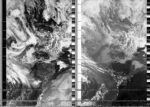


The horse chestnuts are beginning to bloom, and their leaf foliage is now so dense that they cast deep, dark shadows on the grass of the downs. There is a big difference between standing in the sun on exposed grass and standing under a horse chestnut, in its cool shadow. A small, large-eared welsh corgi bounded over to me during the satellite pass, telling me I shouldn't be there. In the long grass the dog had to leap through the green, challenging for short legs.
2024-04-17 13:33:12
Soph Dyer
In the car park Hotel Mariënhage, Eindhoven, The Netherlands
The Netherlands
NOAA-18

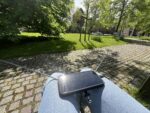
I caught the image between bursts of rain. Drowsy after the night train from Vienna, I enjoy catching rays in the hotel car park. The air is moist and fresh. The clouds few but ripe. Tomorrow my experimental and sometimes unwieldy Critical Cartographies course at Design Academy Eindhoven ends. I'm excited to see the students work, its always energising and surprising. Hopefully they've enjoyed the experience as much as me.
2024-04-16 12:46:32
Sasha Engelmann
Hackney Downs, London, United Kingdom
United Kingdom
NOAA-18

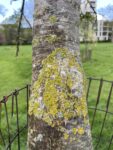

The image I collected was crafted in between sudden downpours of hail! The first time the hail started, I crouched over my laptop and used my body as a quasi-umbrella, and it passed in about a minute. A break of three to four minutes gave me time to recover. In this gap, a young person jogged over from under a nearby tree to me to ask what I was doing. I started to explain by saying 'there is a weather satellite...' but as soon as I said 'weather satellite' he interrrupted me saying, 'oh yeah, I know it, I seen it, I seen it...' and he jogged back to his friends, repeating to them 'it's a weather satellite, I seen it'. Then the second downpour of hail arrived. This time I worried it was here to stay, so I quickly shut things down and got back inside, chunks of ice still in my hair!
2024-04-16 12:08:18
Soph Dyer
Local park, Wien, Austria
Austria
NOAA-18


Can relief be an atmosphere? If so, it is enveloping me. I finally managed to speak to someone who would about my health insurance problem. I think that an end could be insight. It is dry but the clouds are low and the temperature has dropped significantly, again. These days I am alternating between shorts and tee shirts and a heavy winter coat.
2024-04-15 22:08:13
Soph Dyer
Hanging out of my window, Wien, Austria
Austria
NOAA-18


A sunny morning was followed by heavy rain in the late afternoon. At one point, I opened the window facing onto the street and smelled cut grass, which is strange as there are no parks nearby. Before leaving the flat to attend a fundraising meeting, I check the weather radar on my phone and see two large bands of rain almost upon Vienna. Geopolitics is even stormy today. Israel is threatening retaliation against Iran, and stories of dissidents being silenced in Russia and Belarus are in the news. Meanwhile, here, Austria is keeling over to the right. Today, I also learned that abortion is still illegal in Germany.
2024-04-15 12:58:25
Sasha Engelmann
Hackney Downs, London, United Kingdom
United Kingdom
NOAA-18

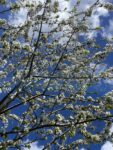

The wind roared in Hackney Downs today. I tried to figure out what the 'roar' consisted of – was it the cumulative effect of all the tree branches and leaves moving against each other? the city-wide friction of wind around buildings, streets and train lines? the scaled-up whoosh of the air across the grass? dog walkers threw sticks into the wind. They sailed high up and were pushed back to where they were released, the dogs doing circles, looking frenzied
2024-04-14 11:30:08
Sasha Engelmann
Hackney Downs, London, United Kingdom
United Kingdom
NOAA-18



Somewhat hidden amongst some young trees and tall grass, and dazed by the bright sun, I heard a joyful 'hello!'. Bill and Nutmeg were walking over. We spoke for a few minutes while the satellite pass began. Bill had looked at the open-weather website, watched our talk at Sonic Acts, and then shared the project with his colleagues (Bill is a train driver). This was amazing to hear- I had never imagined that people I met in the park would take enough interest to follow the project online (I am learning fast about the social life of the Downs). Bill said he liked to think about how, while trains are moving over the ground in our daily lives, satellites are circling and sending signals overhead. The point of his story was to tell me that he had 'stood up for me'. Some of his colleagues are skeptical about feminism.
2024-04-13 11:42:23
Sasha Engelmann
Saint Paul's Church Garden and Labyrinth, United Kingdom
United Kingdom
NOAA-18




The Stoke Newington Farmers Market was at peak activity in the courtyard of Saint Paul's Church while I set up my ground station on the edge of the garden labyrinth. I could smell the Turkish gözleme being cooked on the large round stone, and an herb that I imagined was wild garlic. A man dressed in black with a thick-wheeled, heavy duty electric bike scowled at me from the distance. Another man sat down on a bench near the wall behind me and when I looked around and smiled he exclaimed 'technology!'. That one word hung in the air as I held my antenna to the horizon.
2024-04-12 11:57:27
Sasha Engelmann
Hackney Downs, London, United Kingdom
United Kingdom
NOAA-18


The satellite image I captured today has so many striking details. There are clouds formed by orographic lift off the coast of Scotland – they look like short stripes or patterns, what are called 'gravity waves' in fluids. What I thought were ship's tracks yesterday, today look like contrails from airplanes criss-crossing France, the UK and the North Atlantic. The Alps are strikingly visible in the full sun and against the too-hot land of central Europe.
2024-04-11 10:07:28
Sasha Engelmann
Hackney Downs, London, United Kingdom
United Kingdom
NOAA-18


The sky feels heavy and low to the ground, and the atmosphere suspended, a bit surreal. There is a strange calm. We feel sleepy and low in energy. It is kind of warm and humid but it won't rain – this is where 'suspension' comes from, there won't be a release. In the satellite image, we notice the sharp intersecting lines of ships' tracks across the North Atlantic caused by aerosols released from the ships' exhaust. This morning, when we looked at iPhone weather app, the app said we are 'seven degrees above the historical average' for this time of year.
2024-04-09 12:36:32
Sasha Engelmann
Downs Road, London, United Kingdom
United Kingdom
NOAA-18





As a bulb of fennel sizzled in olive oil on the stove, I leaned outside the second floor window of our flat, angling my turnstile antenna at around seventy degrees to the West. It didn't feel that long ago that doing so would have made me shiver with cold, but today I reached out the window withoat a coat or gloves. The air helped to soothe a splitting headache I developed from staring too hard at my computer screen this morning. The pain also made my perceptions fuzzy – a slight 'shimmer' in my peripheral vision.
2024-04-08 12:45:57
Sasha Engelmann
Hackney Downs, London, United Kingdom
United Kingdom
NOAA-18


Sun has been shining through the shutters of our south-facing flat's windows all morning, making ladder-like spotlights on the wood floor. The park was full of dogs and people: a body builder lifting what looked from afar like a giant, square piece of concrete, as if pulled up out of a London sidewalk; a young couple submerged and entangled in the grass; an office-attire wearing woman who spoke loudly to herself and a smartphone. The air smelled faintly of lemons and coffee.
2024-04-06 13:10:09
Sasha Engelmann
Hackney Downs, London, United Kingdom
United Kingdom
NOAA-18


Across Europe the air is unusually warm and skies are cloudy and hazy today, but the atmosphere in London is bucolic, with picnickers spread out over the grass of Hackney Downs. I spotted an incredibly beautiful bird in the garden, I suspect a kind of Jay with very striking blue array of feathers on its wings. In my satellite image, Storm Kathleen swirls in a dramatic line over the Atlantic, and I wonder how it can be so un-stormy in London. According to one online news article, Ellie Glaisyer, a Met Office meteorologist, says: “The storm [Kathleen] is the reason we are seeing the warmer temperatures, because the location of the storm – situated out towards the west – is bringing a southerly wind across the UK.”
2024-04-05 11:42:53
Sasha Engelmann
Clapton Pond, London, United Kingdom
United Kingdom
NOAA-18



I have been thinking all morning about the wind, so I was particularly attuned to the creaks and murmurs of the wind around our flat and street this morning. The wind in my thoughts, though, was different to the one chasing clouds across the sky of London in big gusts. Instead, I was tracing my family's memories of the 'Jugo', a wind that originates in the South over Africa, and blows over North Africa and the Mediterranean. Once it reaches the Balkans, the Jugo has picked up many particles and water droplets along the way. In my family's lore, shared across many in the Balkans and former 'Jugo-slavic' peoples, the Jugo brings certain feelings and emotions to the foreground. Yet unlike the Bora, a brisk, cold wind from the Northeast, very little has been written about the Jugo's cultural value, its meanings, and how it maps onto ideas of 'the south' in ways that need attention and critique.
2024-03-31 12:04:22
Soph Dyer
Asperleiten (favourite place), Wienerwald, Austria
Austria
NOAA-18



We went seeking satellites and Saharan Dust. Last night, I discovered the chrome mudguards of my bicycle patterned with rust coloured droplets. N said that they look like small galaxies. Now we are walking to my favourite tree-lined field in the Wienerwald (Vienna Woods). The light levels have increased, but even when the sun is out there is a thick haze. On reaching the field, I slip on a golden vest, clip belt and tool pouch. The beautifully gender neutralising astronaut-athleisure 'look' is intended to disrupt the documentary style photos we are about to take. Stood in the centre of the field among tubular Cowslip flowers, I scan the Northern horizon with the antenna while N snaps away on my iPhone. I almost forget to adjust the antenna's Gain. When I do, NOAA-18 appears. We spend the next 10 minutes enacting a satellite hunt, much to the confusion of a couple who walk past twice with two yapping lap dogs. The results of the very real satellite hunt photoshoot are great. To have spotted the iron and mineral-rich Dust cloud in imagery two days ago, and to now be immersed in it, to be experiencing it as 'weather', is uncanny. The walk to the bus home is longer and sweatier than I expected. A warm wind is being drawn North, and presumably with it the dust – a billion small crystalline galaxies.
2024-03-30 11:19:06
Sasha Engelmann
Playground at the Area di Servizio, Novara Sud, Italy
Italy
NOAA-18



Continuing our road trip, we descended from Courmayeur through the Vallee d'Aosta and around mid-morning were surrounded by a thick, matte grey haze just north of Novara, en route to Milan. As a satellite pass was imminent we decided to stop at an 'area di servizio' and take a short break. The AdS turned out to be crowded with trucks (one with a banner reading HOPTRANS) and cars, so the only place to set up the ground station was in a tiny children's playground called PlayLand, ringed with a fence. As the image loaded it showed a promiment veil of dust crossing the Mediterranean and completely covering Italy. Later as we were driving further east, we noticed that rain drops made small red marks on the windscreen.
2024-03-30 11:17:58
Soph Dyer
Diepoldpark, Wien, Austria
Austria
NOAA-18

Why is it that I am so low energy? The sunlight that has made it through the dense semicircle-shaped cloud over Vienna is dim and omnidirectional. It's warm and humid. I woke early and could not fall back asleep. I had hoped to begin the day clear headed, ready to write. Yesterday, after uploading my satellite recording to this archive, I noticed a large plume of Saharan Dust over the Mediterranean. I wrote to Sasha who relied saying that she had not spotted the cloud in her imagery had observed a "light sprinkling" of a reddish dust on the snow. We share an interest in the ways satellite imagery is, “drawn to the dust, the particulate, which it has itself apparently become.” (Leslie, 2021: 102). I want to get better at reading particles, not just pixels.
2024-03-29 11:28:18
Soph Dyer
Usual spot, Augarten, Austria
Austria
NOAA-18

It feels like the first day of spring, again. It is windy but sunny, warm and dry. I sit on the stone flowerbed in the park and receive a long image with the satellite just under 70 degrees to my West. Stupidly, knowing that we had to get up early this morning to view two flats, I worked late last night and then doom scrolled the Internet. Now, I am tried and annoyed with myself. I have been feeling unsettle for multiple days now, I hope this feeling passes. This afternoon I must focus on writing an essay for open-weather. I think that I will write about how NOAA-15, NOAA-18 and OAA-19 may be decommissioned as soon as September 2025. It is less the "ending", more the not knowing when it will happen that is a concern for the project.
2024-03-28 11:42:10
Sasha Engelmann
Aire de Châteauvillain, France
France
NOAA-18


The rather grandly named 'Aire de Chateauvillain' is a gas station, electric car charger port and a food court with a Paul and a bistro. After waking at 6am and driving the best part of the day, my partner and I were absolutely starving, but we had trouble finding anything to eat. After being shown to a table between two other traveling couples, we were turned away from the bistro when they said they were 'out' of both the squash soup I wanted, the cheese plate we were going to share, and the goat cheese in the salad my partner ordered. As many other people were eating there, I had a sneaking suspicion that the bistro wasn't really 'out' of all of these separate dishes (how can a french bistro be out of chevre!? or cheese in general?!) but that we were turned away for other reasons. We made the best of it, and after I captured a rather noisy satellite image from NOAA-18, we went on our way.
2024-03-27 21:42:54
Soph Dyer
Malzgasse bus stop, Wien, Austria
Austria
NOAA-18



"And this is how it sees storms!" I write to Michaela, sharing a vividly coloured enhancement of the satellite image that we had received earlier, standing at the bus stop outside our shared studio space. "That’s just another name for us", she replies with the wit of the screenwriter she is. I like this thought – that we are storms. Robert, standing next to me, looking at my laptop screen, points out the Gaza Strip. I dismissed his observation because the the section of image beneath the map overlay appears to be only noise. Later, when I turned off the map overlay, to my surpsie Gaza's coastline was still visible – noisy but indisputably present in the image. How many times has Gaza been visible, only for me to not see it? I have spent the day working remotely with colleagues in London on digital platform for investigations into Gaza War. And now, somehow, without realising, from my local bus stop I have formed an indirect yet unbroken line-of-sight with the Palestinian territory.
2024-03-25 22:09:44
Soph Dyer
Diepoldpark, Wien, Austria
Austria
NOAA-18


It is still but cold. I receive the image in our local park, standing by the toilets. Earlier in the day, on the train platform in Brno, I see a man dressed like a cattle herder, in full leathers, carrying tall boots. At the vegetable market, I buy a woven fruit basket from aother burly man who shows me and N a photo of him dressed as Obelix the Gaul. Tomorrow is meant to be sunny.
2024-03-25 11:17:59
Sasha Engelmann
Hackney Downs, London, United Kingdom
United Kingdom
NOAA-18


The grass in Hackney Downs has been freshly mowed either last night or this morning, and the smell is all-pervasive and enveloping, and feels even more potent given the relatively low wind. I could hear snippets of conversations across the downs (a dog walker asking another dog walker: 'poodle?!' 'no, labradoodle!'). A man walked nearby and when I smiled, he asked in an eastern european accent 'what is it'? When I replied, he asked 'are you a meteorologist'? I was surprised by my hestitation in answering, though I eventually confirmed 'no'.
2024-03-24 11:30:45
Sasha Engelmann
Springfield Park, London, United Kingdom
United Kingdom
NOAA-18


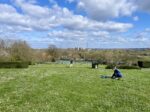

I realised as I left the flat today that I was wearing all-blue: old blue denim jeans from Uniqlo, a faded blue denim jacket with a warm lining that was my Mom's and has always smelled faintly of cigarettes, a striped navy blue jumper from my partner, royal blue socks, and a blue backpack and antenna bag. In Springfield Park in North Clapton I set up my ground station in a pool of daisies. A young couple asked me if I would take photos of them with their new baby. After I did so I asked for the favour in return, ending up with about twenty very skewed photos of me crouching over my ground station. When I explained what I was doing, the man who took the photos remembered seeing a string of Starlink satellites, which for him was 'weird' and 'frightening'. We had a brief chat about satellite resistance before they continued on their stroll.
2024-03-23 11:44:08
Sasha Engelmann
Hackney Downs, London, United Kingdom
United Kingdom
NOAA-18
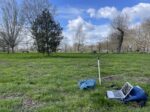
The temperature dropped by at least five degrees and a cold wind is sweeping over London. I was excited to 'see the wind' from above in the cloud fronts over the North Atlantic, but my laptop died within two minutes. In the sliver of an image that I managed to capture the white fingers of Iceland are just about visible. I remembered a conversation I overheard in a hair salon earlier this week about someone's upcoming trip to Iceland. They said 'we're going now as it's so volcanic, it might not be safe soon... then again, it's such a big destination, I'm sure 'they' will figure it out'
2024-03-22 11:59:02
Sasha Engelmann
Downs Road, London, United Kingdom
United Kingdom
NOAA-18


A weather system
tremulous and noisy
between walls
2024-03-21 12:10:23
Sasha Engelmann
Russell Square, London, United Kingdom
United Kingdom
NOAA-18


On my bike ride to central London this morning, I noticed a cherry tree in full pink bloom in the courtyard of a church, and several magnolias in either late bloom or already dropping their oversized white petals. Yesterday was the spring equinox, but it feels like the singularity of spring happened some time ago. In Russell Square there were cordoned-off gatherings of bright yellow daffodils (though I wondered why it was necessary to ring these with black spokes and wire).
2024-03-21 11:26:48
Soph Dyer
Flowerbed, Augarten, Wien, Austria
Austria
NOAA-18




My phone says that it's 3C but it feels warm in the heat of the sun. I take off my coat and sit on the edge of the stone flowerbed, taking in the bulbs that have sprouted, listening to the satellite's signal, and offering a polite smile to the people who stare as they walk past. I mostly get blank looks, but one older man returns a scowl. It is not just the rise in temperature that makes it feel like spring is here, the air is scented.
2024-03-19 21:44:25
Soph Dyer
Leaning out of the window, Wien, Austria
Austria
NOAA-18


I catch the last satellite pass of the day, dog tired. I am still waiting for a medical intervention to relive me of the pain that comes in night, preventing me from sleeping soundly. It is cold but clear out. I have given into the warmth of my flat and am leaing out of out the window. This morning on my way to the studio, I a man cycles past me carrying a full-sized bow and arrow.
2024-03-18 10:30:30
Soph Dyer
Augarten, Wien, Austria
Austria
NOAA-18


I enter the radio frequency incorrectly and only discover half way through the satellite pass. My bike is leant against a Yew bush. The park is full of children and adult carers, sat on benches in the sun. In my usual spot there was an older woman talking animately to herself, I decide not to risk interupting her. The temperature has dropped, but the sky remains clear. I will call Sasha to discuss this project.
2024-03-17 11:17:21
Sasha Engelmann
Hackney Downs, London, United Kingdom
United Kingdom
NOAA-18


A gentle rain fell for the first half of the morning but conveniently began to let up before I headed outside to the park. The grass felt warm somehow, even though it was slick and waterlogged. As I stood with my antenna in the usual field, reflecting on the horizon, a jogger passed close by and in the space of twenty seconds we had a brief exchange. As he ran off he remarked 'the things you can do in the local park!'
2024-03-16 11:29:32
Sasha Engelmann
Hackney Downs, London, United Kingdom
United Kingdom
NOAA-18


The sun came brightly through our windows this morning. Hackney Downs was brimming with activity, including the usual small persons' soccer practice on the open field. I set up a good distance away from the soccer, but still two balls came my way, kicked high into the air by players whose fluorescent jerseys came down over their knees.
2024-03-15 11:42:52
Sasha Engelmann
Greville Court Park and Playground, United Kingdom
United Kingdom
NOAA-18

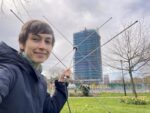
An animated wind is bending tree branches, ripping petals off magnolia trees and making waves in the deep green grass that has sprung up in parks, squares and pavement-free soil around Hackney. En route to a pharmacy, I stopped in a small park in between the Greville and Rogate estates. A tower block, wrapped in blue fabric, was being constructed (or refurbished) at the far side of the park, sending drilling and hammering sounds into the wind.
2024-03-14 11:55:01
Sasha Engelmann
Hackney Downs, London, United Kingdom
United Kingdom
NOAA-18


I wanted to field the ground today, so I laid onto the grass of Hackney Downs while capturing the satellite image. It was wet, yes, and musty too, and it smelled a little like unhealthy compost and dogs, but it was nice to feel my whole body flat against the surface of the ground. The air was cool and mild and lots of people were out in the park, some staring at me as they passed a safe distance away.
2024-03-14 11:15:08
Soph Dyer
Augarten by the flowers, Wien, Austria
Austria
NOAA-18




I did not press 'stop recording' before closing SDR++, and so corrupted the file.
2024-03-12 10:43:42
Sasha Engelmann
Downs Road, London, United Kingdom
United Kingdom
NOAA-18

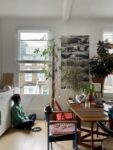
The darkness of yesterday has bloomed into spring rain today. Sitting by the open kitchen window, I could hear the pigeons cooing on the roof, perhaps making use of the partial cover of the chimney wall. Many people walked by on Downs Road, though their umbrellas and quick paces meant that they kept their eyes on the sidewalk, oblivious to a strange metal object being held out of a third floor window.
2024-03-11 12:40:03
Sasha Engelmann
Hackney Downs, London, United Kingdom
United Kingdom
NOAA-18

This Monday in London in early March is grey and dark. I had the living room lamp on for most of the morning while I was on zoom calls. I was several minutes late for the low-elevation NOAA-18 satellite pass at lunchtime but I'm still glad I went out to the park, as I met a young mom pushing a stroller, who stopped by to ask what I was doing. I showed her the clouds slowly forming over the South Atlantic, and we spoke briefly about the weather 'above and below'.
2024-03-10 11:08:28
Sasha Engelmann
Downs Road, London, United Kingdom
United Kingdom
NOAA-18


A light rain is forecast to fall all day today. It is coating the street, parked cars, trees, bricks and asphalt in a layer of water that is perpetually replenished from the sky. In weather like this, I wonder how the bugs and creatures of the soil are doing. As water logs the pores between grass roots and humus, do the smaller creatures begin to swim? do they breathe underwater?
2024-03-09 11:17:08
Sasha Engelmann
Hackney Downs, London, United Kingdom
United Kingdom
NOAA-18




A golden light has suffused the whole morning. The grass of the downs feels warmer, like the earth has heated up underneath. Near where I had set up my ground station, purple crocuses were pushing up through the weeds.
2024-03-08 13:10:12
Sasha Engelmann
Hackney Downs, London, United Kingdom
United Kingdom
NOAA-18


I am writing this weather note on a laptop that has been stepped on by a dog. I can almost see the outline of a paw on the lower right hand side of my laptop keyboard! While I was out in the field this afternoon, a man came up to me and asked what I was doing. He said he was following groups on Facebook doing similar things, but had never tried himself. He seemed genuinely interested in learning about open-weather and as we spoke his dog circled us several times, getting in the midst of the ground station and possibly changing the frequency I was tuned to...
2024-03-07 10:59:59
Soph Dyer
Augarten by the trees, Wien, Austria
Austria
NOAA-18


2024-03-05 22:09:44
Soph Dyer
Tyršův sad, Brno, Czechia
Czechia
NOAA-18


2024-03-05 11:27:55
Soph Dyer
On the balcony, Wien, Austria
Austria
NOAA-18



2024-03-04 21:28:15
Soph Dyer
At home, Wien, Austria
Austria
NOAA-18


2024-03-04 12:19:32
Sasha Engelmann
Hackney Downs, London, United Kingdom
United Kingdom
NOAA-18


My allergies have been horrible today- so bad that none of my emergency allergy medications and measures are working. While capturing the satellite pass, my eyes watered so much that I couldn't read the frequencies clearly; once back inside the symptoms didn't let up. When this happens I find myself desperately searching for the cause, but the thing about allergies is that sometimes there isn't one that is clearly defined. I am speculating about dust, springtime pollen, a low immune system, or lack of sleep- but none of these feel like the obvious source.
2024-03-03 20:39:23
Soph Dyer
Diepoldpark, Wien, Austria
Austria
NOAA-18




2024-03-02 12:45:48
Sasha Engelmann
Hackney Downs, London, United Kingdom
United Kingdom
NOAA-18


This was a social day in Hackney Downs! I was approached by two men and their dogs, and speaking to them took up most of my attention during the pass. The first was an older, very large man named Bill and his dog nutmeg, a medium sized, curly haired deep brown dog, maybe a kind of terrier. The second was a younger man with a very big and wide laborador. Bill told me stories of his father who had used radio during WWII to listen to the Germans, and later erected aerials at racecourses across the UK (for reasons I didn't entirely understand). He also told me about a lecture he had attended by someone called Chris Lintott that was about microwaves and radio astronomy. The second man whose name I didn't catch had set up an antenna on the roof of his second floor flat to listen to ADSB. He mentioned he had gotten a dipole and tried capturing a satellite image but was unsuccessful. He also asked if I was into amateur radio and when I said yes, he said 'you and about five other people in the world, right?'
2024-03-01 22:06:11
Soph Dyer
At home, Wien, Austria
Austria
NOAA-18

2024-03-01 11:15:14
Sasha Engelmann
Munro Fox Lab, Royal Holloway University, United Kingdom
United Kingdom
NOAA-18


My socks and shoes were already damp from weathering my morning commute to campus, and they got even wetter as I traipsed around the university grounds trying to find a good place for the satellite pass. The field to the back of Queens Building (where the Geography department is based) was virtually spongy with water. I decided to try to set up on a picnic table in the middle of two science laboratories. In full view of biological sciences researchers fiddling with pipets and samples through a bungalo window, I set up my ground station and hand-held the V-dipole. I was lucky that the first eight minutes were rain-free, but toward the end I had to lean my body over the laptop to protect it from drowning.
2024-02-27 11:51:48
Sasha Engelmann
Hackney Downs, London, United Kingdom
United Kingdom
NOAA-18


This is the first day that feels a little like spring in London. The air has that shimmer that happens when it is misty but also bright. The green of the grass of Hackney Downs is vivid, an invitation to lie down (which I did) though I quickly learned it was also very soggy underneath. The satellite image I captured has a small cyclone curling over the North Sea, its long tail curving and sweeping all the way to the coast of Morocco.
2024-02-26 12:05:23
Sasha Engelmann
Hackney Downs, London, United Kingdom
United Kingdom
NOAA-18


All night the wind howled around our flat. It caused unusual squeeks and whistles in different rooms. As a worked alone at my desk in the living room, the smaller, more random sounds made me imagine other people in the house, so much so that I went into the bedroom and studio to check! The wind had calmed by the time I went outside to catch the satellite pass, but I kept thinking of the wind-people.
2024-02-25 10:44:07
Elliott Engelmann
New York City, United States
United States
NOAA-18

Sunny day at Jacob Riis park in New York, about 2 degrees C, bit of wind from the southwest. I see mostly clear skies all the way up and down the east coast of the U.S. with a few clouds in mainland Canada and a weather system over the Atlantic. I'm noticing very little snow cover in the northeast U.S. until Maine, which is not typical for this time of year.
2024-02-22 22:05:16
Soph Dyer
Reaching out of the door, Wien, Austria
Austria
NOAA-18

2024-02-22 11:25:02
Elliott Engelmann
Classon Ave, Brooklyn, United States
United States
NOAA-18



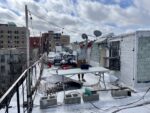
Freezing air, but cotton-ball like clouds hovered over Prospect heights today. We noticed how the satellite signal came through, bouncing around nearby highrises and possibly affected by the elevated hill of prospect park to our West.
2024-02-13 10:44:38
Soph Dyer
On my balcony, Wien, Austria
Austria
NOAA-18


QFH antenna test.
2024-02-13 09:43:50
Sasha Engelmann
Hackney Downs, London, United Kingdom
United Kingdom
NOAA-18

As I hurried out the door and toward the park, I realised that an invisible drizzle had become a light rain. I grabbed one of the broken umbrellas by the front porch and went to the park anyway. Crouching under the makeshift shelter on a park bench, I assembled my ground station and tuned to the frequency of NOAA-18. I knew the pass would be very low in elevation – only 19 degrees to the East – but I was hopeful. After a few minutes of weak signal as the satellite struggled to crest the horizon, a clear image began to appear- showing what I thought were Nordic glaciers and reflective lake surfaces. Only a minute or two later, the unmistakeable 'mound' of Meteor M N2-3 appeared surrounding and engulfing NOAA-18. Though the NOAA signal was strong, it was simply drowned out by the much wider and more powerful digital signal of the Meteor satellite, like someone trying to whisper in a crowded bar. I stopped the recording early, reasonably drenched by the rain, and returned with the glinting shapes of Nordic lakes in my mind.
2024-02-12 11:40:06
Sasha Engelmann
Hackney Downs, London, United Kingdom
United Kingdom
NOAA-18


I counted the seconds in the pass I captured this morning. Though the pass was of good elevation, and the weather is beautifully sunny and uncharacteristically warm, I truncated my recording and practically ran home with my antenna still assembled and my cables and laptop dangling. I was worried I would miss saying goodbye to my partner as she finished packing up and left for the airport.
2024-02-11 11:48:14
Sasha Engelmann
Hackney Downs, London, United Kingdom
United Kingdom
NOAA-18


After a weekend of rain and mist, this Sunday morning is glorious, with bright sun coming through very soft clouds. The local Baptist church is in full swing and fragments of choir music and raucous laughter echo into the park from the church's open door. A small group of teenagers gather on the street corner in between the church and the park, angling their faces to the sun. As I recorded the satellite pass I was visited by a small grey curly-haired dog with a red collar who then sped over the wet grass in circles around me. I think about 'dog satellites' and speculate on what they might transmit.
2024-02-09 10:46:17
Sasha Engelmann
Hackney Downs, London, United Kingdom
United Kingdom
NOAA-18
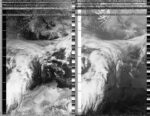

Rain pattered on the windowsills all morning. Water pooled and ran down the glass, and mist seemed to hover in between the three story houses on either side of our one-way street, like a wet cloud trapped in a crevice of our neighbourhood. I contemplated staying inside with my antenna held out the window, but ended up braving the rain with a big broken umbrella and a long insulated raincoat. Once outside, I propped the umbrella over a bench and set up my laptop and dongle under its shelter, with the antenna and cables curling out. At one point during the pass, the wind moved the umbrella and its flimsy, broken side sent pools of water splashing onto the keyboard of the computer- which I hurriedly brushed off with the sleeve of my coat, hoping no damage would be done. A man in full high-vis weather gear with a wheelbarow that looked like a recycling collection stopped next to the bench and asked what it was I was doing out here.
2024-02-07 21:47:26
Soph Dyer
On my balcony, Wien, Austria
Austria
NOAA-18



I was buffeted by mild but squally weather through the satellite pass. When I looked behind me the sky was ominously dark. For a moment, I thought that I should put down my antenna in case an electrical storm was coming, but none was forecast so I kept recording. It has been a tough day and I am feeling tired.
2024-02-01 11:30:57
Soph Dyer
Beside the round flowerbed in Augarten, Wien, Austria
Austria
NOAA-18





Wet! I have just come back inside from the satellite pass, dripping. I stood in Augarten park, in the intensifying rain, my laptop inside a small bin bag tent. From the warmth of my shared studio, I decoded the image. A huge white arc of water sweeps across my screen from North from Spain to Norway. Is this what it feels like to be at sea – to orientate by waves of water and light? Sometimes Sasha and I joke that open-weather is a queer, feminist space agency. Right now, I feel less like an astronaut and more like an aquanaut.
2024-02-06 10:32:11
Soph Dyer
Children's play area in Diepoldpark, Wien, Austria
Austria
NOAA-18


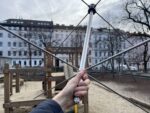
Blustery, blue and spring-like. The wind was so string this morning, it almost blew me off my bike.
2024-02-05 11:23:11
Sasha Engelmann
Hackney Downs, London, United Kingdom
United Kingdom
NOAA-18



There is high wind today, it feels like gusts are slicing across the surface of the city, though it is hard to tell from what precise direction. The clouds are patchy and partial, like a fast-moving lattice, and sun pierces through in very quick beams that meet earth's surface and disappear again. I imagine that from the position of the clouds, it might be like a high-speed game of shadow puppets. What shapes they must be casting!
2024-02-04 11:36:07
Sasha Engelmann
Hackney Marshes, London, United Kingdom
United Kingdom
NOAA-18



A cold wind slowed me down on my cycle ride out to Hackney Marshes. Once in the marshes, I weaved between Sunday strollers, kids on bikes, canal boaters and athletes to find a corner of the marshes to set up my ground station. At first the NOAA-18 signal was drowned out by the characteristic signal of the Meteor satellite fleet, which caused a 'mound' of energy extending around 80hz to either side of the NOAA-18 signal. I started recording during this noisy occlusion, thinking NOAA-18 was about to pierce through (helped by Automatic Gain Control) but it took a couple more minutes for the signal to make it through the surrounding energy and noise. The wind continued to bluster as the pass progressed. A kind looking man with long gray curly hair and headphones stopped nearby and offered to take a photo of me. We spoke briefly about radio and satellites before he continued on his windy walk.
2024-02-03 13:29:01
Sasha Engelmann
Hackney Downs, London, United Kingdom
United Kingdom
NOAA-18


Today I attempted to receive a satellite image from a pass that I assumed would be 'out of the sensible range' of my ground station. The maximum elevation of the pass was 13 degrees to the West, and I hadn't previously tried to receive anything under 30 degrees. Expecting to get nothing, I found a spot in the middle of Hackney Downs and held my antenna as high as possible to catch whatever radio waves could bend around the curve of the Earth as the satellite barely crested the horizon. Surprisingly, the signal was already visible at 13:28 and I had a reasonably strong signal by 13:30. As I watched the image load line by line, I realised I was seeing cloud patterns over Greenland and the north Atlantic, so far to the west that no coastlines of Europe were visible. Meanwhile in Hackney Downs a group of dogs played around me and the gray clouds hung low. There was something incredibly strange about seeing the North Atlantic so many kilometres to the west, while Saturday morning life kept unfolding in London.
2024-02-01 10:33:13
Sasha Engelmann
College Green, Goldsmiths University of London, United Kingdom
United Kingdom
NOAA-18





I met the Centre for Research Architecture students on the top of College Green at Goldsmiths University on a brilliantly sunny morning of the 1st of February. I introduced the DIY satellite ground station we would use to capture an image from NOAA-18, and immediately there were about a dozen questions. Melodie held the antenna first, tracking the satellite from the southern horizon to a maximum elevation of 43 degrees. Excited chatter was constant throughout, and laughter rang out as Melodie and later Penelope tried different poses and antenna orientations. The atmosphere was joyful and lively, but as the pass came to a close, the group was happy to return inside to warm up and look at the image in darker / calmer conditions.
2024-01-31 20:38:08
Sasha Engelmann
Hackney Downs, London, United Kingdom
United Kingdom
NOAA-18


The weather of Hackney Downs park close to 9pm at night on a Wednesday was surprisingly calm. A whispy wind blew blades of grasses but didn't manage to move dry leaves on the ground. I caught the wrong satellite – I had intended to capture an image from NOAA-19, and tuned to NOAA-18 instead – and unexpectedly started recording a 30 degree eastward pass. This first felt inconvenient because a line of Victorian houses blocked my 'line of sight' to the east. But the signal came through anyway, and this accident meant that I captured a dramatic cyclone swirling over eastern Europe and Russia. Seeing the image startled me- a dramatic disconnect from my experience of mild weather in the park.
2024-01-31 11:45:19
Soph Dyer
Gefechtsturm Augarten, Wien, Austria
Austria
NOAA-18



Open skies and bird song – almost spring like. I did not weather my thermal leggings under my trousers today! At first I thought that I'd made a mistake but quickly I warmed up and enjoyed the free feeling of air on my legs.
2024-01-30 21:46:34
Soph Dyer
Dornerplatz, Wien, Austria
Austria
NOAA-18


I worked from home so didn't leave my flat until the evening. Today was dry, clear and cold, but not too cold – you could take your gloves off without your fingers hurting. The stars were bright.
2024-01-30 10:57:24
Sasha Engelmann
Lesoco Building, Goldsmiths University of London, United Kingdom
United Kingdom
NOAA-18




Low, gloomy clouds hung over London as we gathered in the middle of a green circular lawn outside of the LESOCO building in which Goldsmiths design students study for their masters degrees and work in their studios. Deptford creek gurgled just a few metres away, though it was closed for access by a tall metal fence. A highway overpass arced to our east and a six lane intersection around the corner made a constant soundscape of motorbikes and car engines. In this context we huddled around my turnstile radio antenna and attempted to orientate our bodies in relation to the satellite orbiting overhead and the series of urban infrastructures around us. A constant interference pattern caused audible distortion to the satellite signal and produced regular and oblique lines in the image, like counter-currents of wind or a graphical anti-pattern.
2024-01-29 11:14:13
Sasha Engelmann
Downs Road, London, United Kingdom
United Kingdom
NOAA-18


The weather of my body today is turbulent and choppy. Though I am usually able to remain calm on the surface, today is proving difficult. I am surprised when my bodily, emotional weather bursts out into the conversations I have with students and colleagues throughout the morning. I have begun to edit apology notes (probably unnecessary) to be sent later over text and email.
2024-01-28 11:20:46
Sasha Engelmann
Hackney Downs, London, United Kingdom
United Kingdom
NOAA-18


Today is an unusually warm Sunday in London in January. Although the weather has been overcast, the clouds feel veil-like and thin, and the Sun either burns them up or pushes them away by midday. As I was due to make a Sunday lunch for some friends, I spent most of the pass alternating between looking up recipes on my phone and checking the satellite signal. By the end of the pass I had both a long WAV file and a list of ingredients.
2024-01-27 22:26:10
Soph Dyer
On my balcony, freezing my ass off, Austria
Austria
NOAA-18

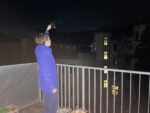
Cold, but only because I didn't expect to stand outside, so I didn't have my coat, hat and gloves on. More bird song today. I was around 7 Centigrade. Clear, clear skies. So many stars.
2024-01-27 11:34:33
Sasha Engelmann
Abney Park Cemetery, London, United Kingdom
United Kingdom
NOAA-18




Abney Park Cemetery was muddy, wet, and full of dog walkers and strollers on this Saturday Morning. The density of the winter trees and the humidity of the air created a mist that felt appropriate to the vine-covered tomb-stones, monuments and crosses. I thought of the way early radio enthusiasts heard 'something in the static' that spoke of other spaces and times of the past and future. I pointed my antenna at the moist ground, wondering if the static would pick up frequencies underneath.
2024-01-26 19:06:51
Soph Dyer
Augarten, near the gun towers, Wien, Austria
Austria
NOAA-18


Today, the bird song was louder than the beep-beep of the satellite. Gardeners in the park were clearing the dead leaves into piles. I heard that it's better to leave them to decompose and return their nutrients to the trees from which they fell – they don't kill the grass. The temperature is mild and there is no wind, but there is a heavy blanket of cloud. Although it is nearly midday, the cars have their headlights on. This evening I willl go to the 'Defend democracy' protest outside the Austria Parliment.
2024-01-24 10:32:45
Sasha Engelmann
Royal Holloway University of London, United Kingdom
United Kingdom
NOAA-18


In comparison to the windy and wet weather of Storms Isha and Jocelyn over the last few days, today feels calm, even balmy. I walked to 'Founder's Field', the highest point on the university campus, to set up my spare V-Dipole and test a new dongle (RTL-SDR V4). The atmosphere of the university is also calm, as if the machines of departments, university managers and administrators are hibernating.
2024-01-23 21:33:09
Soph Dyer
On the North West corner of Diepold Park, Wien, Austria
Austria
NOAA-18

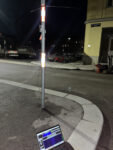
I think heard a Great Tit calling this morning. It rained today and feels milder. I was meant to be on a night train to the Netherlands this evening but German train drivers have walked out. They will be on strike until Monday. I have cancelled my trip. Life feels turbulent at the moment.
2024-01-22 10:57:26
Sasha Engelmann
Hackney Downs, London, United Kingdom
United Kingdom
NOAA-18


Wind has changed the surface of the park and neighbourhood overnight, leaving large piles of torn leaves, knocking down branches, ripping coverings off parked motorcycles and bending 'for rent' signs on their axes. Whistles and howls echo through the streets and across the downs, joined by the sirens of ambulances and fire trucks. On local radio this morning there was mention of wifi and phone service cuts. This is London in the aftermath of Storm Isha, which has swept across the southeast overnight. Its long arm is dramatically visible in the satellite image I captured today – curving over France, Germany and the continent, and spiralling toward Sweden and Norway.
2024-01-21 11:08:40
Sasha Engelmann
Downs Road, London, United Kingdom
United Kingdom
NOAA-18


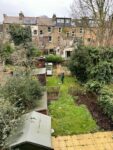
Storm Isha has been sweeping across the UK this weekend, with amber weather warnings issued by the Met Office in many parts of Wales, Scotland and Western England. Though the conditions weren't that bad in London, I stayed in the back garden of our flat to keep sheltered from wind. A curious cat named Dylan came padding quietly up behind me to check out what I was doing.
2024-01-20 11:20:08
Sasha Engelmann
Hackney Downs, London, United Kingdom
United Kingdom
NOAA-18


It was a gray blustery morning in Hackney Downs. A man with a dog stopped nearby and asked 'what's that mate?' to which I replied 'a radio antenna, I'm trying to catch the signal of a weather satellite'. He gave a thumbs up and said 'so it's a weather thing? a weather thing?' I nodded, and he walked off without further questions. I had apparently given a satisfactory answer. Yet I wondered what kind of 'weather thing' he was convinced I was operating.
2024-01-19 11:32:55
Sasha Engelmann
Downs Road, London, United Kingdom
United Kingdom
NOAA-18
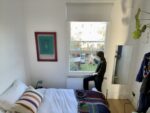
I was in between two meetings on Microsoft Teams – one finishing and another one starting at 11:30. NOAA-18 was due to start its orbit over London at 11:31. I wondered – was there time for the weather? I tried to 'create time' by writing a 'I'm five minutes late' message to the person I was due to meet, and took my laptop to the bedroom to the nearest possible window to receive the satellite pass. As I was counting the minutes of the pass I was also counting how late I would be. I wished I could stay in the 'weather' of the bedroom and sunny back garden, and avoid the 'weather' of the Teams meeting room!
2024-01-18 11:44:26
Sasha Engelmann
Hackney Downs, London, United Kingdom
United Kingdom
NOAA-18


The weather was bright and gusty, and bitingly cold. Hackney Downs was wide open and clear, so clear it made me wonder what it was before there was London. There were so many dogs being walked in Hackney Downs – I saw one person holding eight dogs – and a short-haired Australian Shepherd ran up to my laptop during the satellite pass. I stopped to pet her, and I wondered if her energy was having an influence on the satellite image.
2024-01-17 21:49:09
Sasha Engelmann
Downs Road, London, United Kingdom
United Kingdom
NOAA-18


I had finally made it home after a fourteen hour day at work at the university and on many commuting trains. It's been so cold in the UK with a current of Arctic air reaching down across northern Europe this week, but it has also been very clear and bright- I could see the stars as I reached my antenna off the kitchen windowsill.
2024-01-16 12:09:16
Sasha Engelmann
Hackney Downs, London, United Kingdom
United Kingdom
NOAA-18

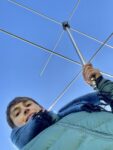
The weather today is gorgeous – bright blue skies and golden sunlight. All morning the DJs on NTS radio have been remarking on the beautiful (if cold) weather conditions. To soak up the weather as much as I could, I found a spot in the middle of the widest field in Hackney Downs and set up my ground station. I was exposed in other ways too- many people stared and pointed at me from a distance, but none came near.
2024-01-16 11:29:29
Soph Dyer
Augarten, Wien, Austria
Austria
NOAA-18


A piercingly clear day. Fresh. Chilly! I was glad to feel the sun on my face.
2024-01-15 21:29:44
Soph Dyer
Wien, Austria
Austria
NOAA-18




Cold, dark, damp. I feel "under the weather". Today, I stayed home and experimented with the loop antenna. To adapt the antenna to receive Very High Frequency transmissions, I squashed it into folded dipole. Despite what the online instructions recommended, this seemed to make things worse. I reverted to the open loop – the circumference of which is just under a half wavelength of 137 MHz. It okay but was highly directional. I will try again soon.
2024-01-15 10:41:52
Sasha Engelmann
Clapton Pond, London, United Kingdom
United Kingdom
NOAA-18
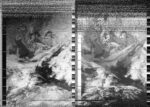

Half of Clapton Pond was frozen on the surface, the other half (receiving the sun over the tops of buildings) was not. Pigeons stayed out of the shade, milling about the edge of the pond and periodically bursting into the sky. In the decoded satellite image, I noticed that the mainland UK appears sandwiched between two bodies of east-moving cloud, receiving its own intermittent winter sun.
2024-01-14 11:02:15
Sasha Engelmann
Downs Road, London, United Kingdom
United Kingdom
NOAA-18

I stayed almost entirely inside during this satellite pass, in sweatpants, slippers and an oversized jumper I had found in a vintage store in Buenos Aires. Even before I stuck my arm outside the kitchen window to catch the last half of the satellite pass, the antenna was picking up NOAA-18 inside the flat. This made me wonder about the porousness of our flat to the 'weather' of radio. Nicola took a look at my satellite image, he pointed out a cluster of white pixels where Mt Etna should be: the volcano is snow covered!
2024-01-12 11:26:31
Sasha Engelmann
Downs Road, London, United Kingdom
United Kingdom
NOAA-18

I tried to stay away from the weather today as my asthma had kept me up the previous night and I was worried about too much time in the cold. I leaned out my second story window to catch the segment of the satellite pass that managed to creep in between the Victorian buildings on my street.
2024-01-09 11:56:24
Sasha Engelmann
Hackney Downs, London, United Kingdom
United Kingdom
NOAA-18


I made a poor choice not to bring a hat and gloves when I went out for the pass today, as Hackney Downs was sunny but extremely cold and windy. Even the dogs running in the park had sweaters and multicoloured outfits on. A man stopped and asked what I was doing, and a woman and a dog happily took some photos of me.
2024-01-09 11:13:34
Soph Dyer
Malieveld, Den Haag, The Netherlands
The Netherlands
NOAA-18



It’s bloody freezing!
Today’s image is from the workshop demonstration.
I am too brain-fried from teaching to write more.
2024-01-08 12:08:23
Sasha Engelmann
Hackney Downs, London, United Kingdom
United Kingdom
NOAA-18

Snowflakes started to fall on my laptop during the satellite pass. They were very small and fragile, fluttery fragments of crystalline ice, not heavy like hail or water.
2024-01-06 11:26:55
Sasha Engelmann
The Bluffs at Pacific Palisades, California, USA
USA
NOAA-18





From the 'point on the bluffs' in Pacific Palisades, Los Angeles, I could see as far as Palos Verdes and Catalina Island. It was a bright, warm day, and many people were out walking. The satellite 'set' over the Pacific Ocean- I felt I could hear it for much longer than I normally can from a place in the city, as there was only air between me and the horizon.
2024-01-02 22:17:00
Soph Dyer
Fondamente Nove, Venice, Italy
Italy
NOAA-18

Damp cold, overcast and dark. My second failed satellite pass! Nicola was helping but dropped one of my antenna poles onto the marble of Fondamente Nove, crushing the screw thread. I also for my USB adapter. I am very tired.
2024-01-02 10:35:18
Sasha Engelmann
Heather Village, Culver City, California, USA
USA
NOAA-18



I experienced the weather of a private children's playground on a bright morning in January in LA. I could hear small children's voices echoing out of the Montessori School nearby, and the creaking of the playground equipment as swings and ladders moved.
2024-01-01 10:48:44
Sasha Engelmann
Regent Street, Culver City, California, USA
USA
NOAA-18


I was on a palm tree-lined neighbourhood street in Culver City, around the corner from the Diorama-Museum of Bhagavad-gita, where I had booked a tour for the morning of January 1st. I balanced my laptop on the hood of my brother's car and held the antenna to the clear blue sky. The weather was bucolic, as if even the light had slowed down.
2024-01-01 11:15:10
Soph Dyer
Carezza, Italy
Italy
NOAA-18



There was heavy snowfall yesterday afternoon and overnight. This morning it is sunny and clear with no wind. I was able to take my winter coat off.
2023-12-31 11:02:00
Sasha Engelmann
Fox Hills, Culver City, California, USA
USA
NOAA-18

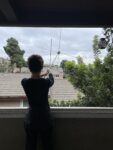
The air is so clean today- the rain has washed and blown away the particles that caused the air pollution spike at the end of last week.
2023-12-31 11:38:40
Soph Dyer
Carezza, Italy
Italy
NOAA-18

Very cold, a few snowflakes in the air. I failed to press record!
2023-12-30 11:46:17
Soph Dyer
Lago Inferiore, Mantova, Italy
Italy
NOAA-18


Still, damp air, mild. Beautifully misty. Mottled sky.
2023-12-29 11:51:45
Soph Dyer
Near Mantova, Italy
Italy
NOAA-18


Low, thick cloud cover. The air was warm and moist. Low light despite it being nearly midday.
Standing between the fields, there were no obstructions other than telegraph and electricity pylons. It was amazing to as “see” the southern boarder of Algeria.
2023-12-27 22:05:20
Soph Dyer
Bergamo, Italy
Italy
NOAA-18


Hazy, damp cold. First night in Bergamo.
2023-12-27 10:08:41
Sasha Engelmann
Culver City, California, USA
USA
NOAA-18
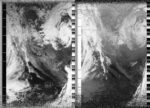

It is a sunny and bright morning. As many people are working today after a few days holiday break, the air is filled with sounds of vacuum cleaners, washer/dryers, leaf blowers and home DIY equipment.
2023-12-26 10:20:51
Sasha Engelmann
Culver City, California, USA
USA
NOAA-18




The humidity is unusually high today- around 88% The local park was very vibrant and active, with a young soccer team and a group of people throwing frisbees. On my way back home I noticed several policemen checking parked cars along Green Valley Circle. One group had what looked like a kit with a brush- I wondered if this was for fingerprints. Had the humidity of the air affected which fingerprints could be lifted off car doors, handles and windows?
2023-12-25 10:36:26
Sasha Engelmann
Culver City, California, USA
USA
NOAA-18


There is a soft light today, like the air is filled with small reflecting particles, whether water droplets or dust.
2023-12-24 10:46:10
Sasha Engelmann
Culver City, California, USA
USA
NOAA-18



The sun was very bright and the air so warm today, I ended up in a t-shirt while capturing the satellite pass. The park was lively as a soccer team started warming up and a group of walking womxn did laps on the sand trail. I was on a video call during the whole satellite pass, and this made me reflect on the ways the signal from my phone was relaying through a nearby cell tower and onward to the other side of the planet, while the NOAA satellite above me sent radio waves to the ground – I wondered, did the signals touch?
2023-12-23 21:14:06
Soph Dyer
Wien, Austria
Austria
NOAA-18

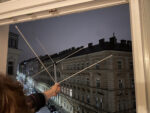
Mild, very windy, raining
2023-05-18 12:48:37
Ankit Sharma
West Lafayette, Indiana, USA, United State
United State
NOAA-18


Clear Sky, 20 deg Celsius temperature.
2023-03-13 11:43:00
Faye Leonie Fine
London, New Cross, UK
UK
NOAA-18
windy, excited, bright but cloudy, noisy
2023-03-13 11:39:00
Centre for Research Architecture: team 1
London, UK
UK
NOAA-18

Wind! Breeze as though we were on a Kent-ish beach
2023-03-13 11:39:00
Leila_Asli_Heloise_Susan
GOLDSMITHS UNIVERISTY OF LONDON, UK
UK
NOAA-18

Overcast, Blustery Wind, Patches of Blue
2022-09-30 10:32:00
DeAzevedo
Rio de Janeiro, Brazil
Brazil
NOAA-18



2022-08-14 12:44:15
DaliMDN
Grezieu La Varenne, France
France
NOAA-18


After weeks of dry, extremely hot and sunny days, the sky was thickly loaded with light greys and white clouds.
Some thunder claps woke me up in the early morning and the rain started to pour heavily, watering finally the earth which suffered from drought. That morning, the temperature dropped for almost 10 C degrees in a couple of hours.
2022-05-08 11:35:31
Garyfallenia Tsinopoulou
Athens, Asteroskopeio, Greece
Greece
NOAA-18
2022-08-02 22:23:34
DaliMDN
Saint Barthelemy, France
France
NOAA-18



During the pass I was facing the Atlantic Ocean from Grand Cul de Sac beach. The night was dark, warm and breezy. I could hear the sound of the waves slowly lapping the sandy shore while observing the stars thanks to a clear sky. The forecast caption shows the Atlantic Ocean and the Caribbean sea, spanning North to South from Florida to the French Guiana.
2022-07-16 11:44:21
Olga
Warsaw, Poland
Poland
NOAA-18




2022-05-08 11:37:41
subrealic
Athens, Greece
Greece
NOAA-18

clear view, some clouds
2022-05-08 11:37:03
Matina K.
Athens, Greece
Greece
NOAA-18
2022-05-08 11:36:00
Lily Has
Athens, Greece
Greece
NOAA-18

The weather these days is so unpredictable that I brought a jacket with me. That was really unnecessary as it was really warm and sunny. I was afraid that my computer would overheat and crash again.. I am used to sweat and feel warm, but my devices are not.
2022-05-08 11:36:00
chris
Athens, Greece, Greece
Greece
NOAA-18



interesting
2022-05-08 11:33:42
open-weather
Athens, Greece
Greece
NOAA-18

2021-10-31 16:12:30
Catherine Fletcher
Norfolk, VA, United States
United States
NOAA-18
mostly sunny, light breeze, 14 degrees C/58 degrees F
2021-10-31 10:59:12
Steve Engelmann
Los Angeles, CA, USA
USA
NOAA-18


2021-10-31 11:50:19
L. Paul Verhage
Homedale, Idaho, USA
USA
NOAA-18

2021-10-31 10:05:49
Aimee Juhazs
Joaquin Ezcurra
Parque Nacional Ciervo de los Pantanos, Campana, Argentina, Argentina
Argentina
NOAA-18





Today was a day of unexpected low temperatures, after many days of intense heat in the region of Buenos Aires and surrounding areas. After a week of record high temperatures -this has been the hottest October in record- the, but the arrival of a Sudestada, cooled the region. The Sudestada (Southeast blow) is a common meteorological phenomenon in the region of Río de la Plata and surrounding areas, of cold winds from the south to the southeast quadrant, which saturates polar air masses with moisture. Since the Río de la Plata is immensely wide and rather shallow, this wind has been historically associated with rising waters and floods. As we were recording the NOAA satellite passes, the wind was blowing at roughly 30kms per hour – and increasing- from the SE, and the temperature falling. The moving mass of air lifted the dust of a dirt road, and at times, the screen of my laptop moved when it received a sudden wind gust. The arrival of this breeze had us a little worried if it would be accompanied with precipitation, but thankfully no, we could do the whole satellite pass without getting wet. The wind did give us a sense of excitement and connection with what we were doing. In this respect, as the sky was overcast, we reflected on how the satellite download link was offering us a glimpse above the very same clouds we were seeing.
2021-10-31 11:06:30
George Ridgway
Melbury Abbas, England
England
NOAA-18





Very gusty and squally. Open skies and with intermittent passing cloud cover in strong winds. Wind from South Westerly direction.
2021-10-31 12:01:59
Olivia Berkowicz
Paris, France
France
NOAA-18




The weather in central Paris around noon was predominantly sunny and quite warm for the season. It didn't rain as it has been doing for the last few days, and I was surprised. What was also peculiar, was the warm temperature. It's almost the beginning of November and I had to take off my jacket and only wear a jumper. I have been wondering whether Paris really is this warm around this time of the year. I grew up in Scandinavia, and autumn is usually quite cold and crisp. I worry sometimes that things are not quite right with the temperature and amount of precipitation that I experience here.
2021-10-31 11:01:12
Aaron McCarthy
Alison Scott
Glasgow, Scotland, Scotland, UK
Scotland, UK
NOAA-18



I normally check the N2YO NOAA satellite predictions alongside the MET office weather forecast, trying to pick ‘good’ passes on ‘good’ days. Because we’re heading into winter, with shortening days and darkening skies, this doesn’t always happen. Today is Halloween, Samhain, marking the end of the harvest and the start of winter; thought to be a liminal time when boundaries thin between worlds. Today I would be out whatever the weather to take part in the nowcast, to tune in to the transmission of an orbiting body. I decided this morning to stay away from the COP26 crowds: stay close to home for a quick escape from the rain, setting up in my usual spot in a park in the Southside of Glasgow. I had planned to head down to the river – get close to the summit site, the UN territory, and the many offshoots – but couldn’t think of an open space (not being used, closed or heavily policed) where I could see the sky.
Today the weather became an obstacle – as it does when it makes itself known – and a challenge. How to protect a laptop and a tangle of cables? I can handle rivlets running up sleeves, raindrops on glasses, and there are waterproofs designed for my body. Still, for a city that gets a lot of rain, there’s very little shelter in public places. With the help of my partner I fashion protection for my ground station by balancing two umbrellas on a picnic blanket, on a bench, up the grassy hill in the park. He very kindly keeps the brolly-shelter set up under control while I tune in to the satellite, pointing the antenna to the North North East, into the rain cloud hanging over the city. He points out to me I’m aiming towards the SECC (the COP26 summit site) – on a clear day this is a good vantage point. It’s pretty dreich: consistent heavy rain, but not quite an absolute battering. Normally I would stretch my arm out more, move around with the satellite’s transmission as it moves from NNE to SSW, but this time just stay low and move less in an attempt to keep the dongle and cables as dry as I can. This makes me a bit clumsy and the recording a bit short. I don’t know if the umbrellas have an effect or likewise the extra-closeness of bodies to the antenna. The sound of the satellite transmission comes brightly through the static, through the cloud. A woman appears behind me and asks a question. I think I must look like I’m holding an umbrella without the fabric. It’s a variation of the usual response I’ve got to being in public with an big turnstile antenna (‘what is it you’re trying to do?’) but I don’t hear her at first as I’m listening to the radio transmission with headphones on. Wet dogs run about at our feet. She is friendly, not that interested, just tidying up her allotment in the plot in the park and noticed something unusual. She tells me she is drenched but if you wanted to stay dry in Scotland you’d never do anything, would you?
2021-10-31 11:00:17
Sasha Engelmann
Soph Dyer
The Photographers' Gallery, London, UK
UK
NOAA-18




We woke to the sound of sheet rain. The weather apps on our phones marked our location on the edge of cyclonic weather system, its eye over Ireland. A yellow weather warning was in place for the South of the England. On way to The Photographers' Gallery, our location for the satellite pass, a branch fell on the car’s windscreen. A man on the radio ranted about the hypocrisy of world leaders flying into COP on “their private jets”, while he was expected to holiday on the Gower Peninsula. An Extinction Rebellion spokesperson joined in, live from Glasgow, only to be thrown off message by hostile questioning. We were in heavy weather!
The conversation in the car shifted to the more-than-meteorological weather, of London and the UK. What are the conditions that weigh and press on us and the people we know? London is vibrant with events and open pubs after years of lockdown, yet we know we do not weather the unfolding pandemic equally. There are signals of political and social movement. University workers are voting this week to potentially take strike action due to precarious labour conditions, an unacceptable gender pay gap and unequal policies in higher education.
By the time we reached the gallery, the rain had stopped. During the satellite pass it was still grey and squally, but by the end of the pass there was bright blue sky.
In background, the spinning screens of the BT tower announced the first day of COP26.
2021-10-31 10:21:01
Anna Pasco Bolta
Munich, Germany
Germany
NOAA-18

2021-10-31 10:22:23
Jasmin Schädler / FamSchä
Schloss Solitude, Gerlingen, Germany
Germany
NOAA-18



The weather this morning was beautiful and since we just ended daylight saving last night it was already really bright and also quite sunny. The temperature felt very agreeable even at 10 degrees due to the sun. The fog had by now disappeared – this is my second pass of the day. By now the clouds were of cirrocumulus and cirrus kind. The second location I chose for sensing was further outside the city on the balcony of a small castle. It was more windy there and the trajectory was partially blocked by surrounding buildings which has substantial influence at an elevation of 47°. However, the reception was much clearer most of the time than during the first pass with an elevation of 77°. Theoretically the pass started at 18 past but I was only able to receive a proper signal at around 22 so I also only started the recording at this moment in time.
2021-10-31 10:21:00
Flow
Venice, Italy
Italy
NOAA-18

weather was good but cloudy
2021-10-31 11:32:06
Ankit Sharma
Mumbai, India
India
NOAA-18

Very hot and Humid as well as Very very dusty.
2021-10-31 09:51:39
Ankit Sharma
Mumbai, India
India
NOAA-18

weather had changed to hot and humid . More windy and clear sky. Peak Increase in Dust up to the limit that my laptop had a layer of dust on it when checked post reception. heavy pollution was felt .
2021-10-31 09:42:51
Chonmapat Torasa
Bangkhen, Bangkok, Thailand
Thailand
NOAA-18

2021-10-31 10:37:16
Natasha Honey
Newcastle, NSW, Australia
Australia
NOAA-18




Bright Sunny morning, A few clouds, but generally clear. A bit warm with a soft breeze.
2021-10-30 11:37:17
Sofia Cyclone
Santa Vittoria In Matenano, Italy
Italy
NOAA-18

It seemed like the weather was in my favor. I positioned my DIY Satellite Station on a sunny spot on the field. The day was sunny, and I felt warm sitting in the sun. However, I could tell I was “experiencing” the winter weather by looking at the cirrus clouds in the sky and by the sudden cold breeze, that would surprise me when I was concentrated holding the antenna and looking at the SDR waterfall.
2021-10-29 11:47:18
Sofia Cyclone
Santa Vittoria in Matenano, Italy
Italy
NOAA-18

2021-10-28 09:30:49
Cédrick Tshimbalanga
Kinshasa, DR Congo
DR Congo
NOAA-18





FR: Mon expérience pendant cette période était que je n'ai jamais travaillé avec la météo, et et non plus avec des antennes, mais j'étais très impatien pour voir les images satélitaire et aussi une chose que j'ai aussi aimé c'est que j'ai apris a capté le passe satelite. C'était très difficile au début mais après très facile et un peu comme un jeu ou je dois reclter des images avec précision mais aurienté par un son c'était trés interéssant et j'ai beaucoup aimé. EN: My experience during this period was that I never worked with the weather, nor with antennas, but I was very impatient to see the satellite images and also one thing that I also liked is that I I learned the satelite pass. It was very difficult at the beginning but afterwards very easy and a bit like a game where I have to capture images with precision but being directed by a sound it was very interesting and I liked it a lot. (English translation by Sasha Engelmann)
2021-09-19 03:51:53
Lothringer 13 Halle
,
NOAA-18

2021-09-14 03:51:54
Lothringer 13 Halle
,
NOAA-18

2021-09-11 03:51:54
Lothringer 13 Halle
,
NOAA-18

2021-09-06 03:51:54
Lothringer 13 Halle
,
NOAA-18

2021-09-02 03:51:54
Sasha Engelmann
,
NOAA-18

2021-08-20 03:51:54
Lothringer 13 Halle
,
NOAA-18
2021-07-23 03:51:55
Lothringer 13 Halle
,
NOAA-18

2021-07-20 03:51:55
Sasha Engelmann
,
NOAA-18

2021-07-13 03:51:56
Lothringer 13 Halle
,
NOAA-18

2021-03-28 03:51:56
Fanteugia
,
NOAA-18

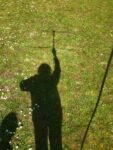
2021-03-28 03:51:56
flow
,
NOAA-18

2021-03-28 03:51:56
Olivia Berkowicz
,
NOAA-18

Decoding with Akademie Schloss Solitude fellows, second day of decoding
2021-03-05 03:51:56
George Ridgway
,
NOAA-18

2021-01-24 03:51:57
FamSchä
,
NOAA-18


This was my dad's very first satellite sensing session. We did it in the open field on a beautiful sunny morning and a pass at almost 90 degrees.
2021-01-23 03:51:57
FamSchä
,
NOAA-18


This image was received simultaneously with a friend in a different location. We had exchanged the passing times earlier in the day and then both sensed from our locations and shared our images later on. The sensing was done domestically on the porch – just stepping outside to check the satellite.
2020-11-07 03:51:58
n.n.n. collective
,
NOAA-18


The recording was done in the proximity of Kunstverein Wagenhallen e.V. The occasion was the preparation of an exhibition dealing with Hegel's universalism and its influence on location and mapping as political practices. The area is industrial and surrounded by a lot of large metal constructions.
2020-10-07 03:51:58
Sasha
,
NOAA-18

2020-10-07 03:51:58
Yoshi
,
NOAA-18

2020-09-22 03:51:58
Yoshi
,
NOAA-18
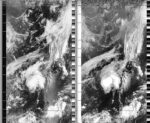
2020-09-21 03:51:58
FamSchä
,
NOAA-18

This was a family effort. Three people involved in the recording, two did it for the first time. It was an open field in the country side, clear blue sky. Many passersby were irritated by the activity. Afterwards we listened to some radio together.
2020-09-21 03:51:59
Yoshi
,
NOAA-18

2020-09-06 03:51:59
Ankit Sharma
Mumbai, India
India
NOAA-18

Sky – Totally Clear, Very sunny and warm Atmosphere, Ambient Temperature – 36 Degree Celsius. Country – India.
2020-09-06 03:51:59
zwettstein
Seattle, Washington, USA
USA
NOAA-18

2020-09-06 03:52:00
Bill
Reston, Virginia, USA
USA
NOAA-18

2020-09-06 03:52:02
Soph Dyer
London, United Kingdom
United Kingdom
NOAA-18




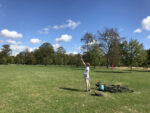
2020-09-06 03:52:02
L. Paul Verhage
Homedale, Idaho, USA
USA
NOAA-18

2020-07-16 03:52:03
Sasha
,
NOAA-18

2020-05-17 03:52:03
Sasha
,
NOAA-18
